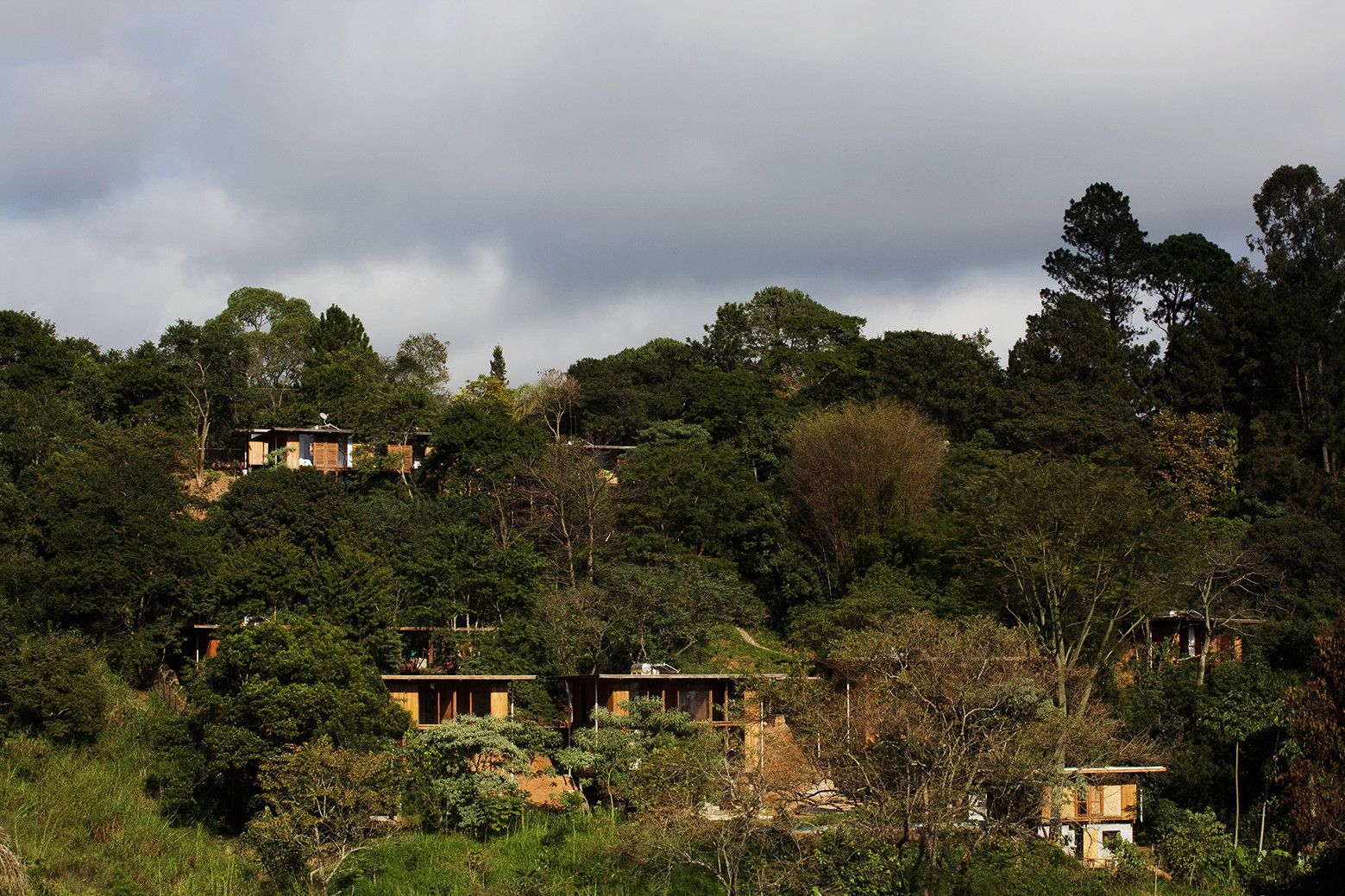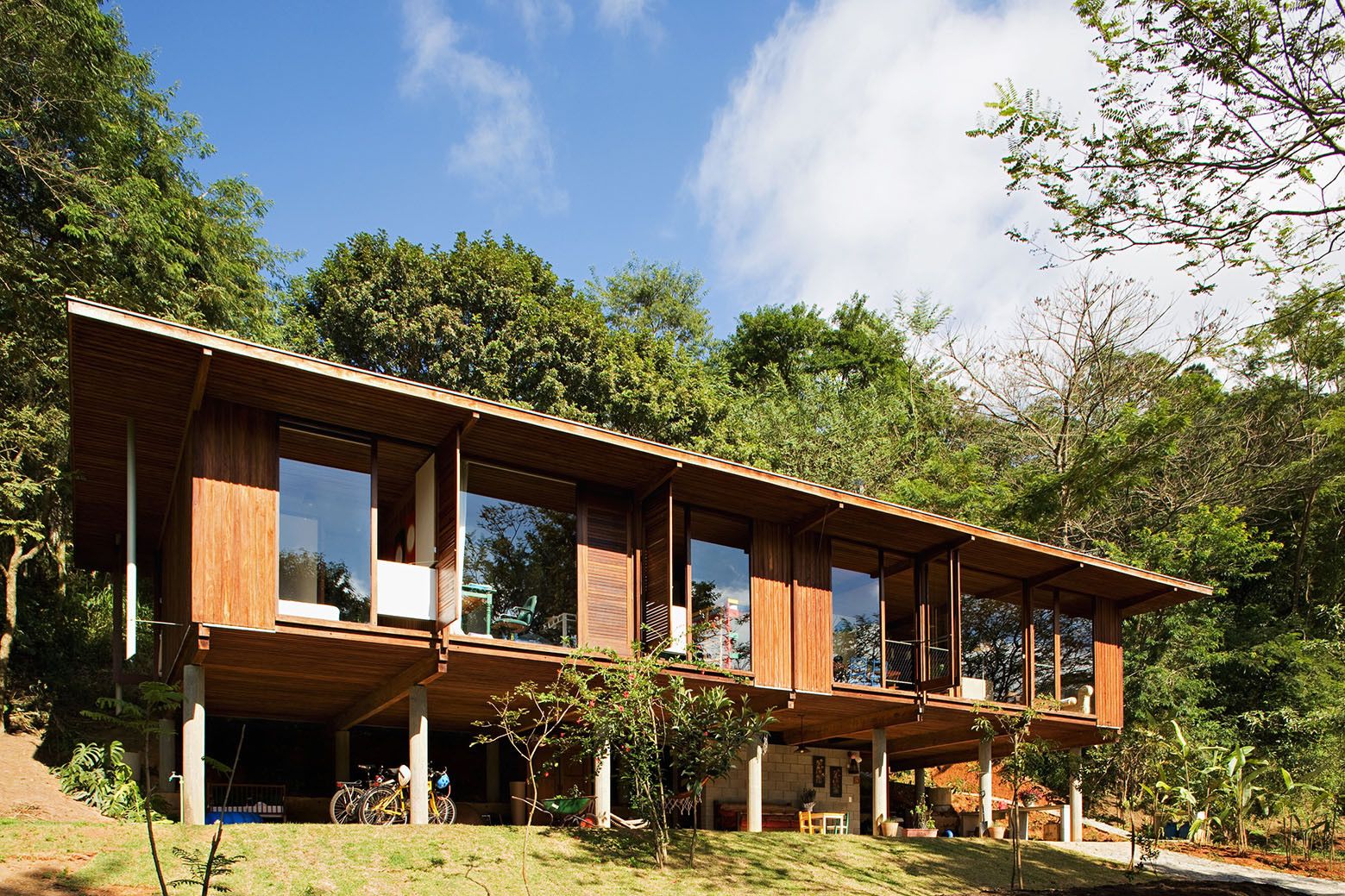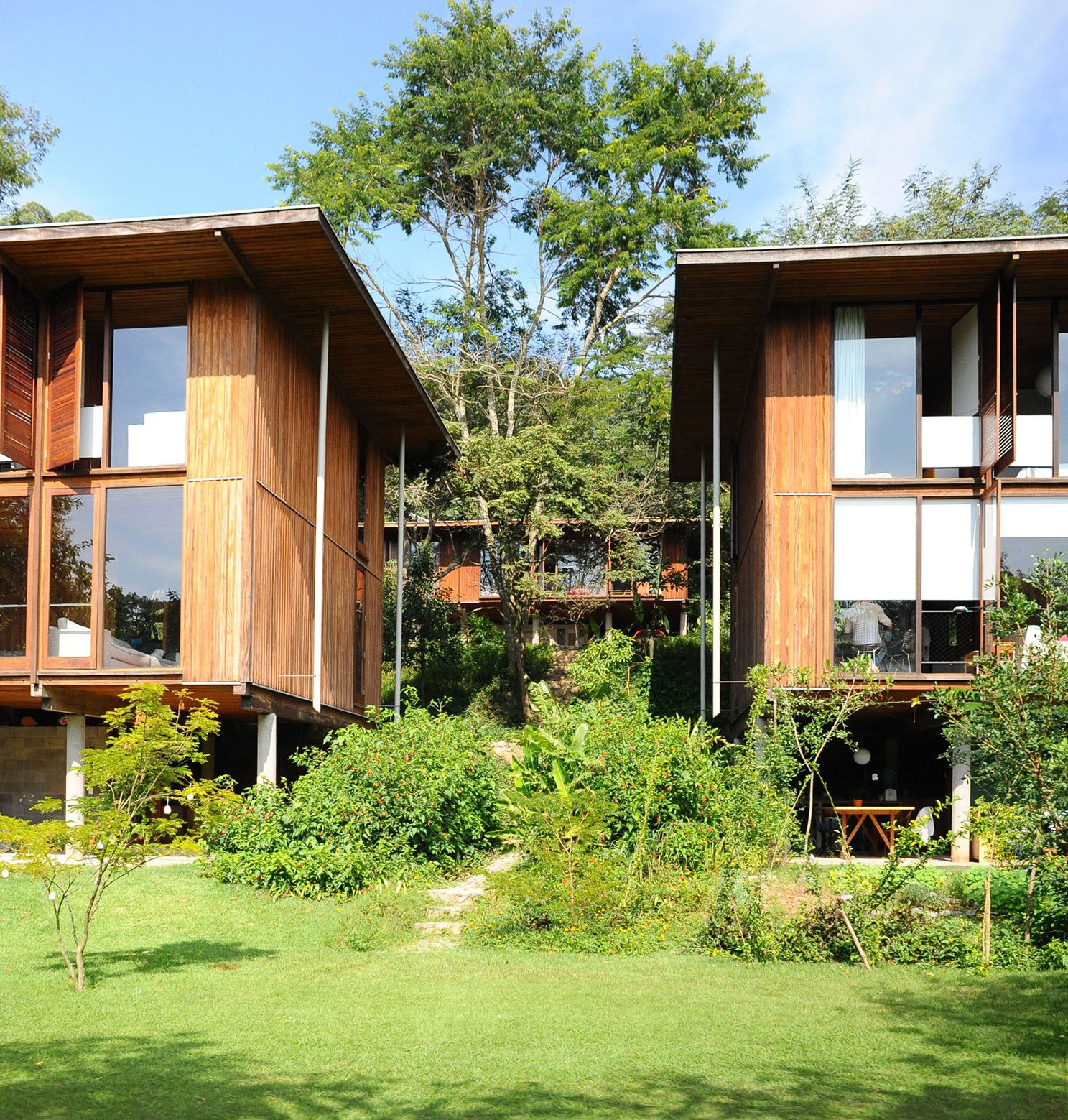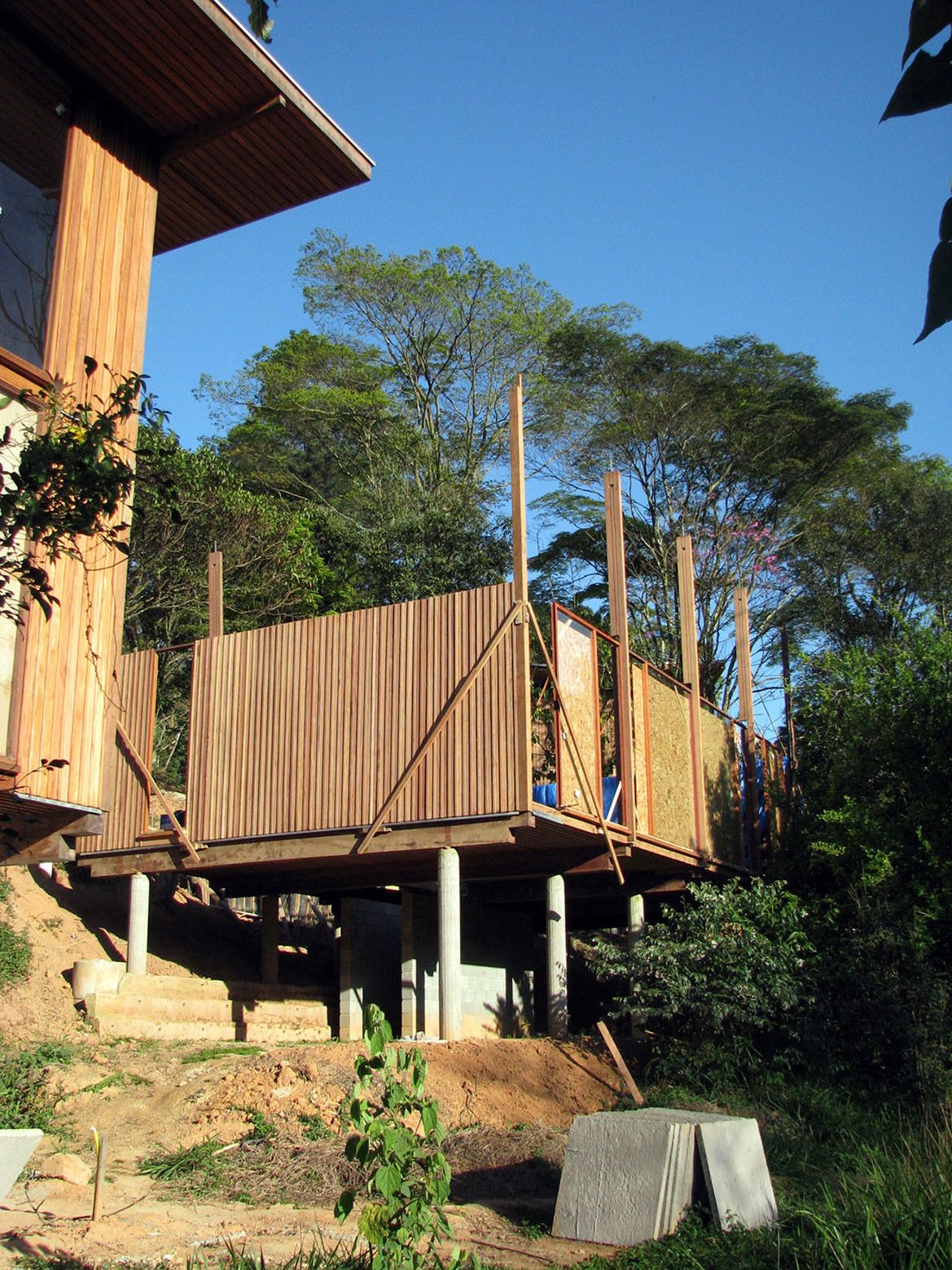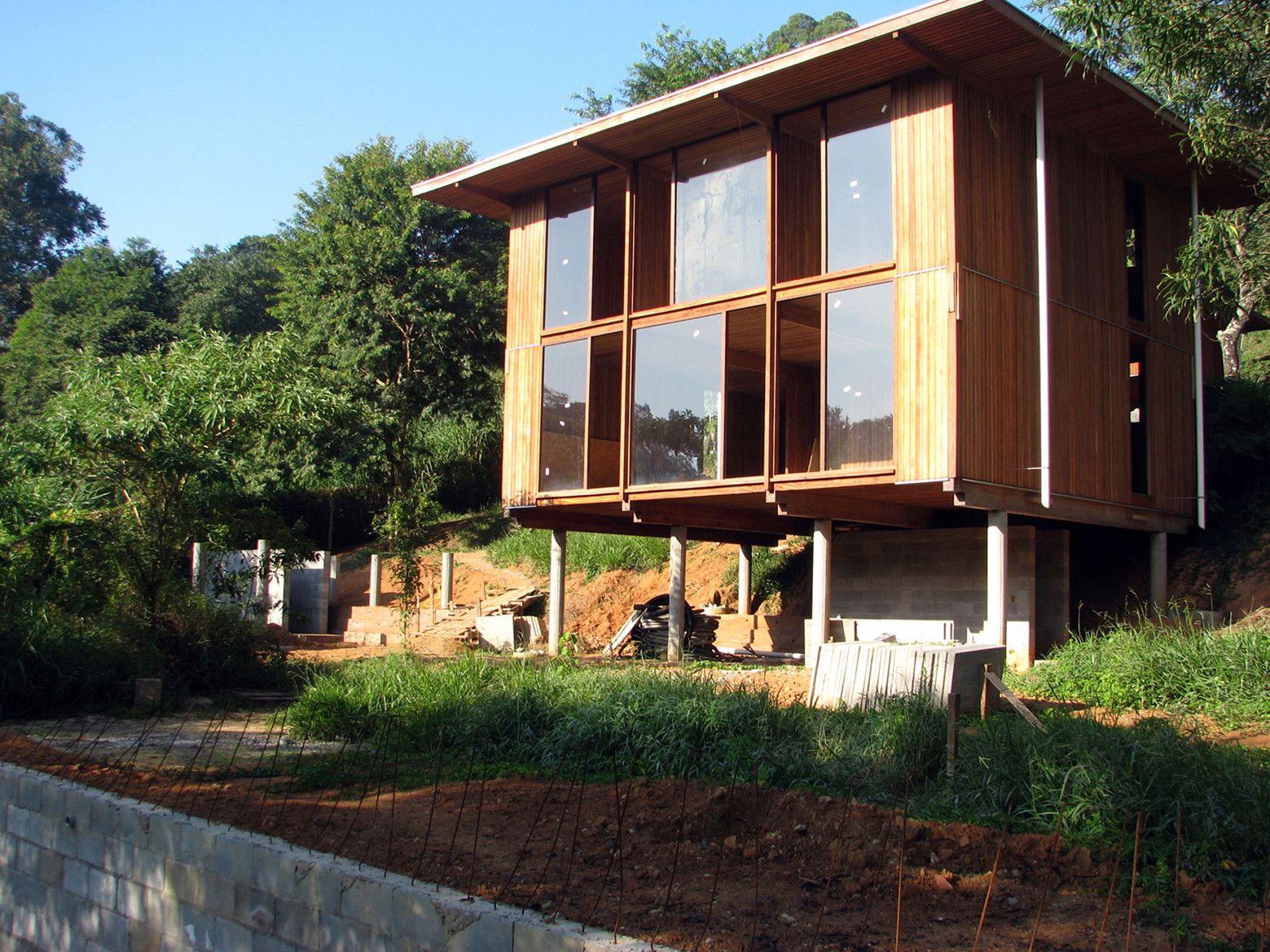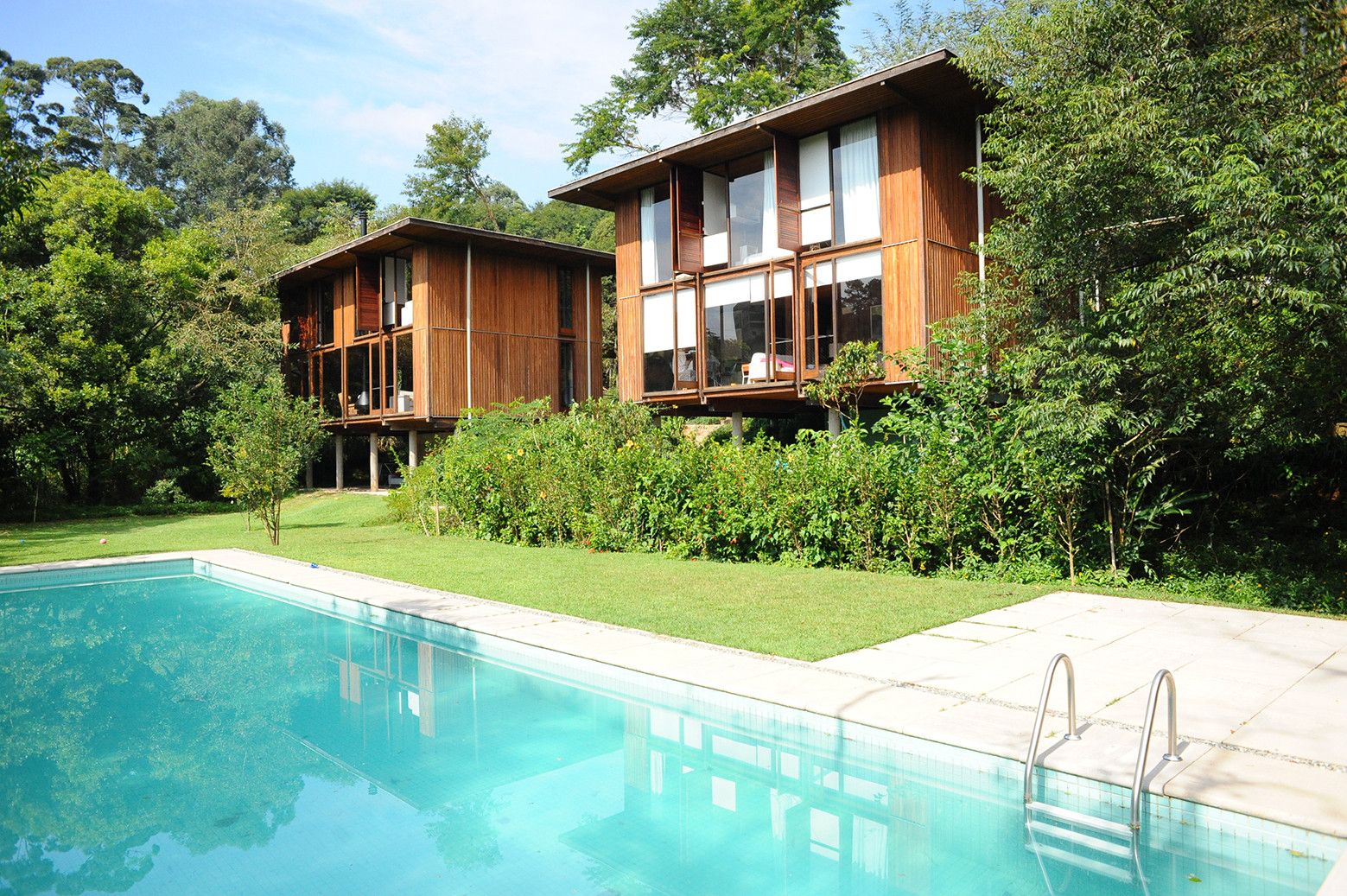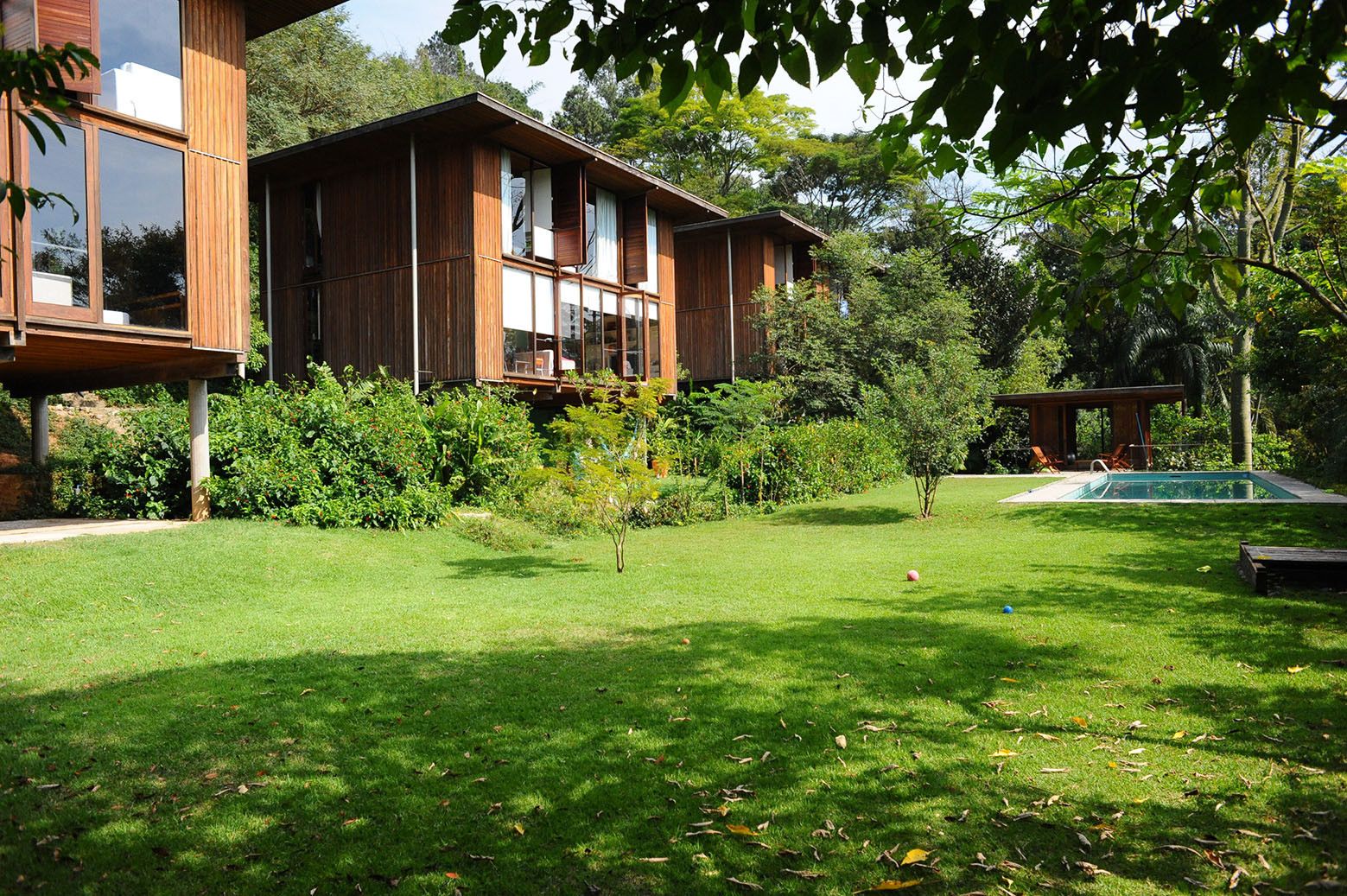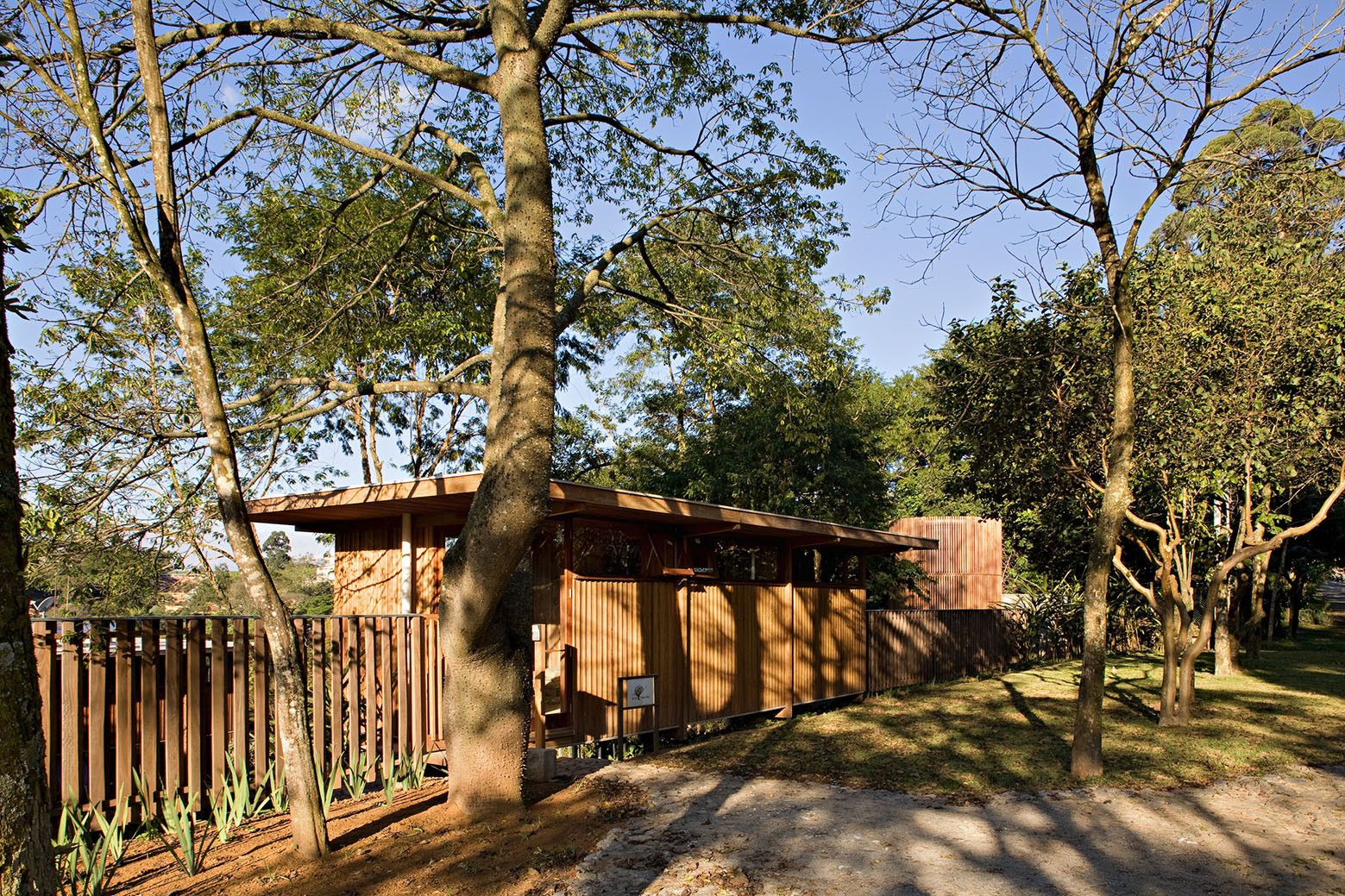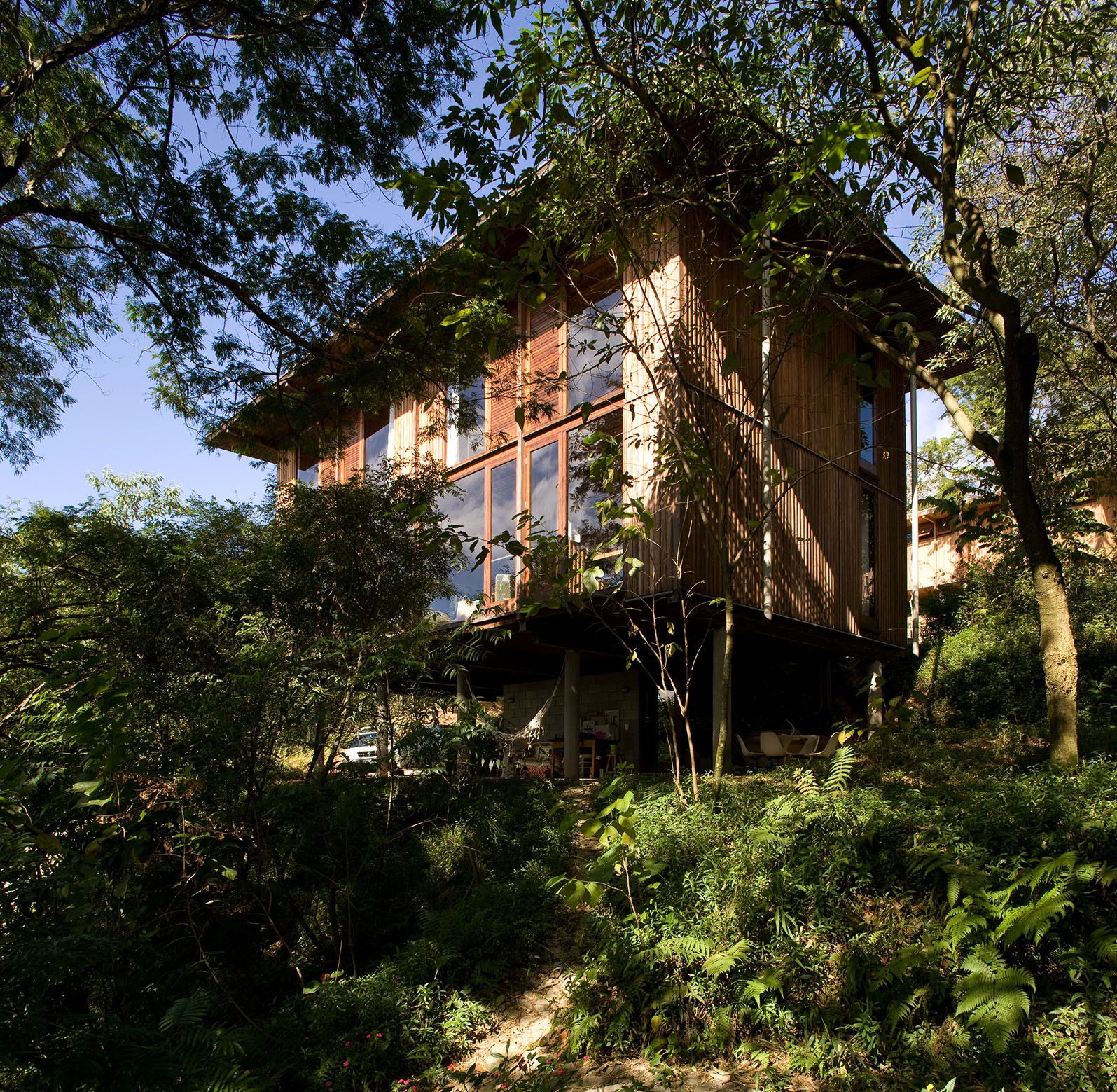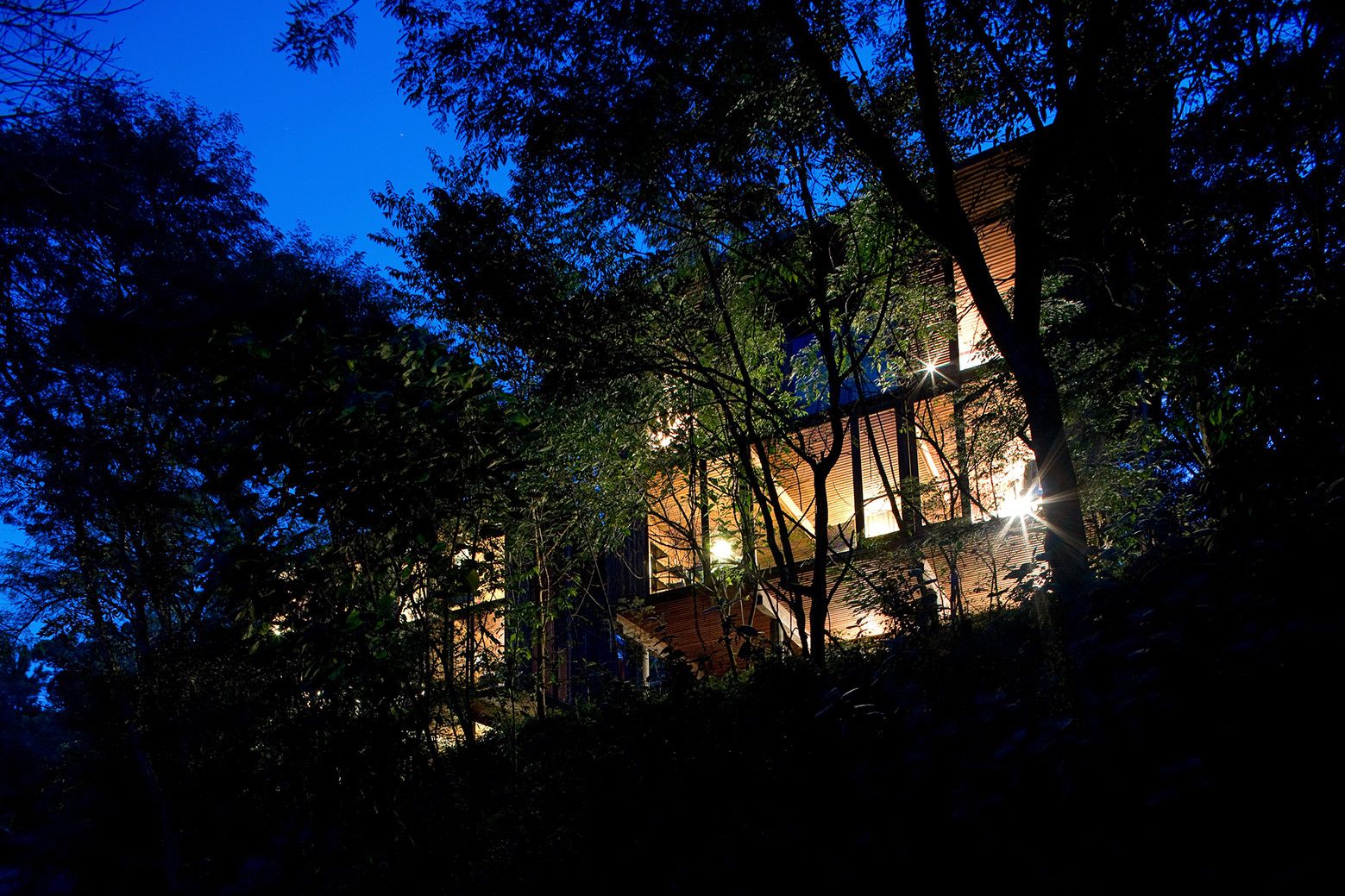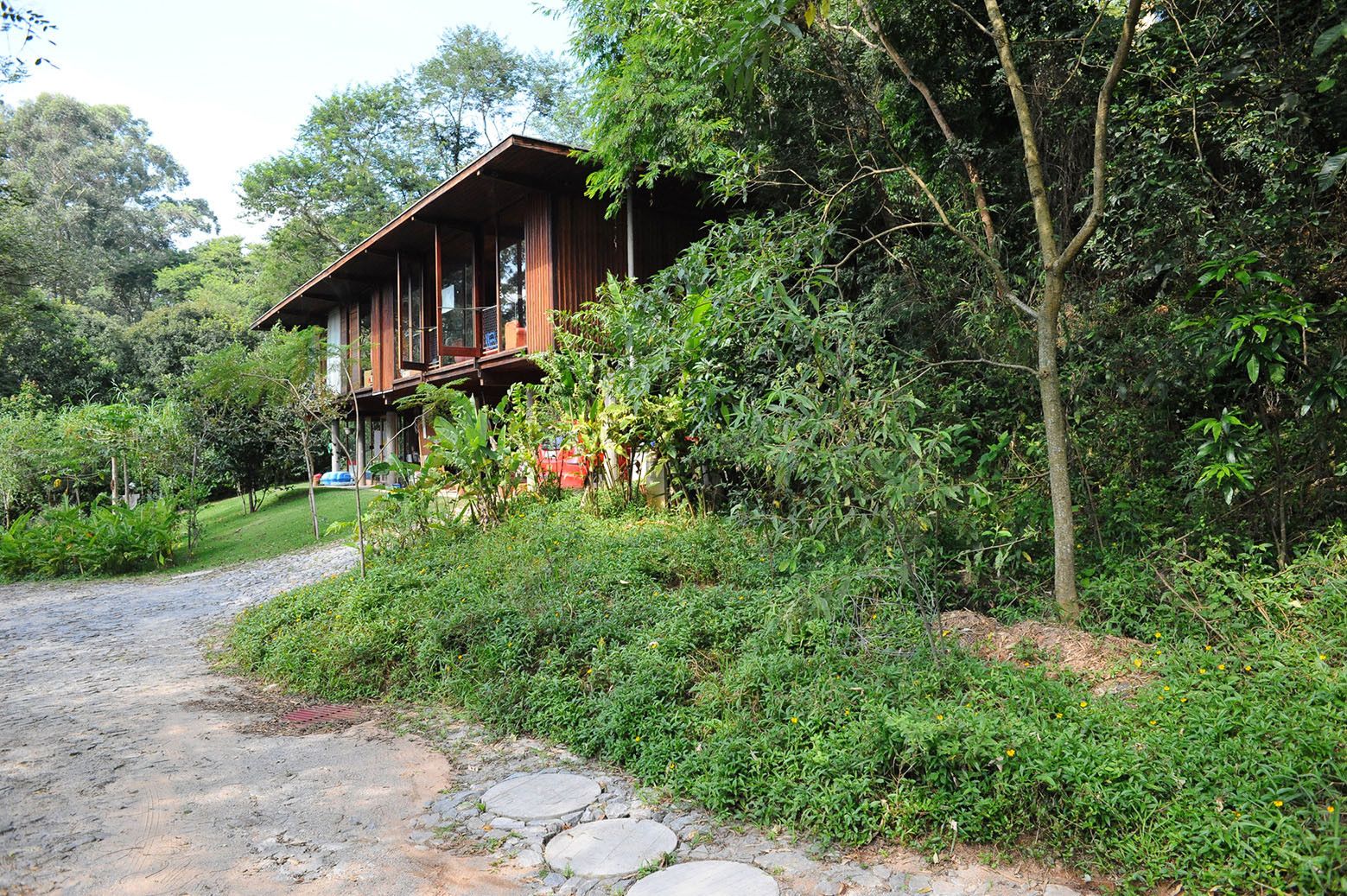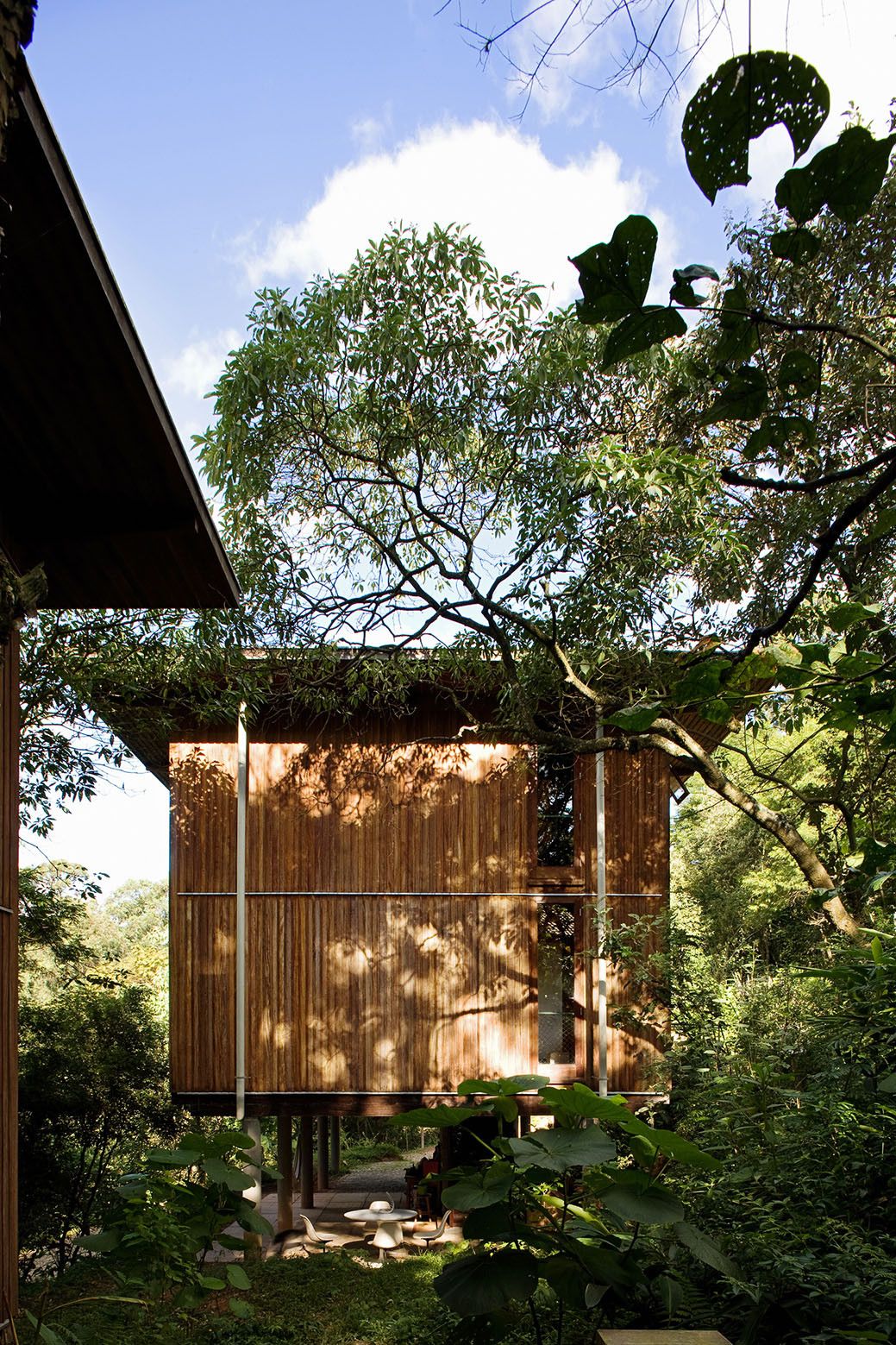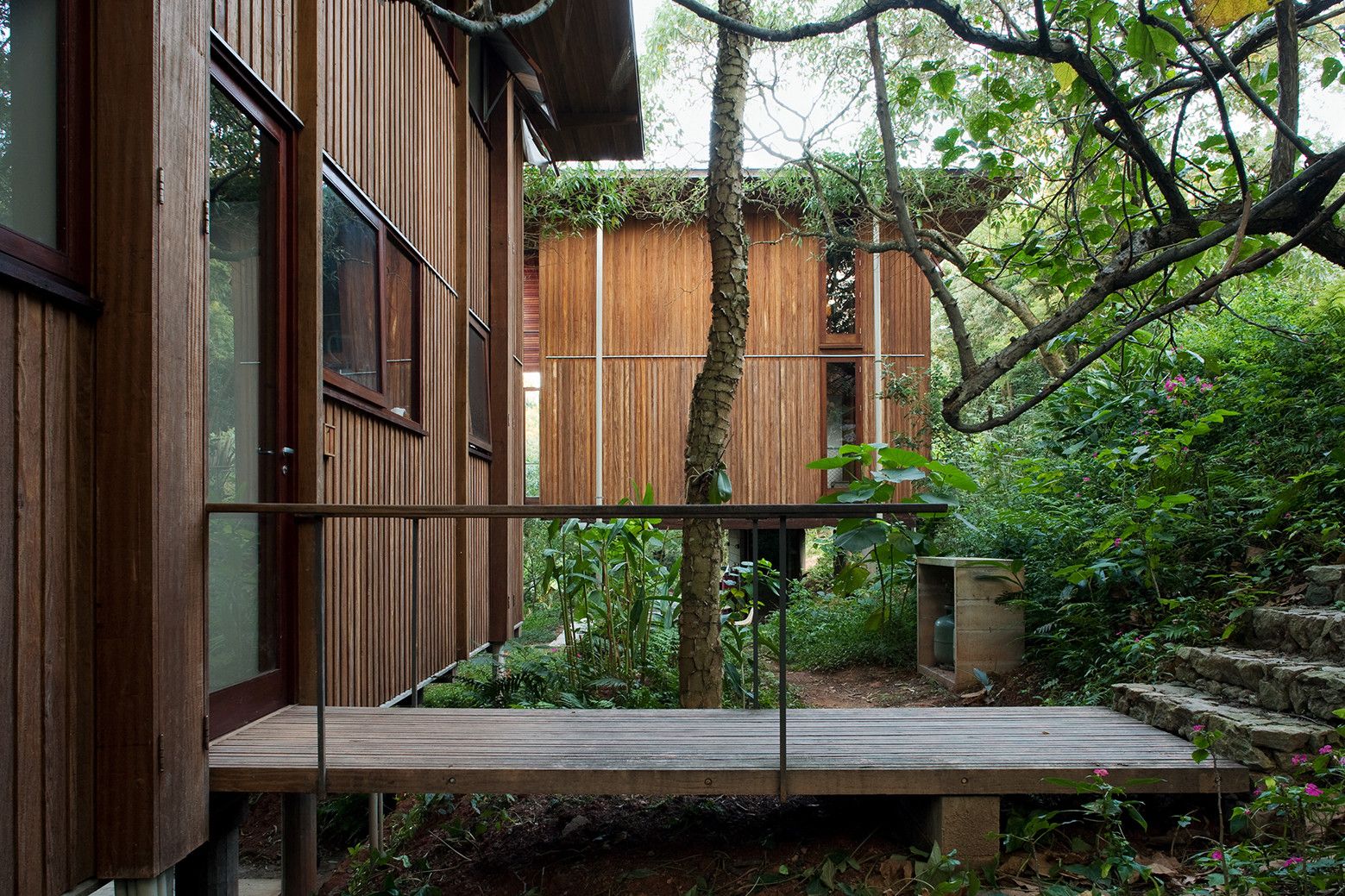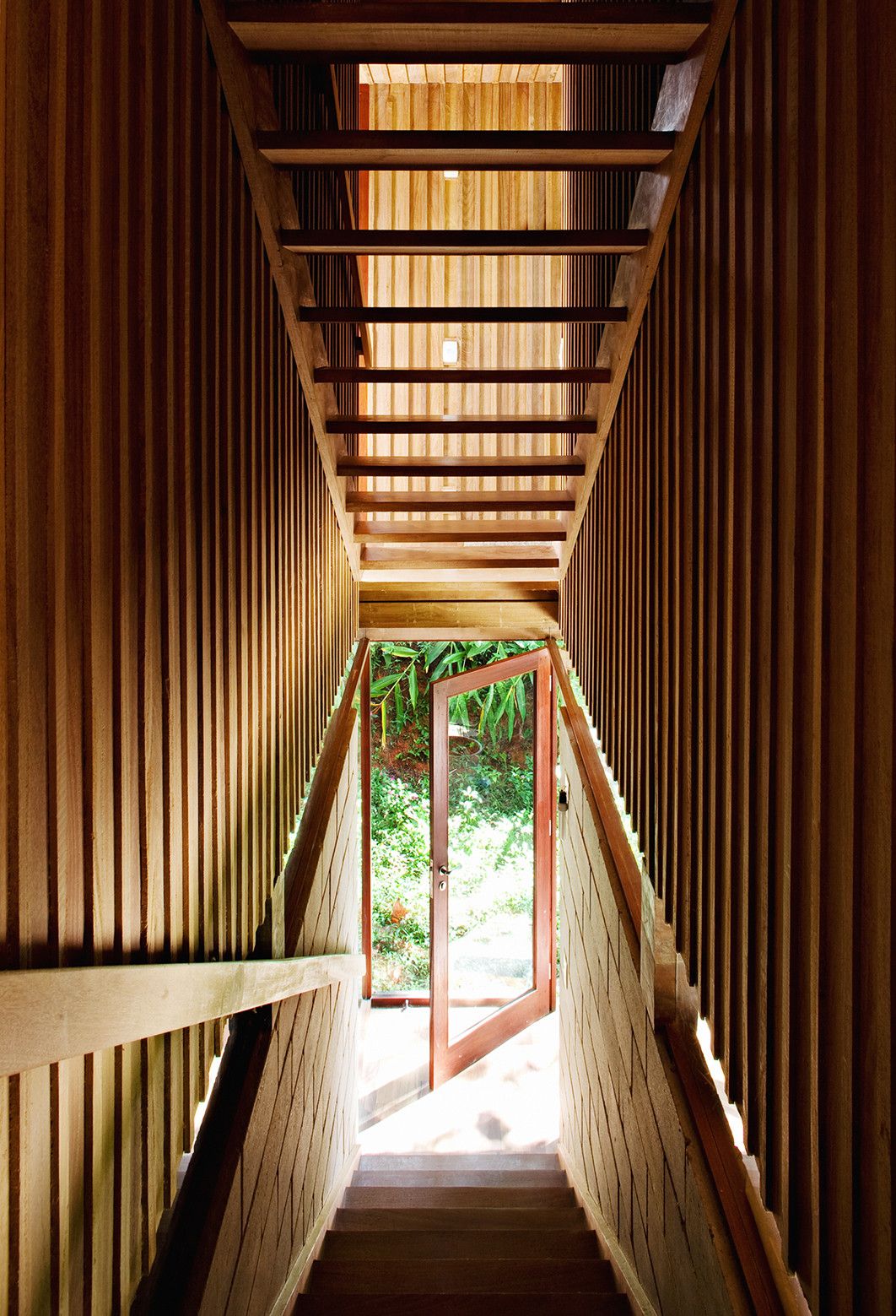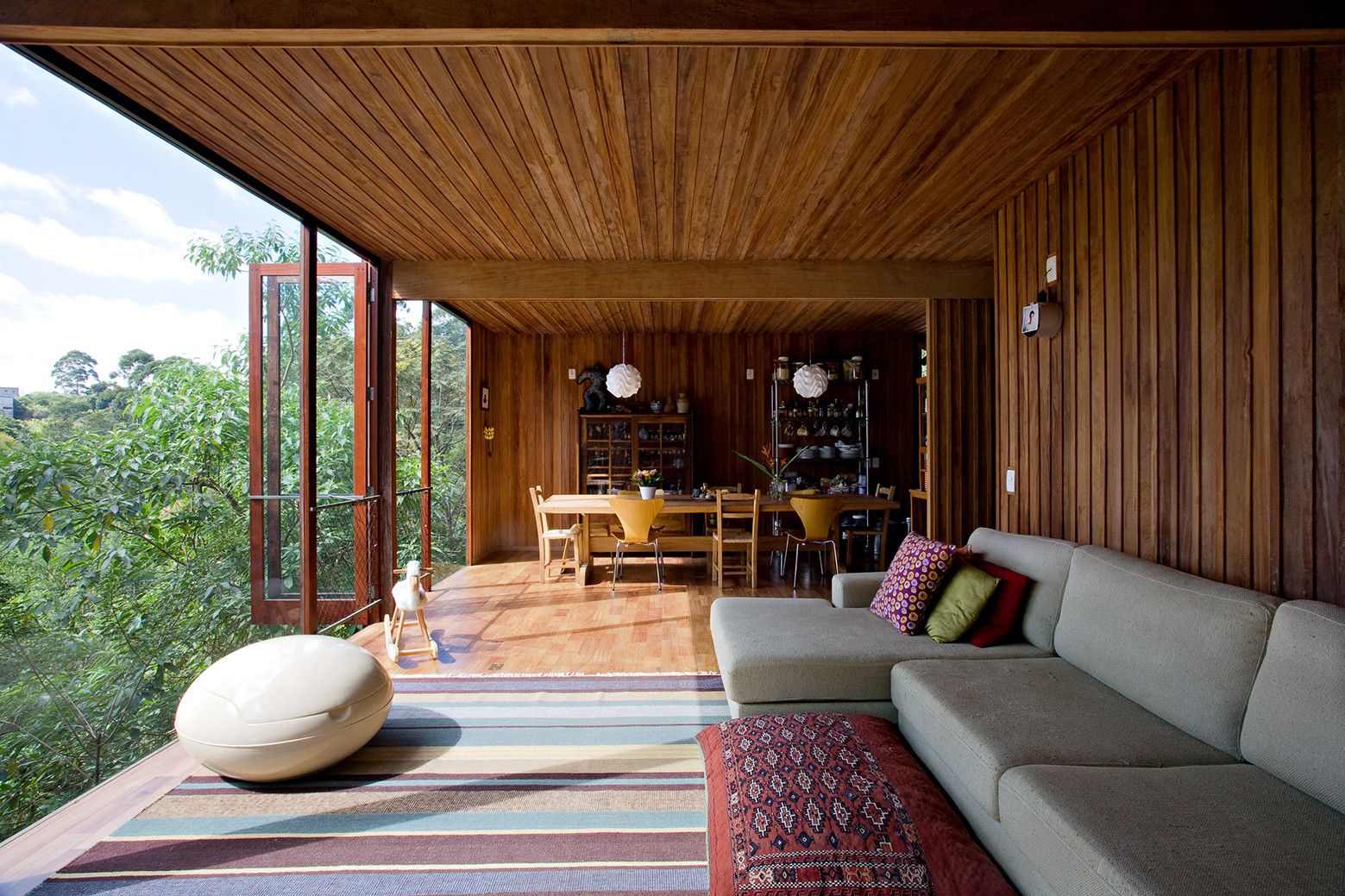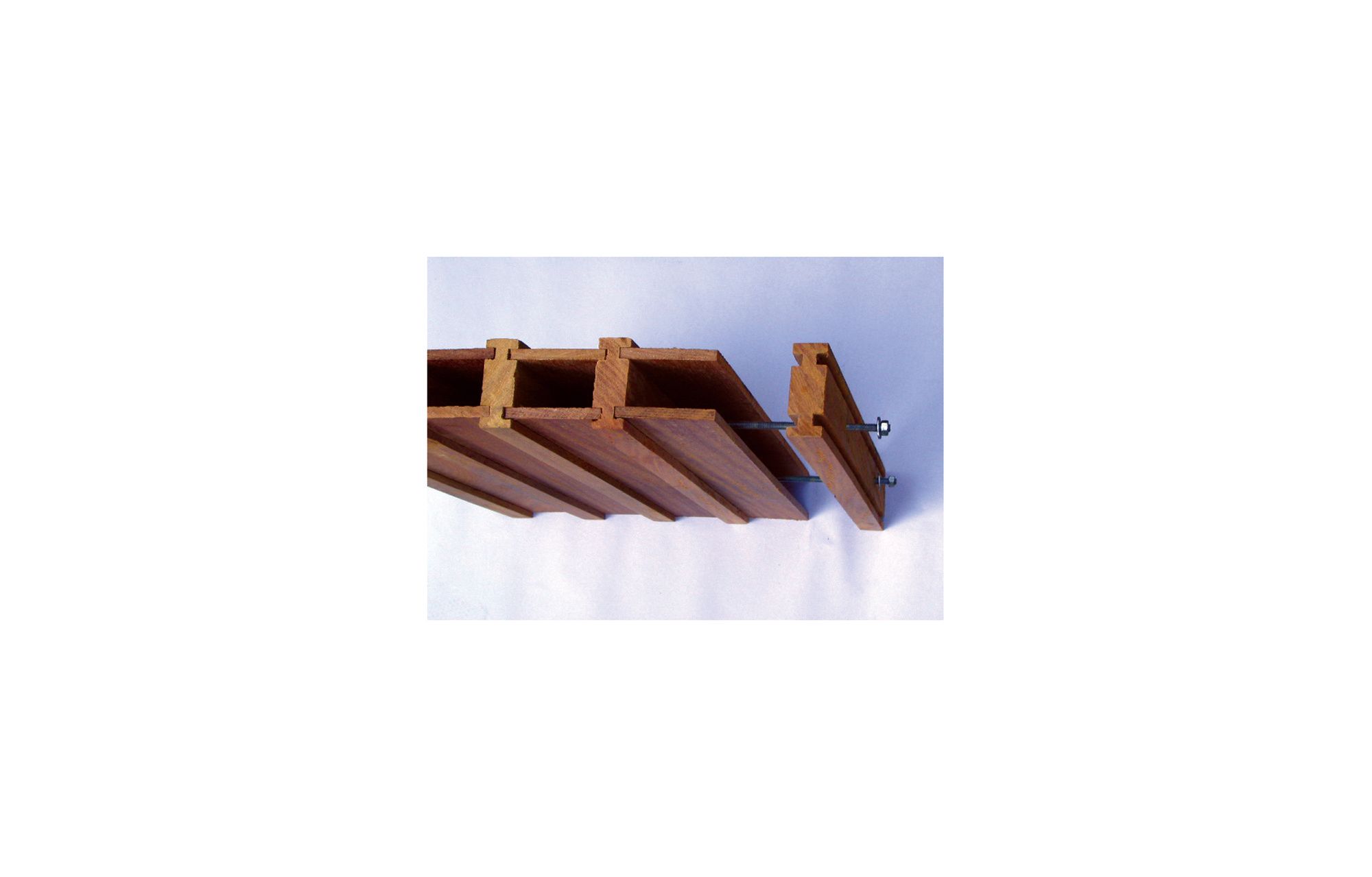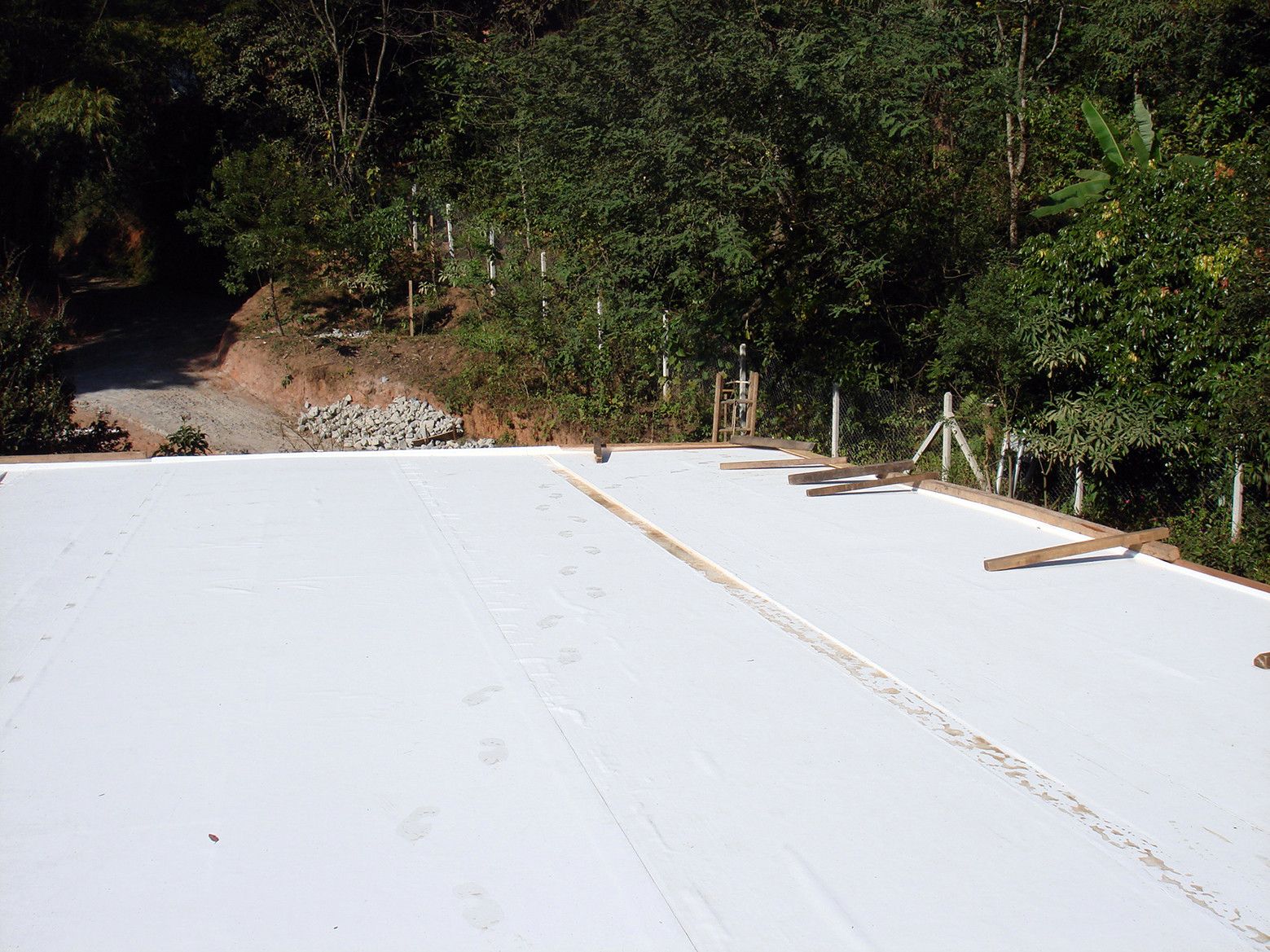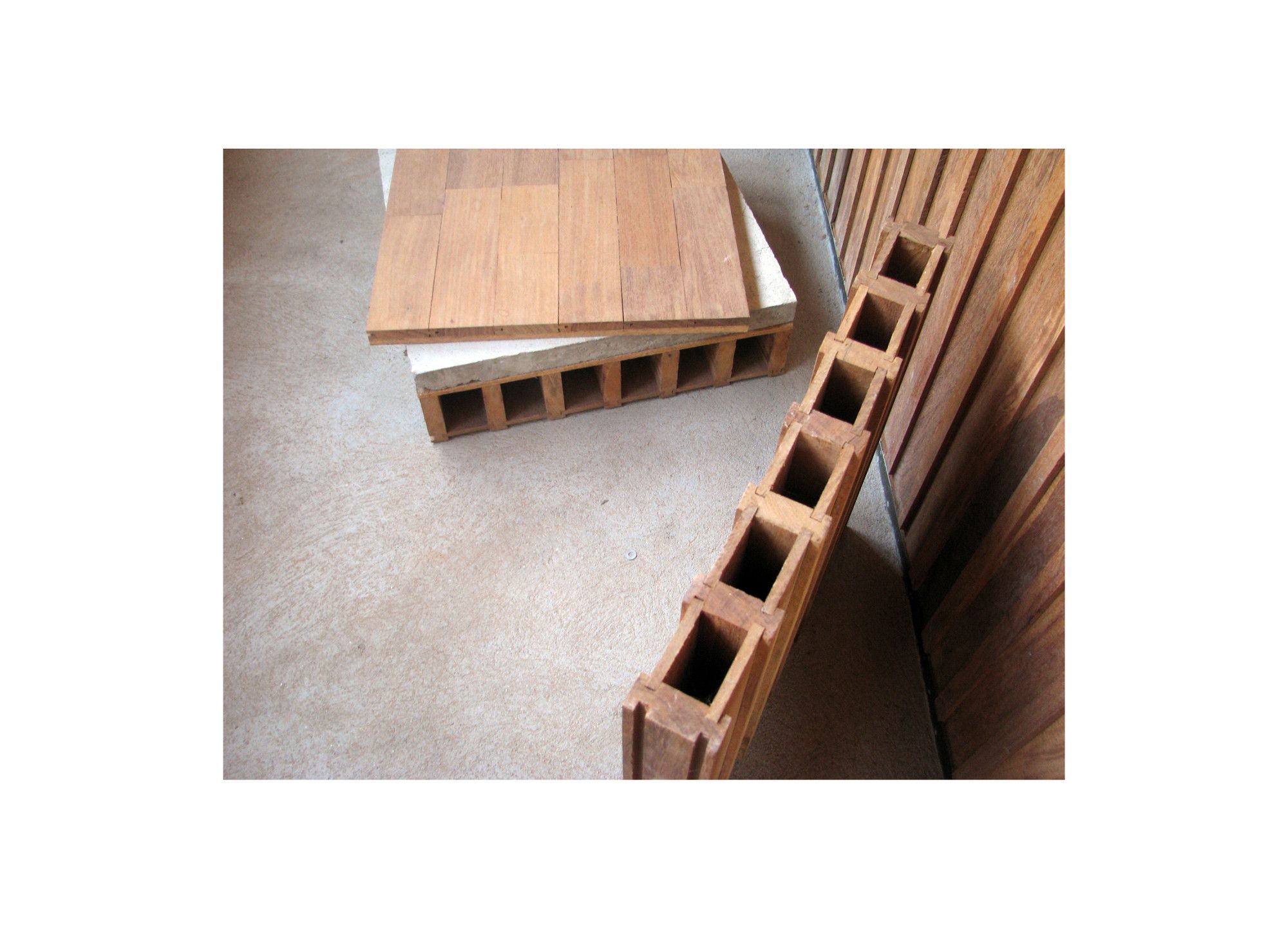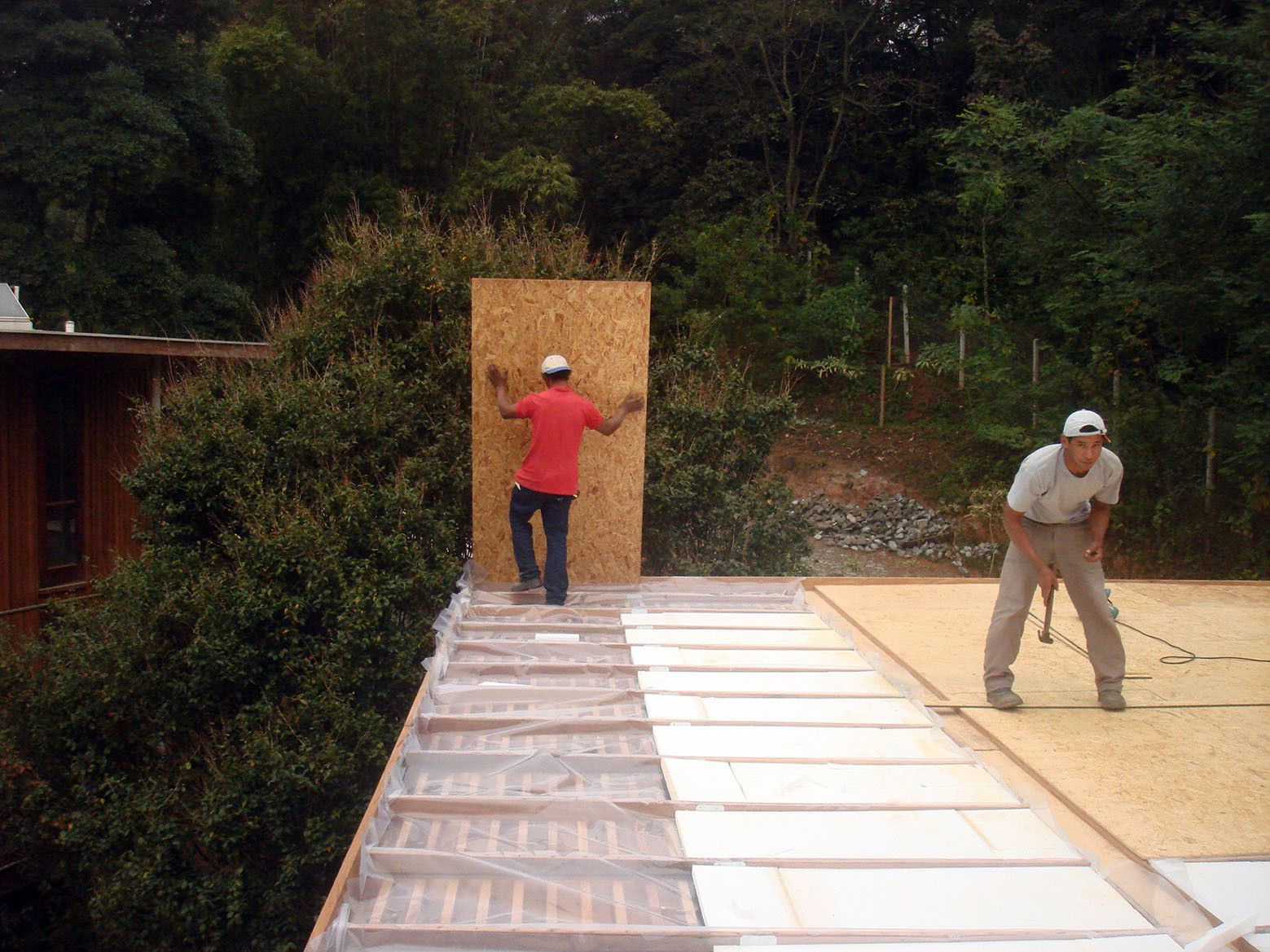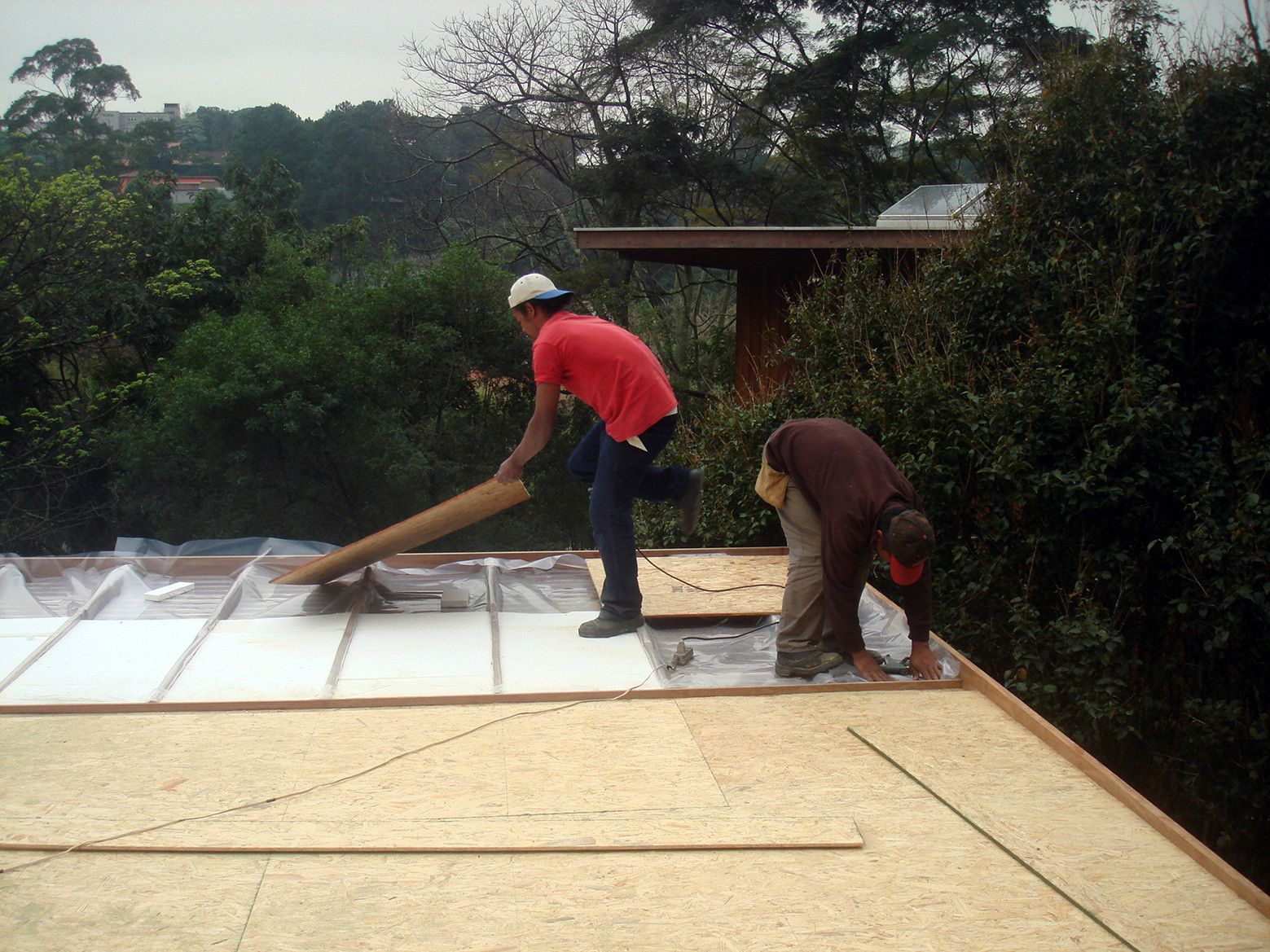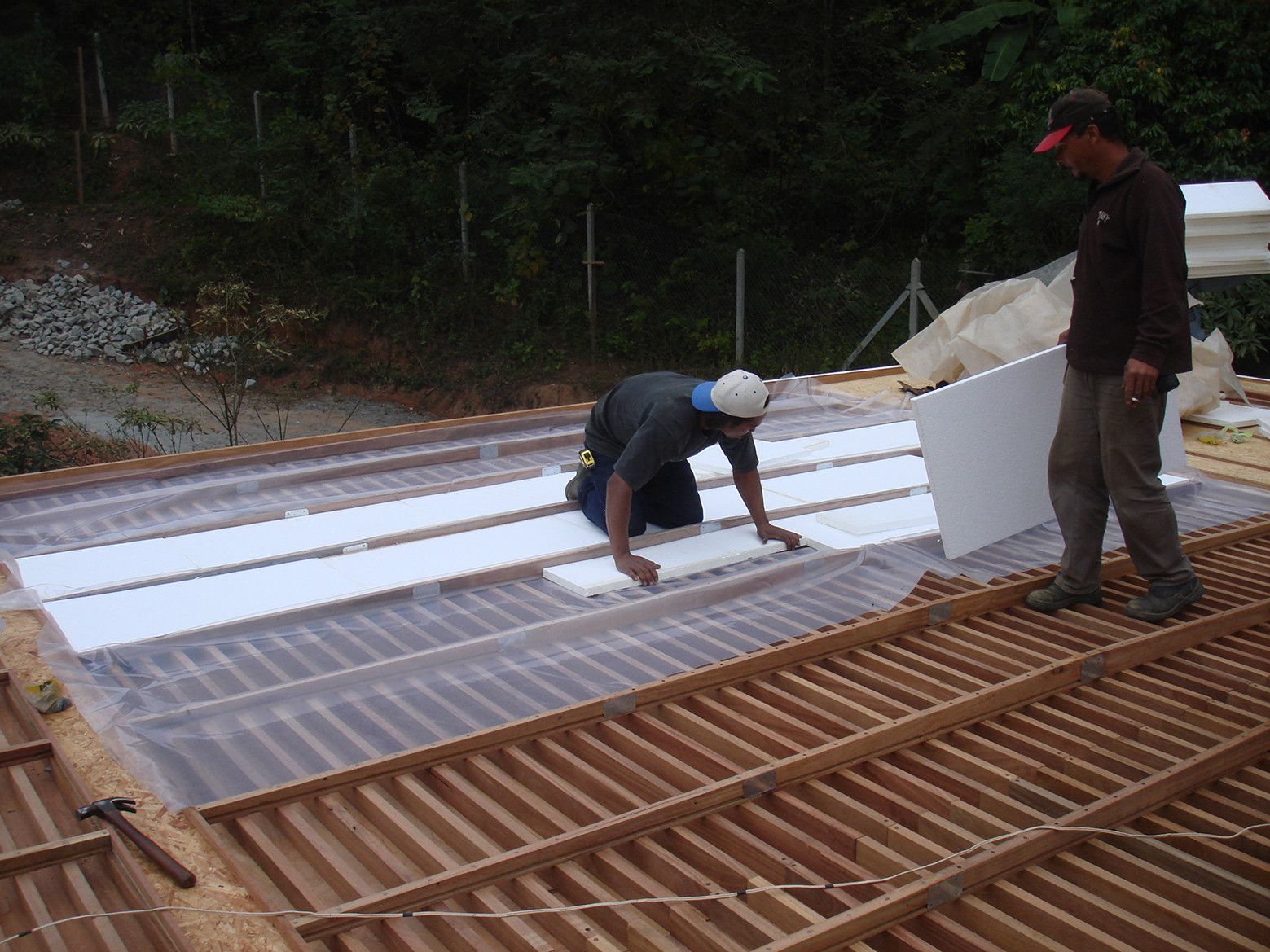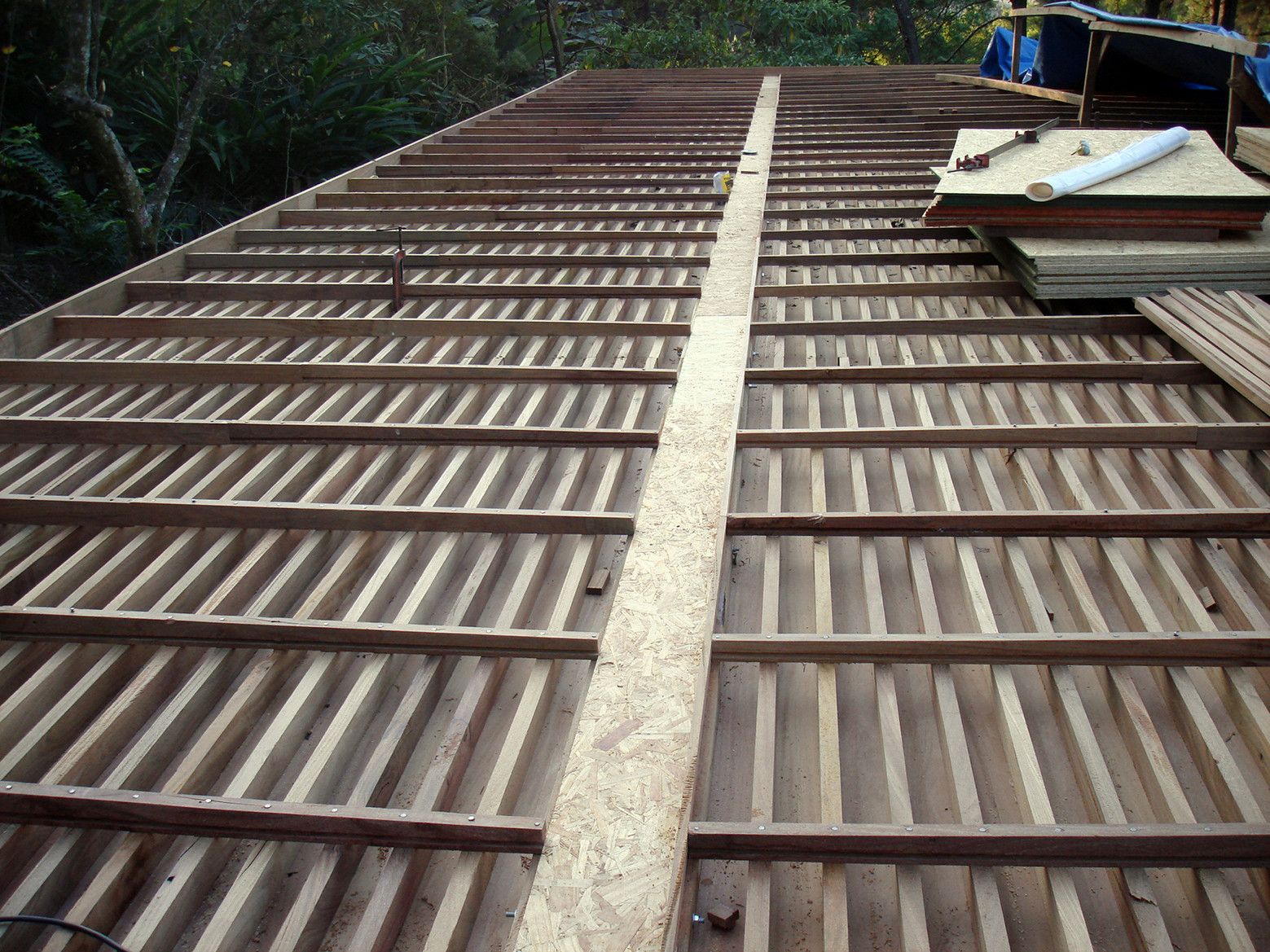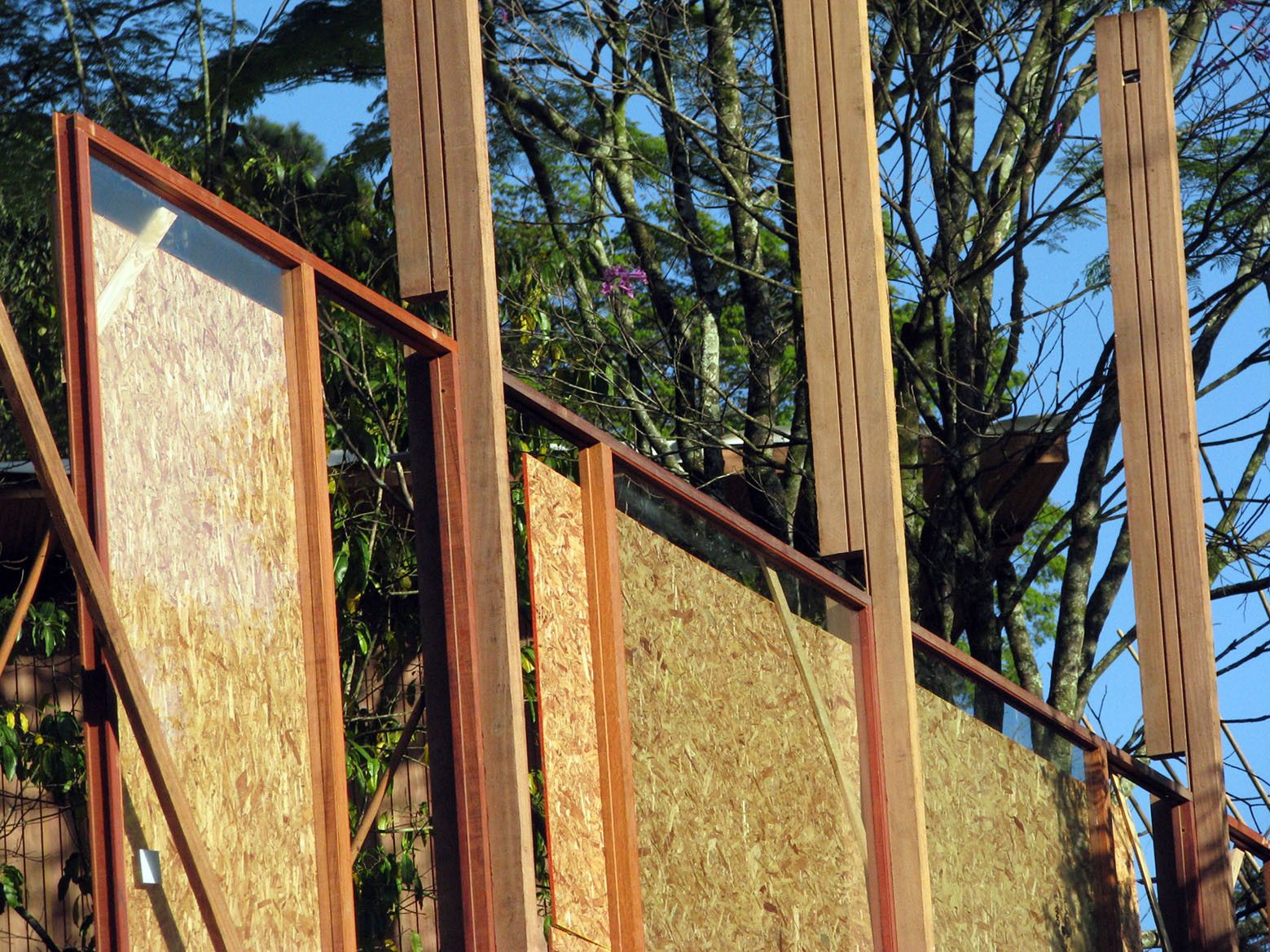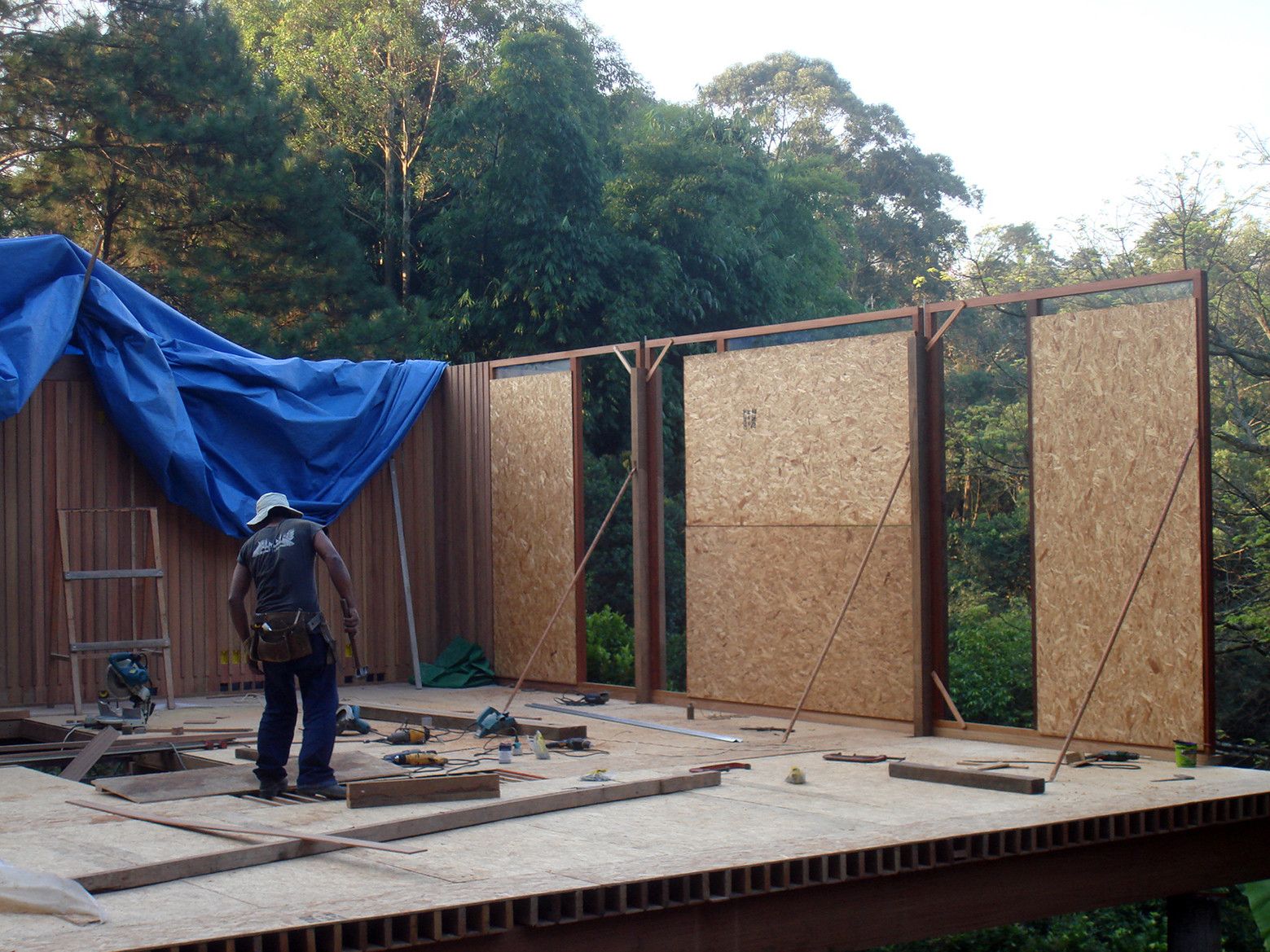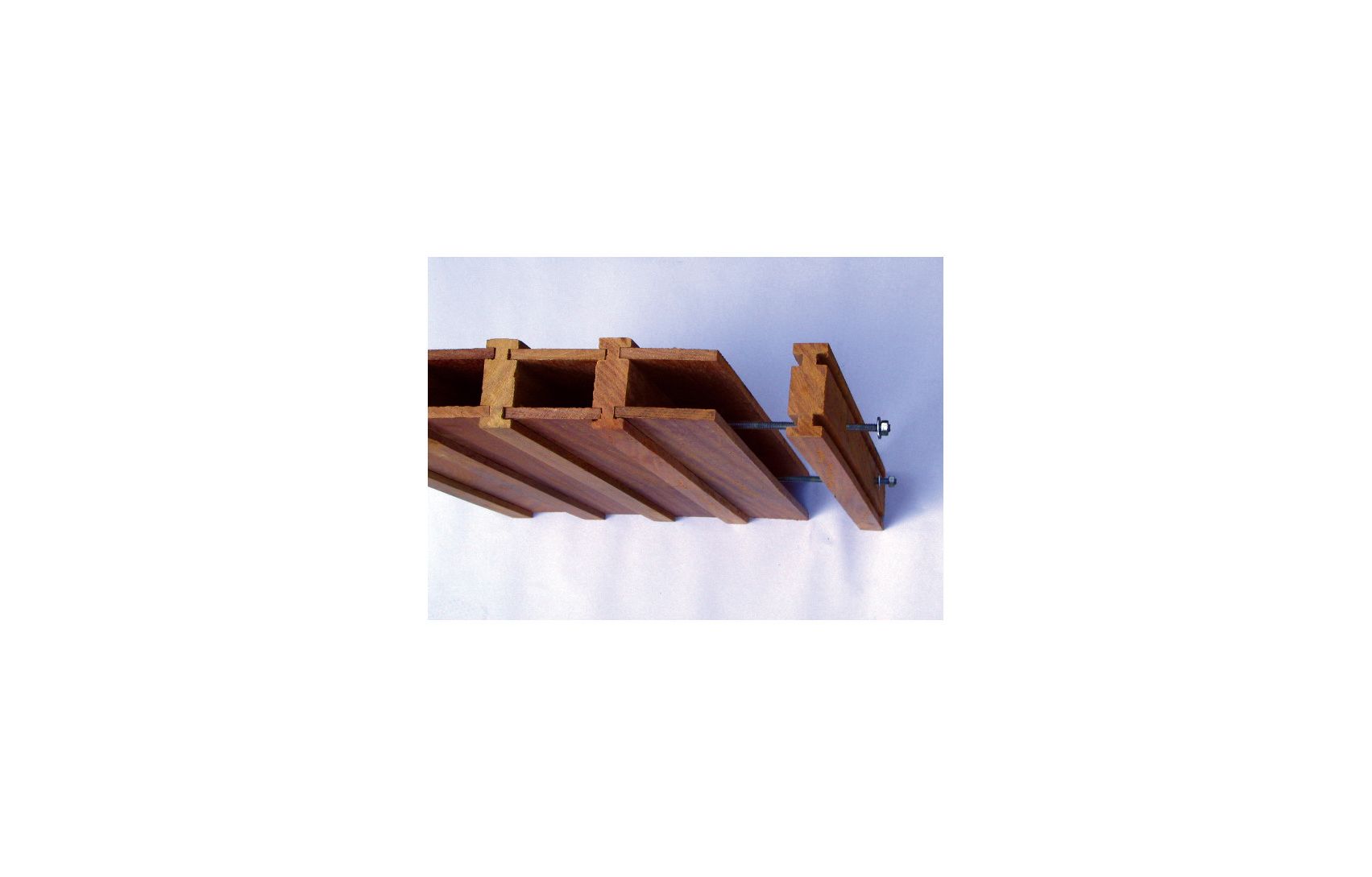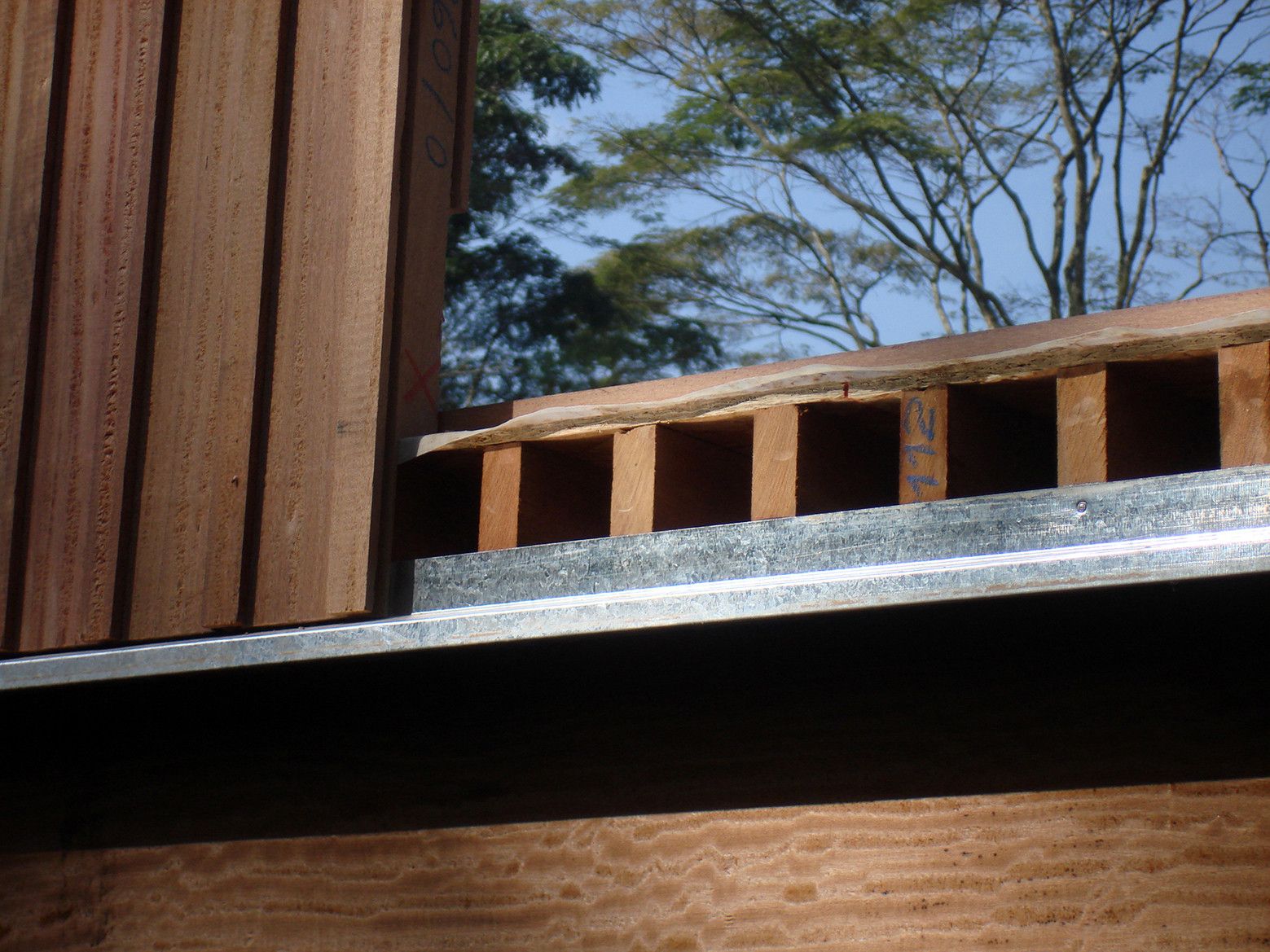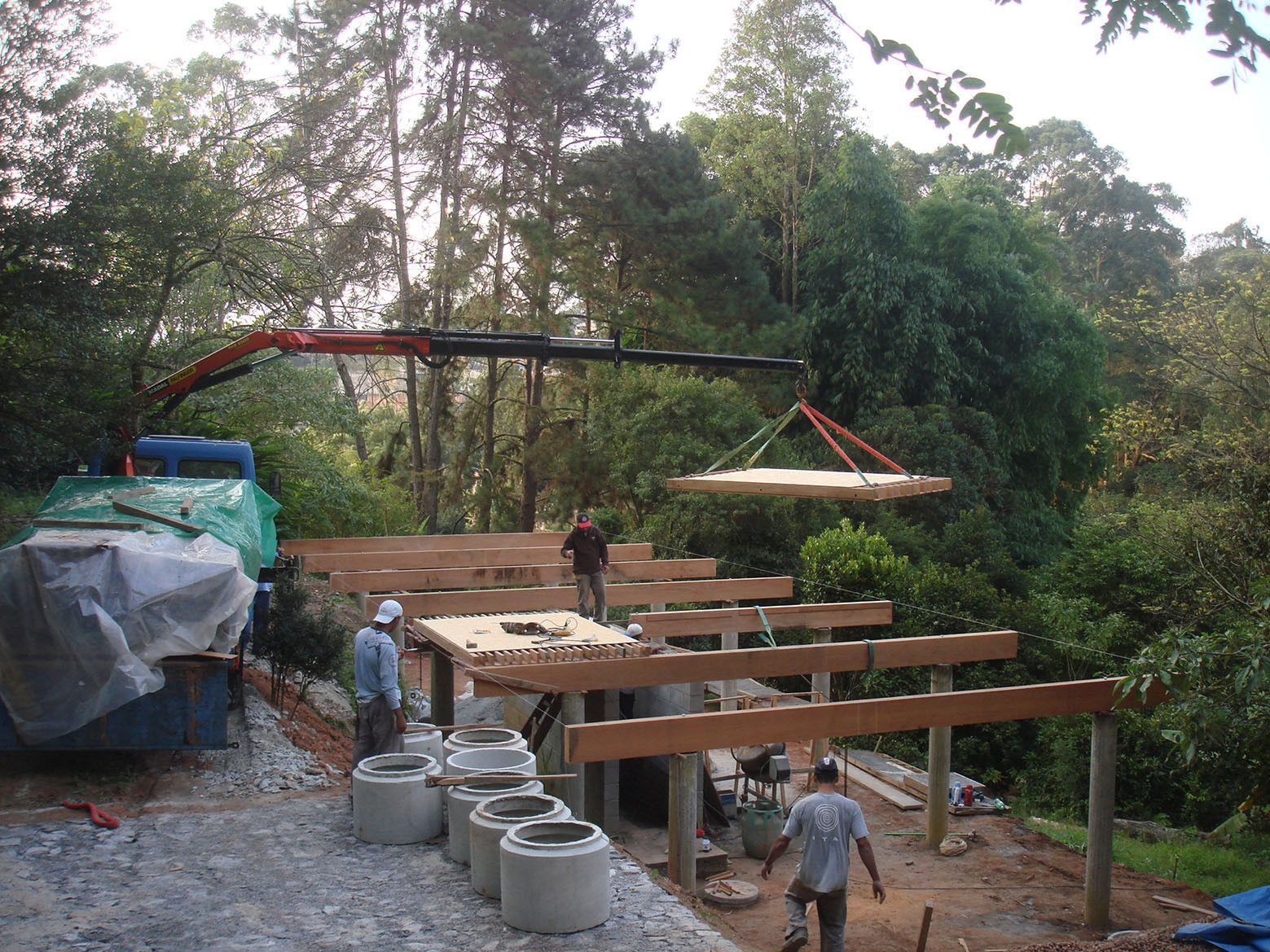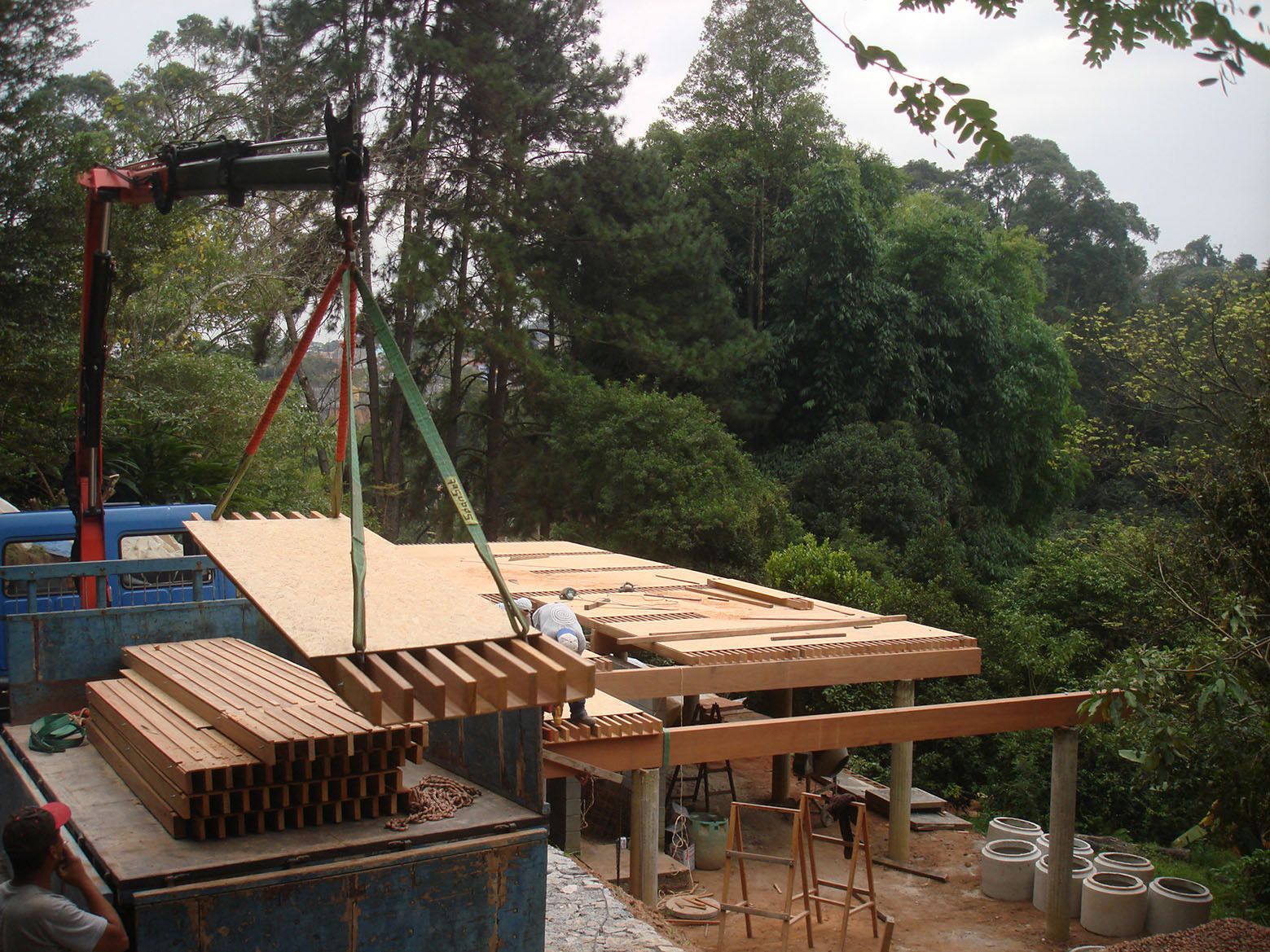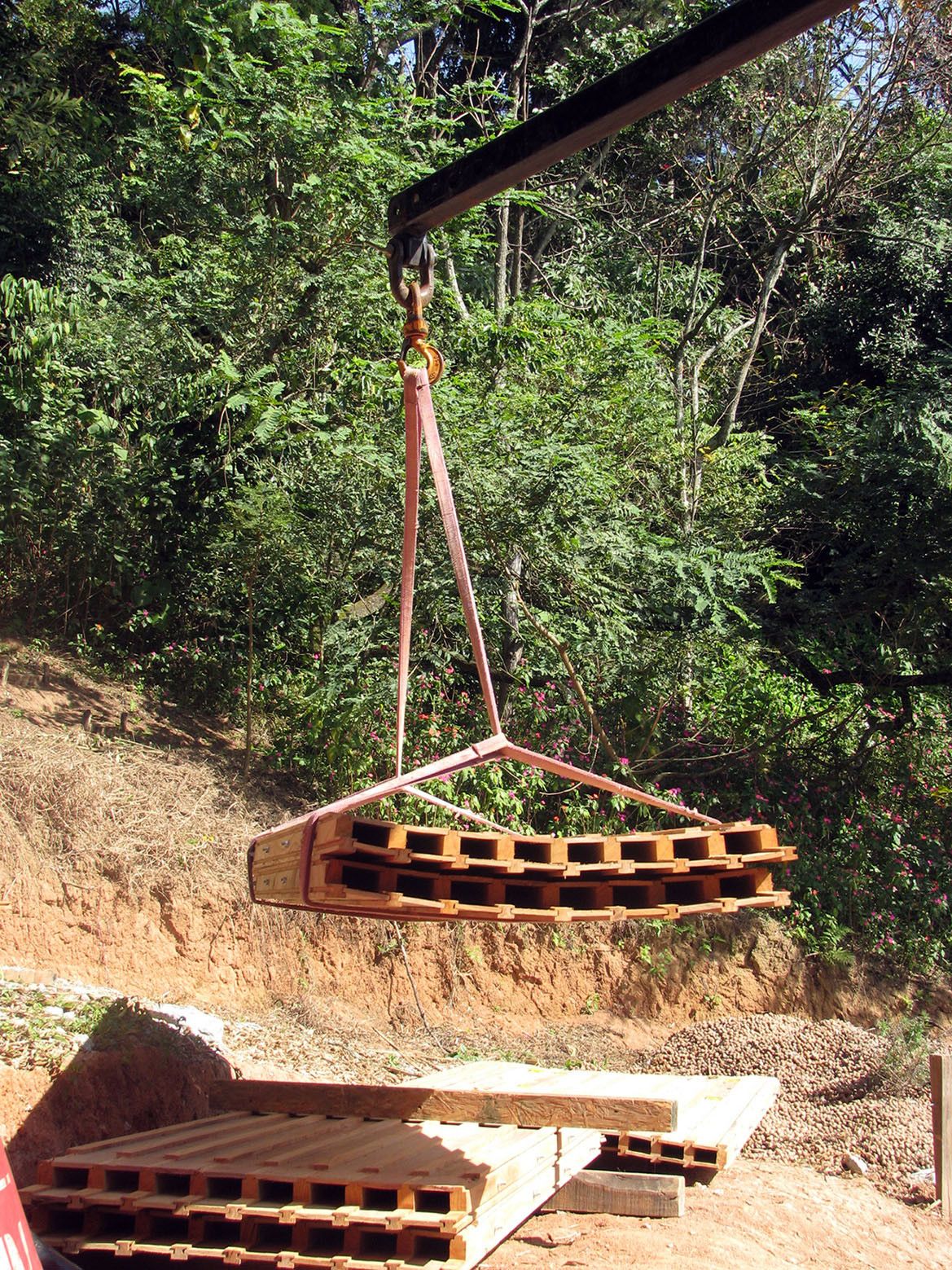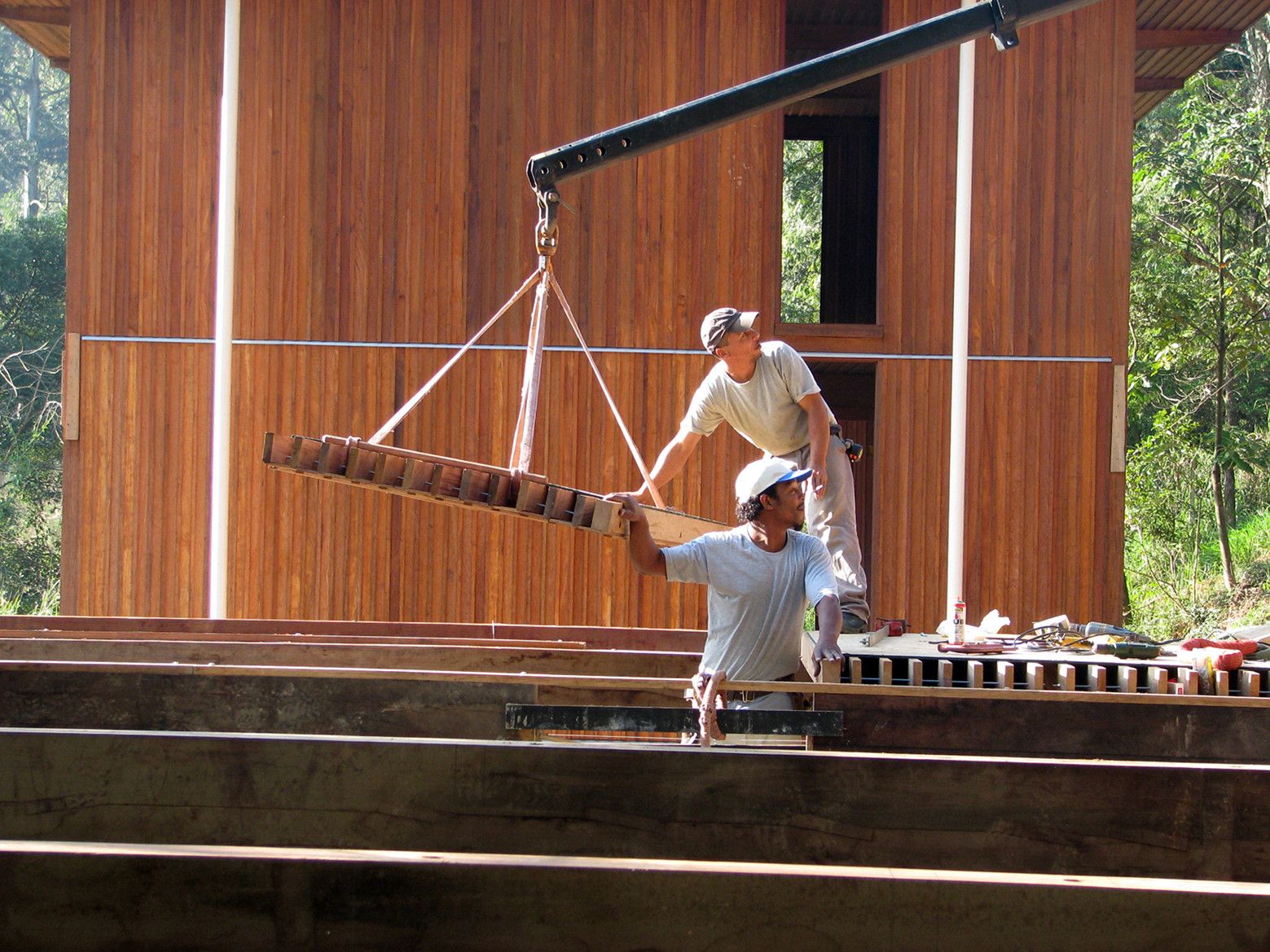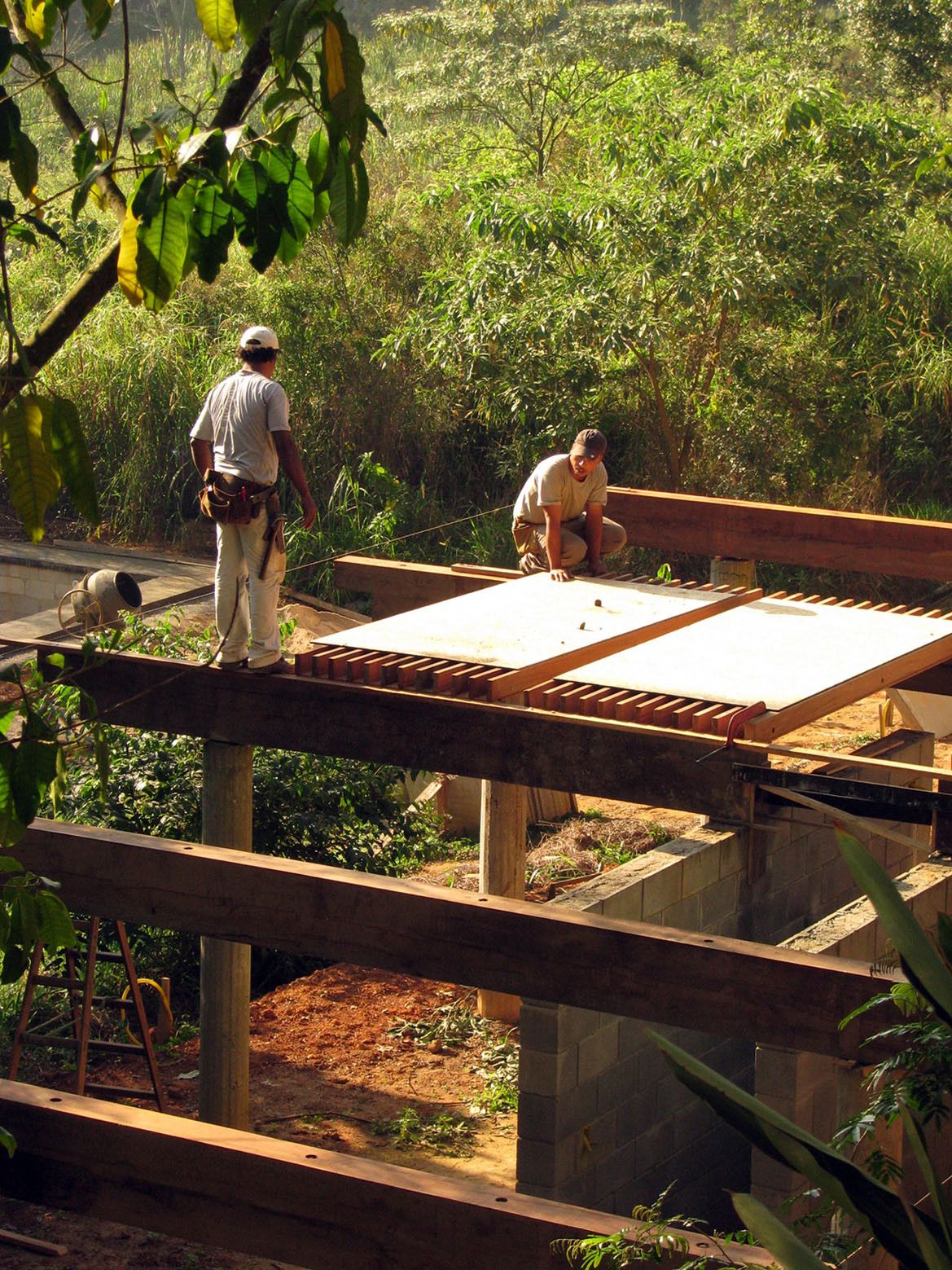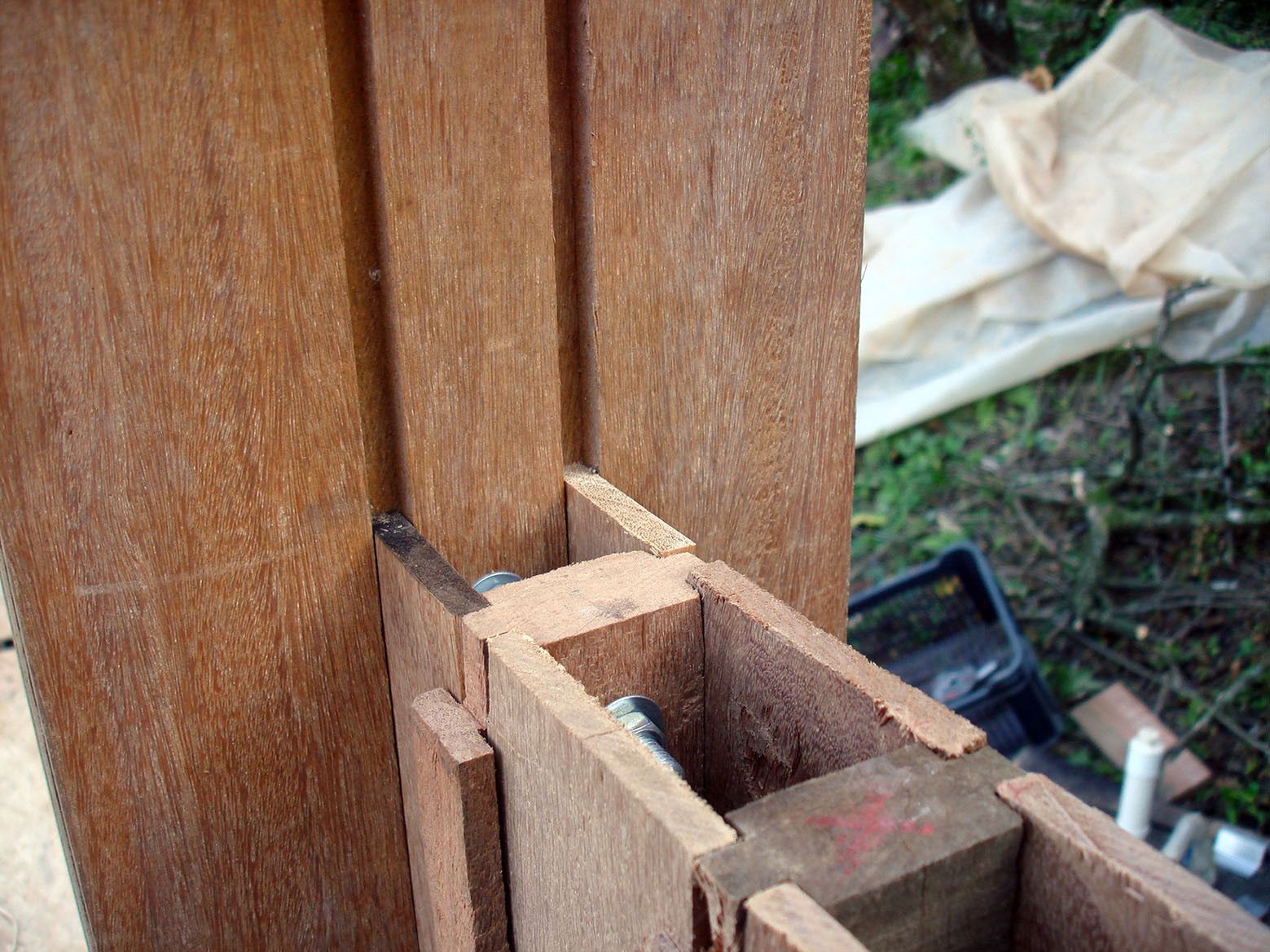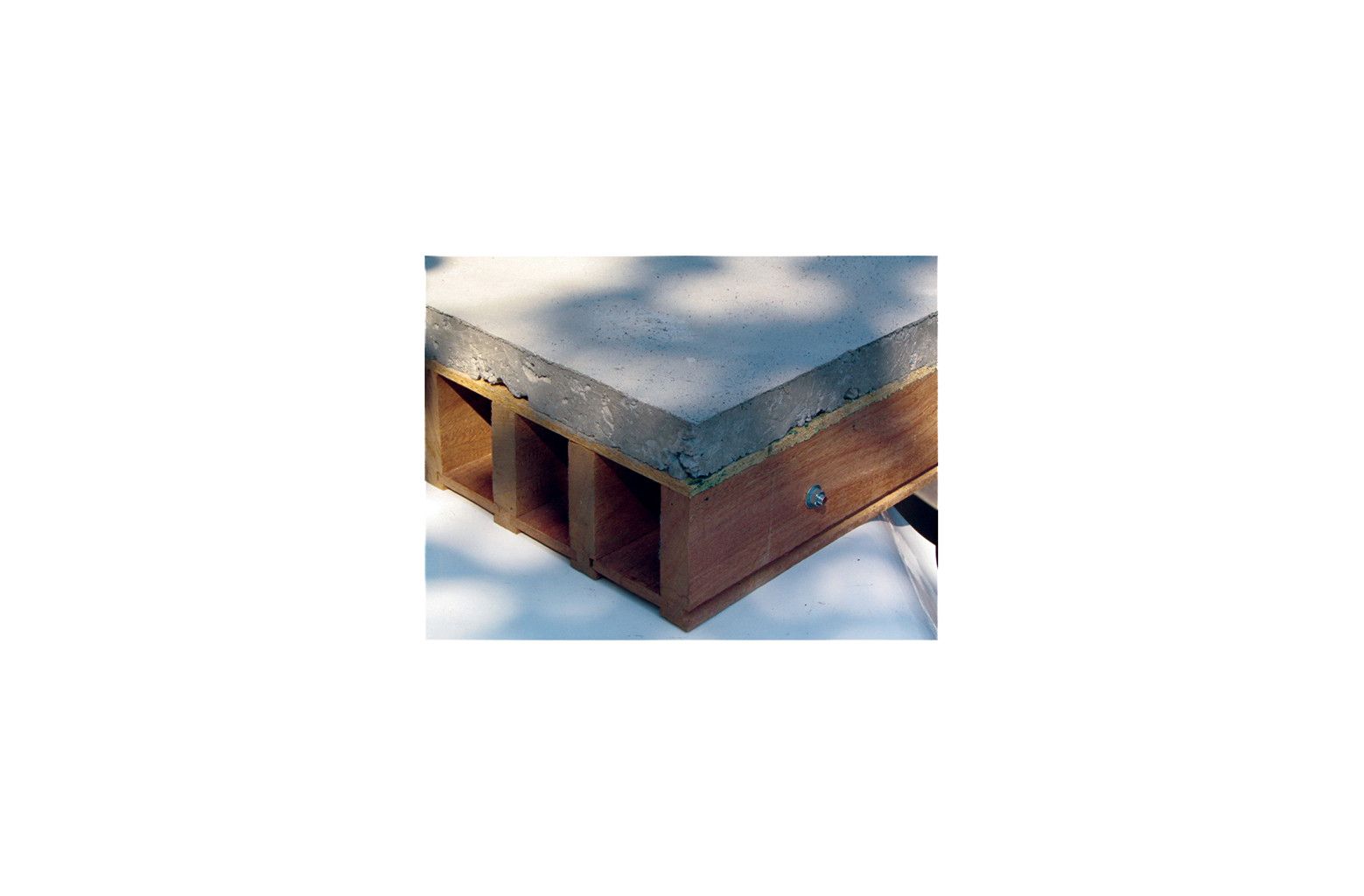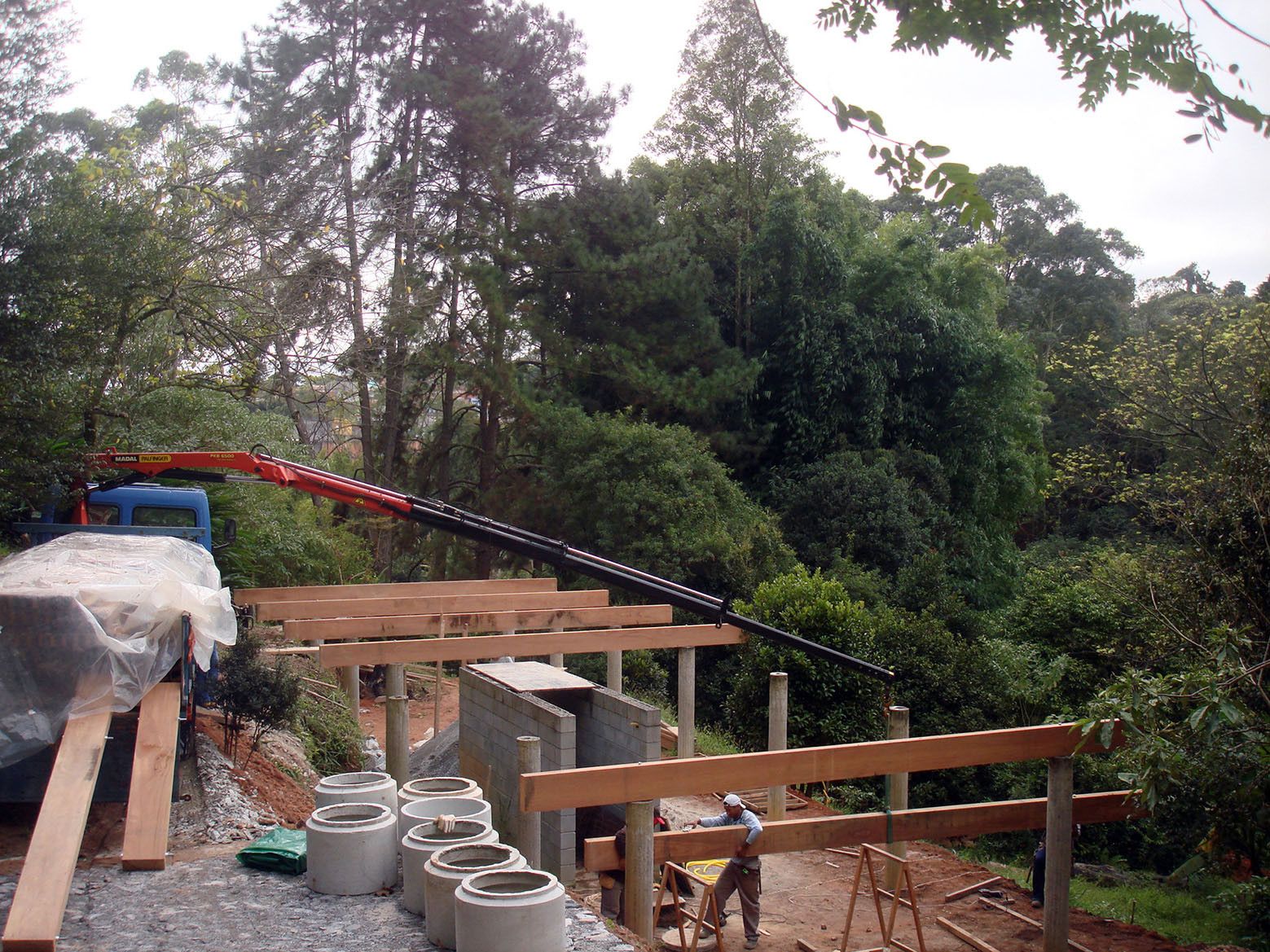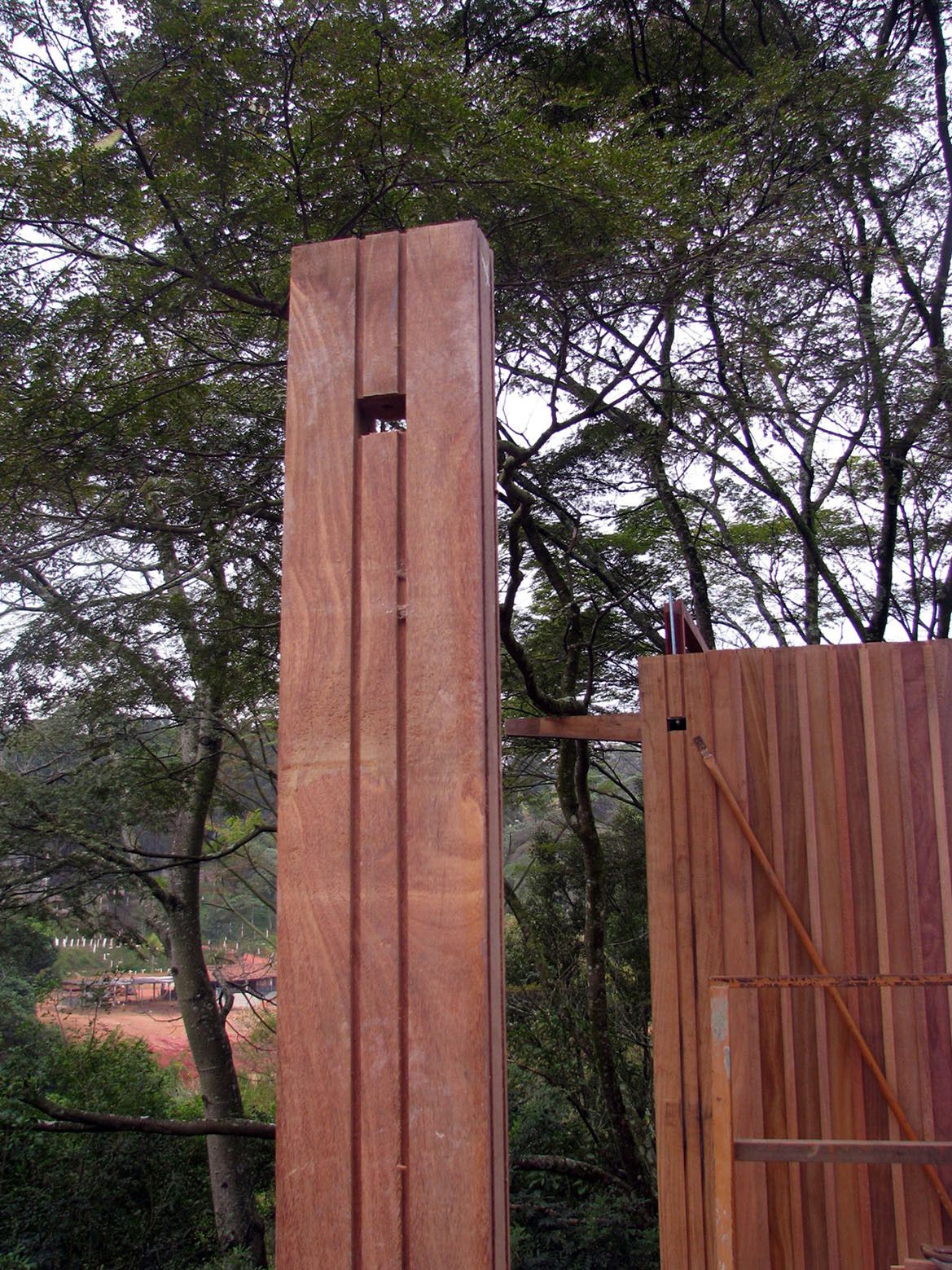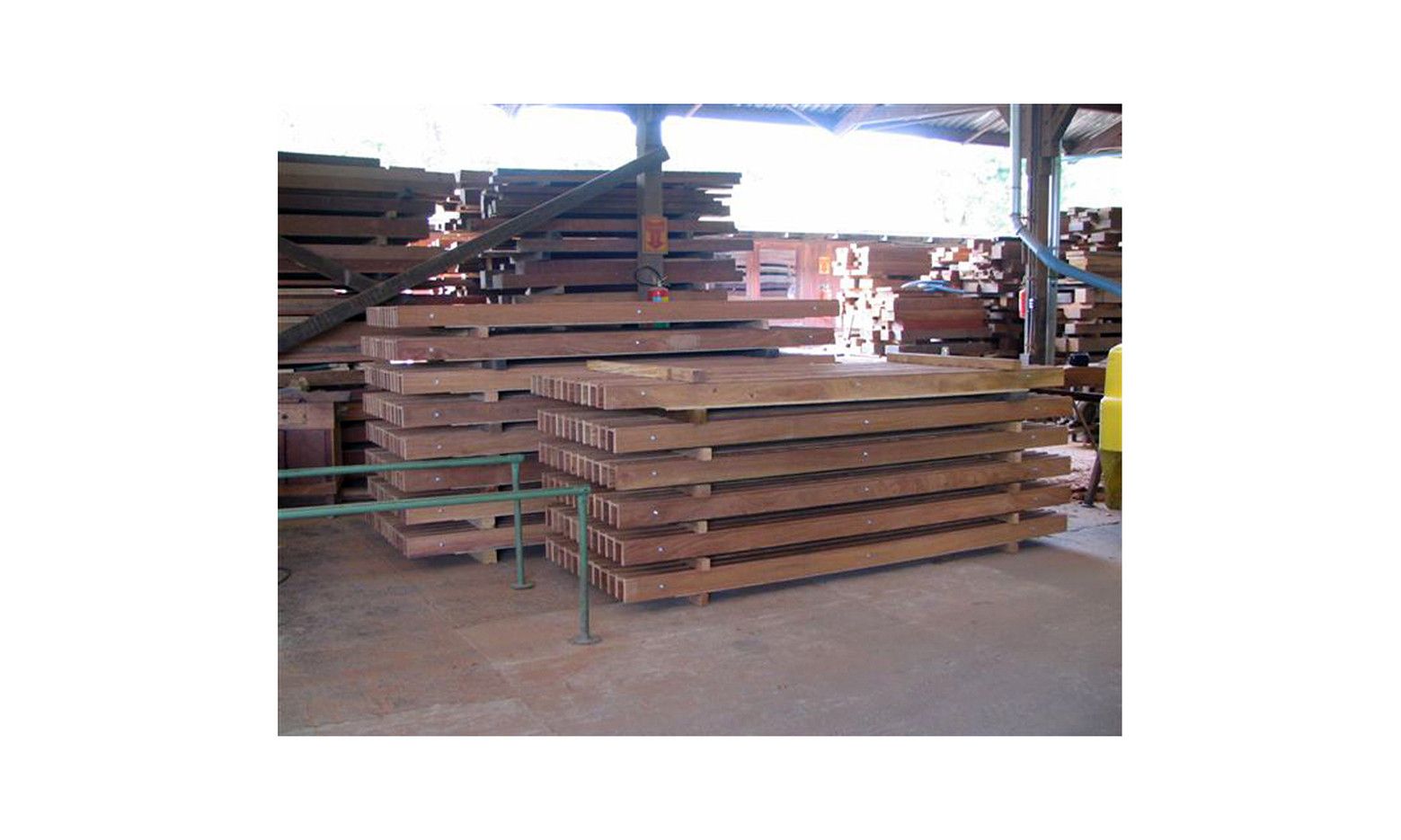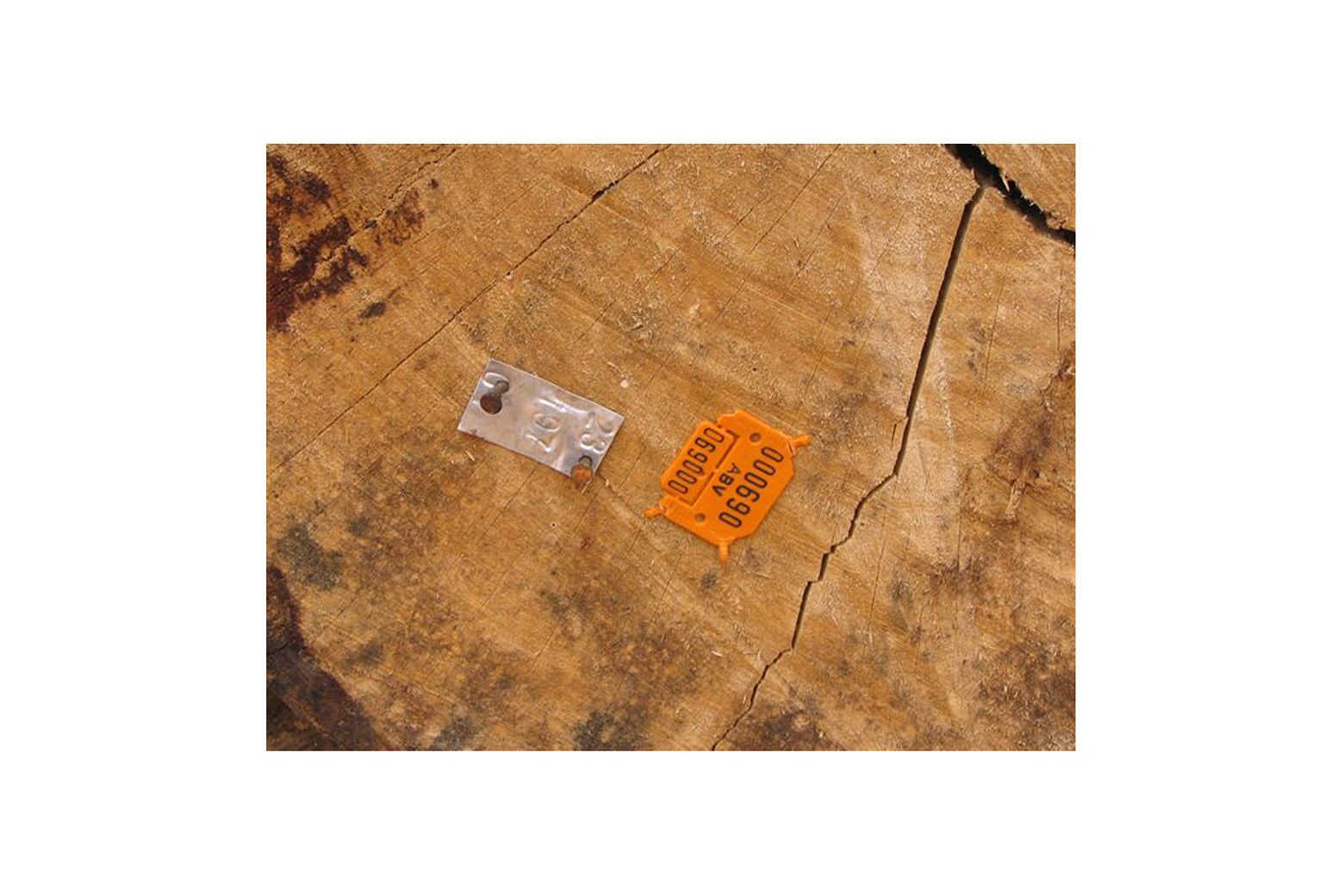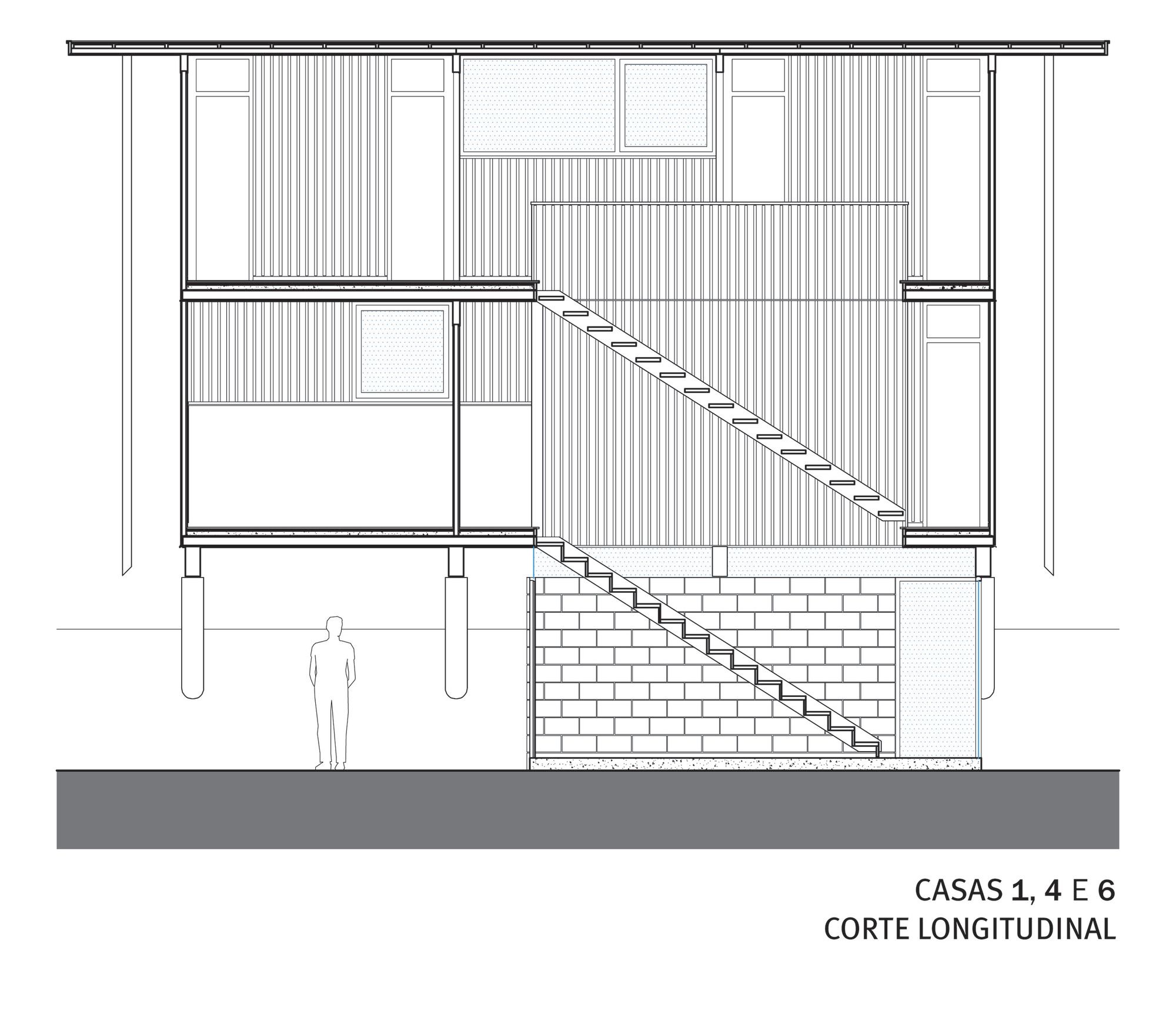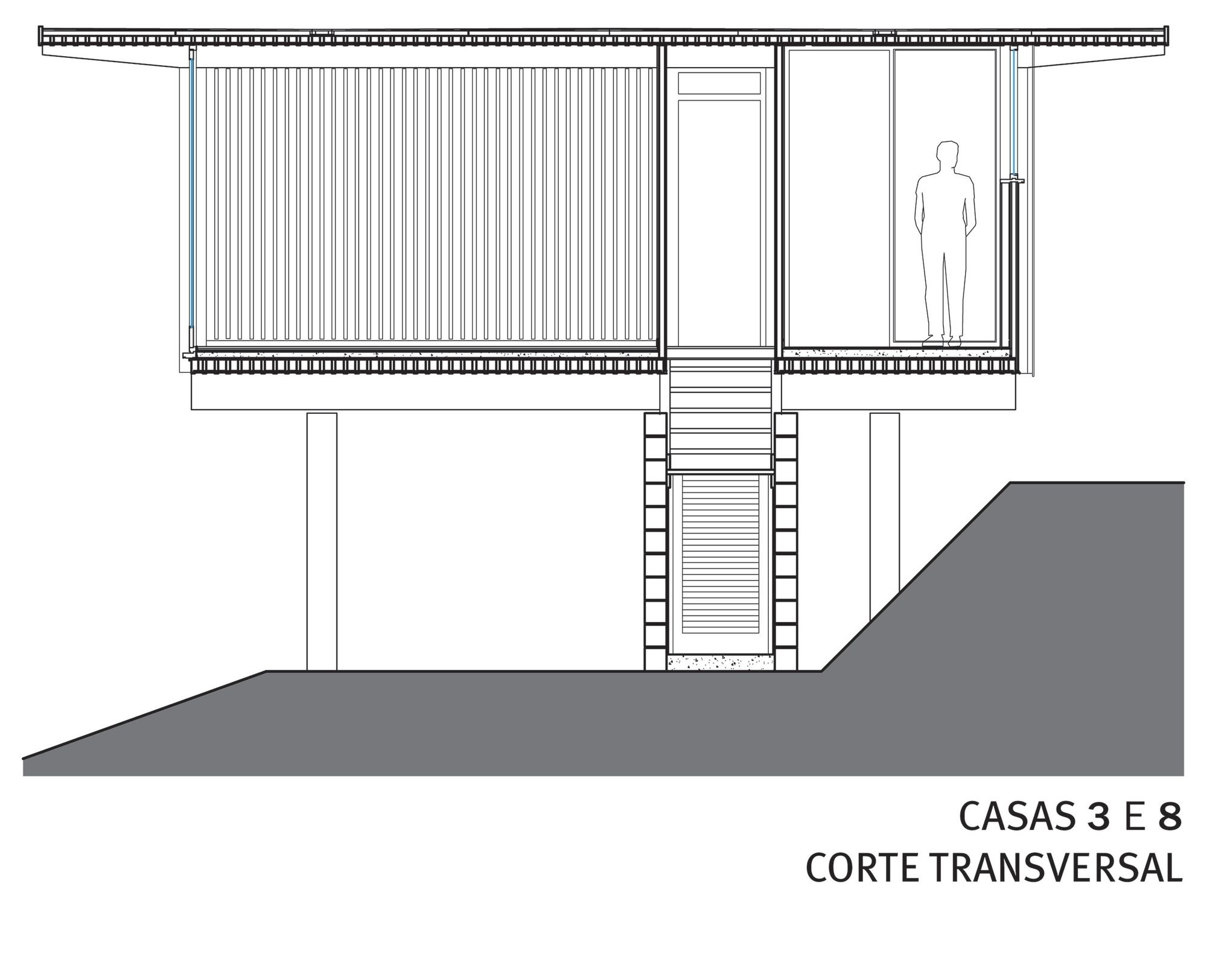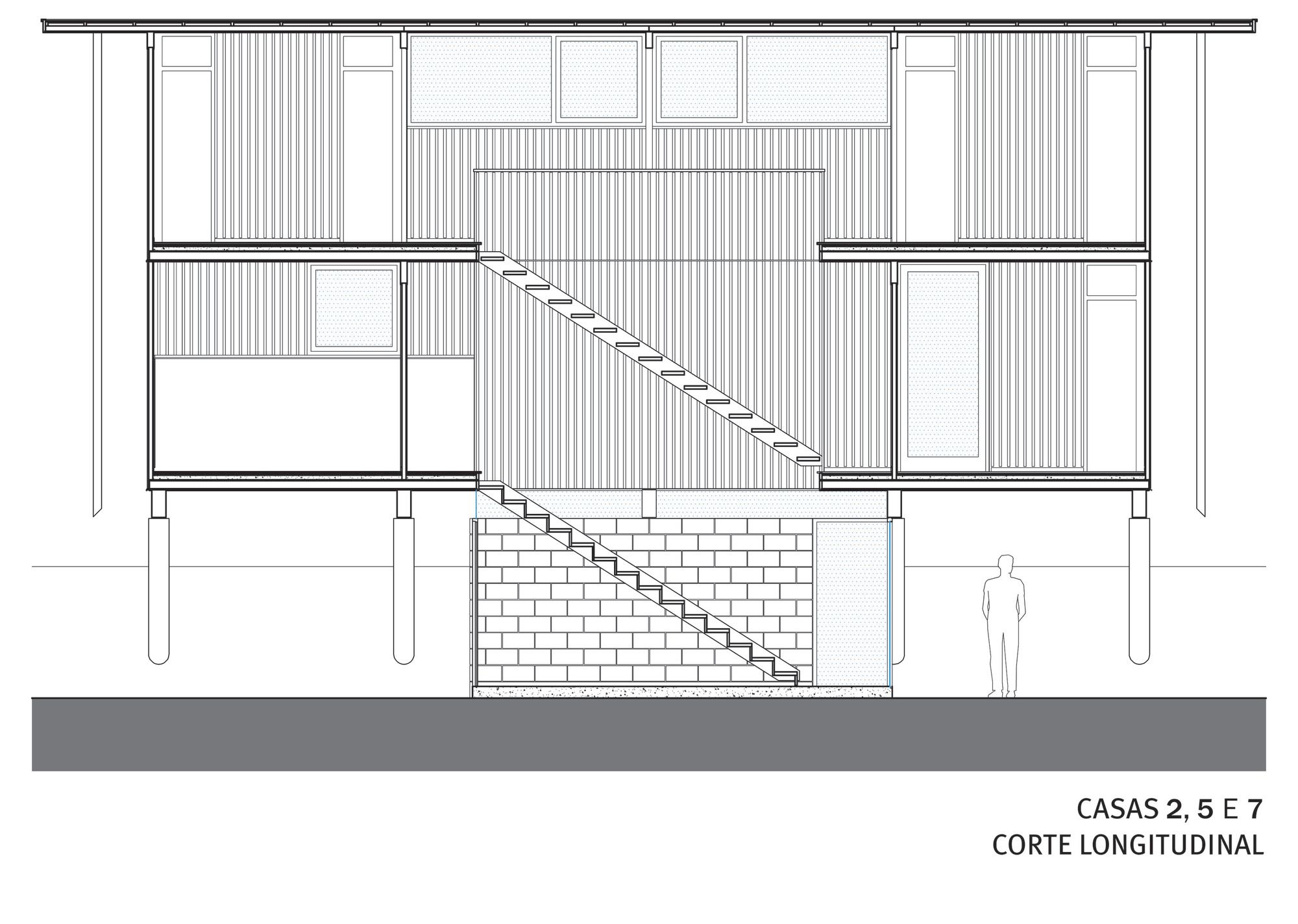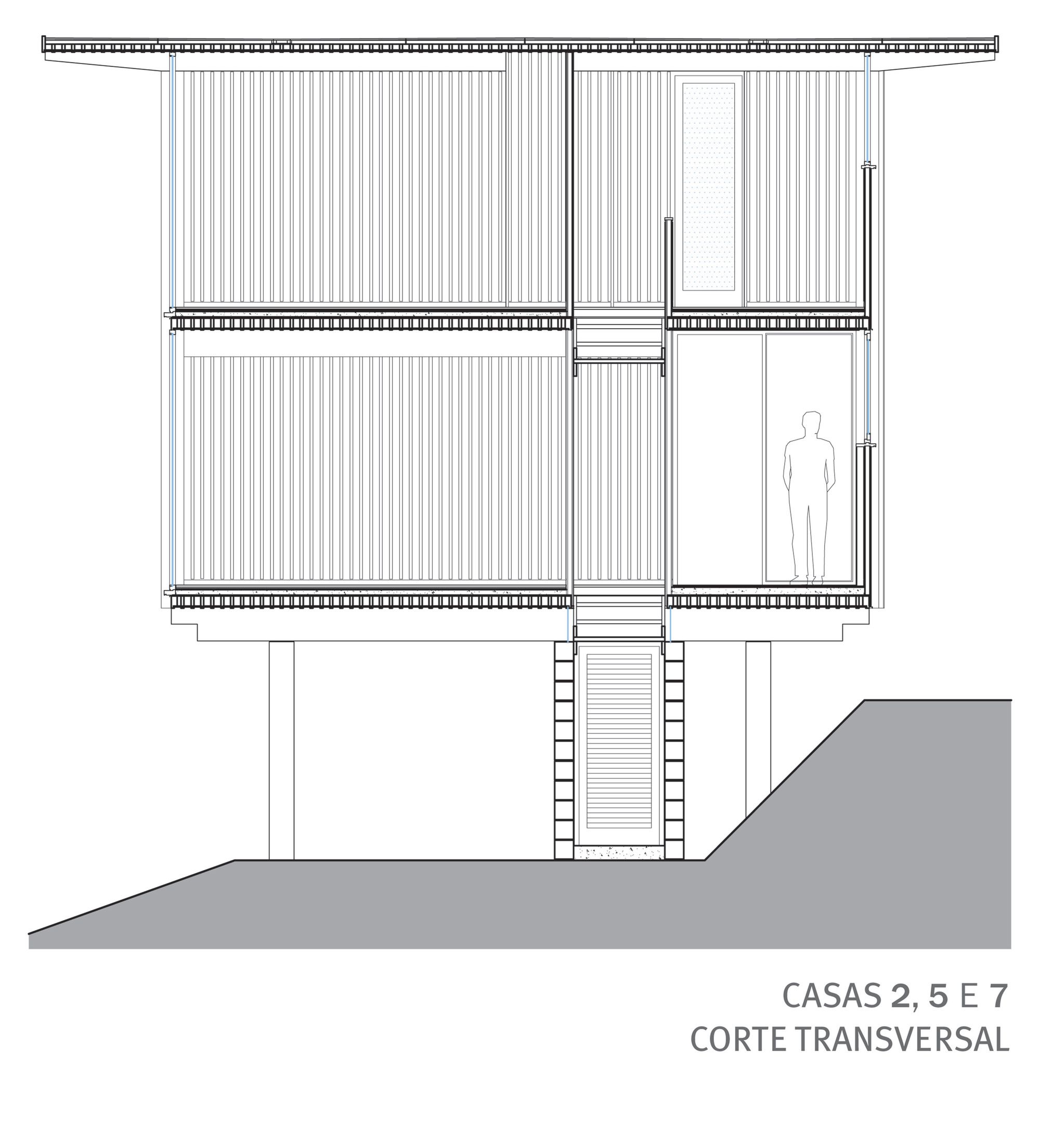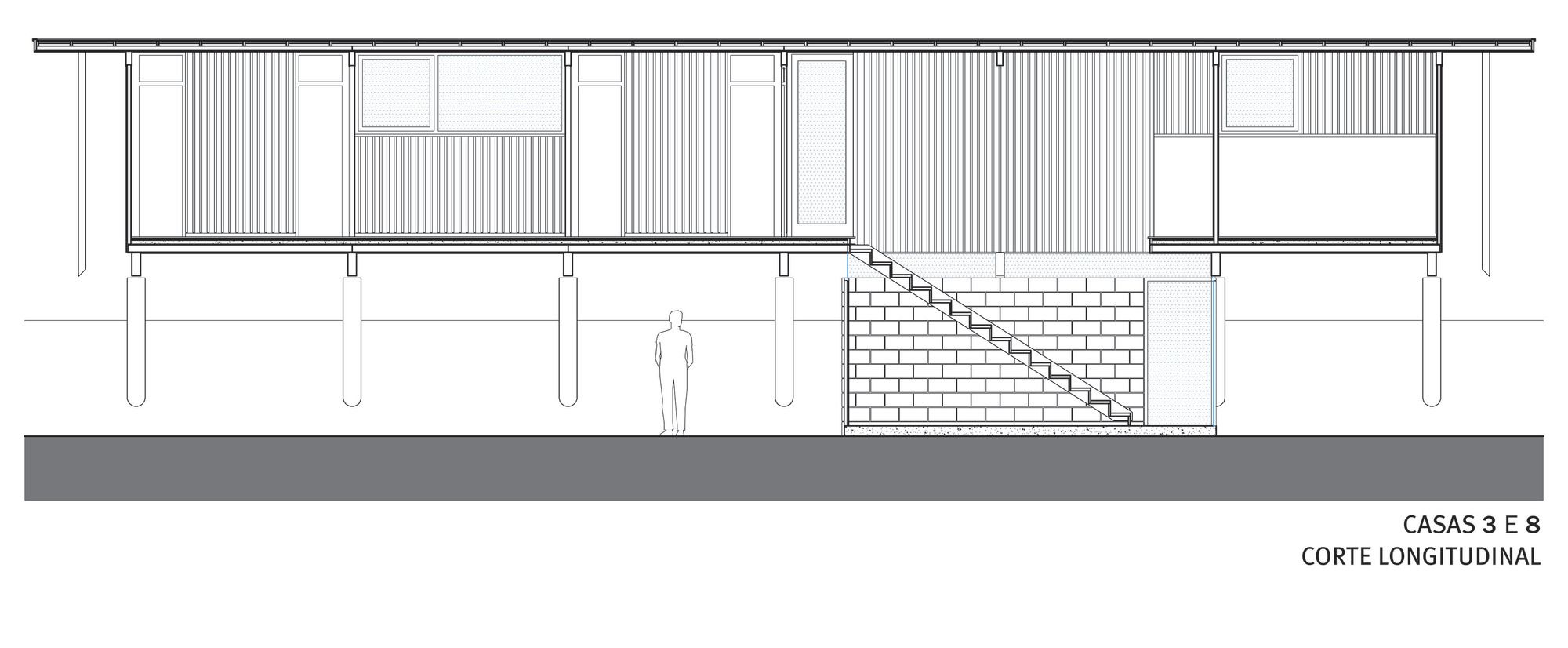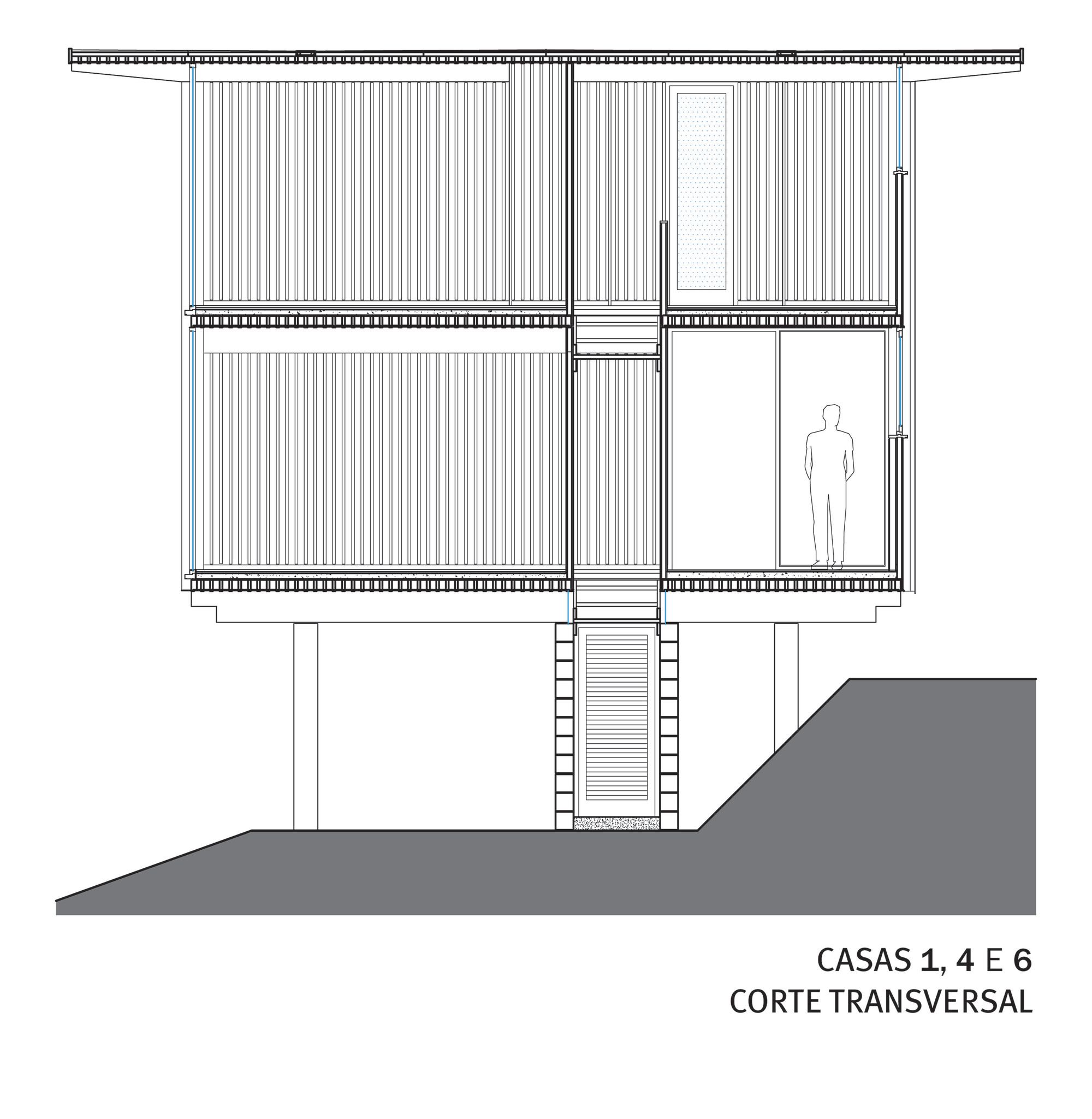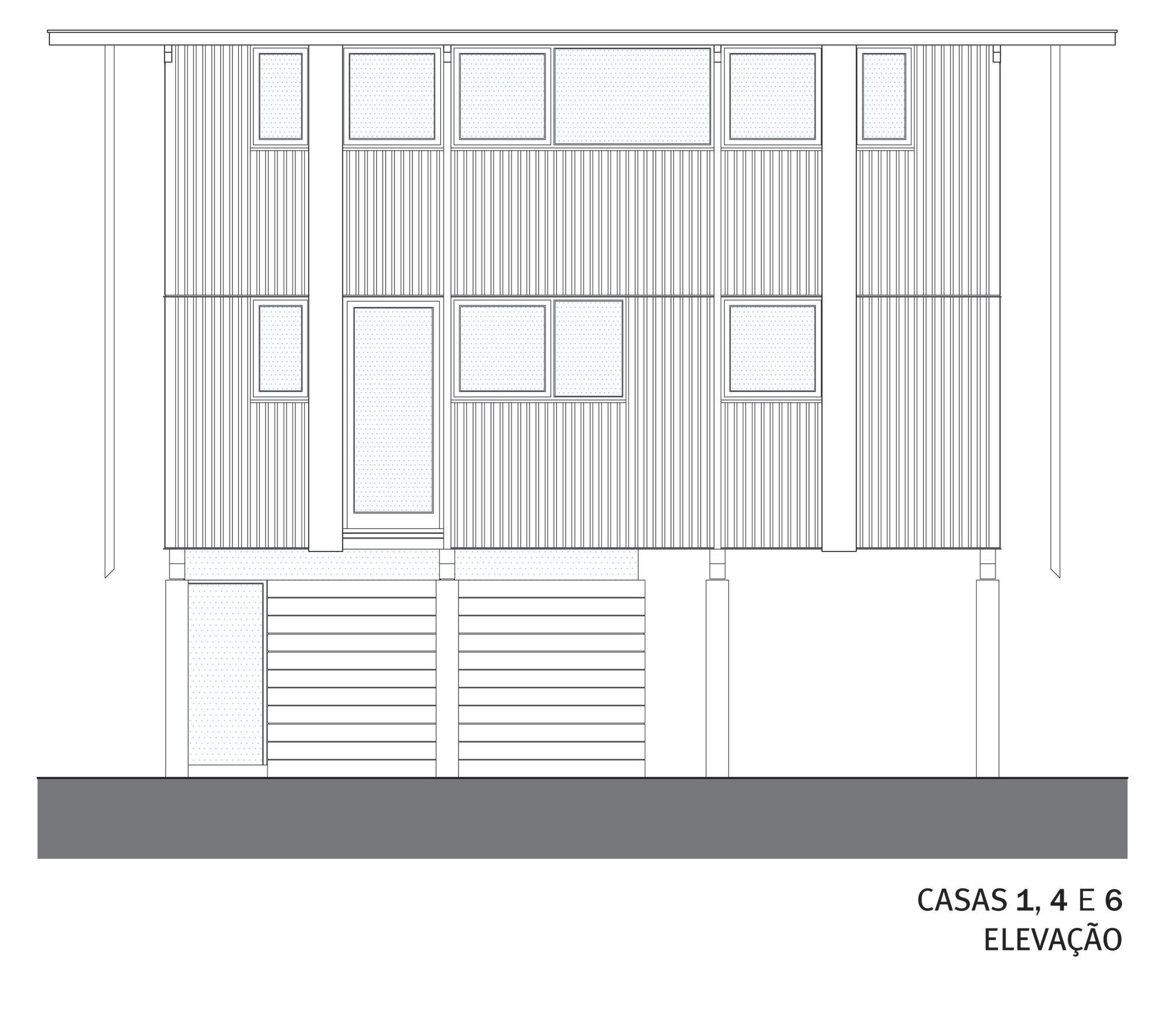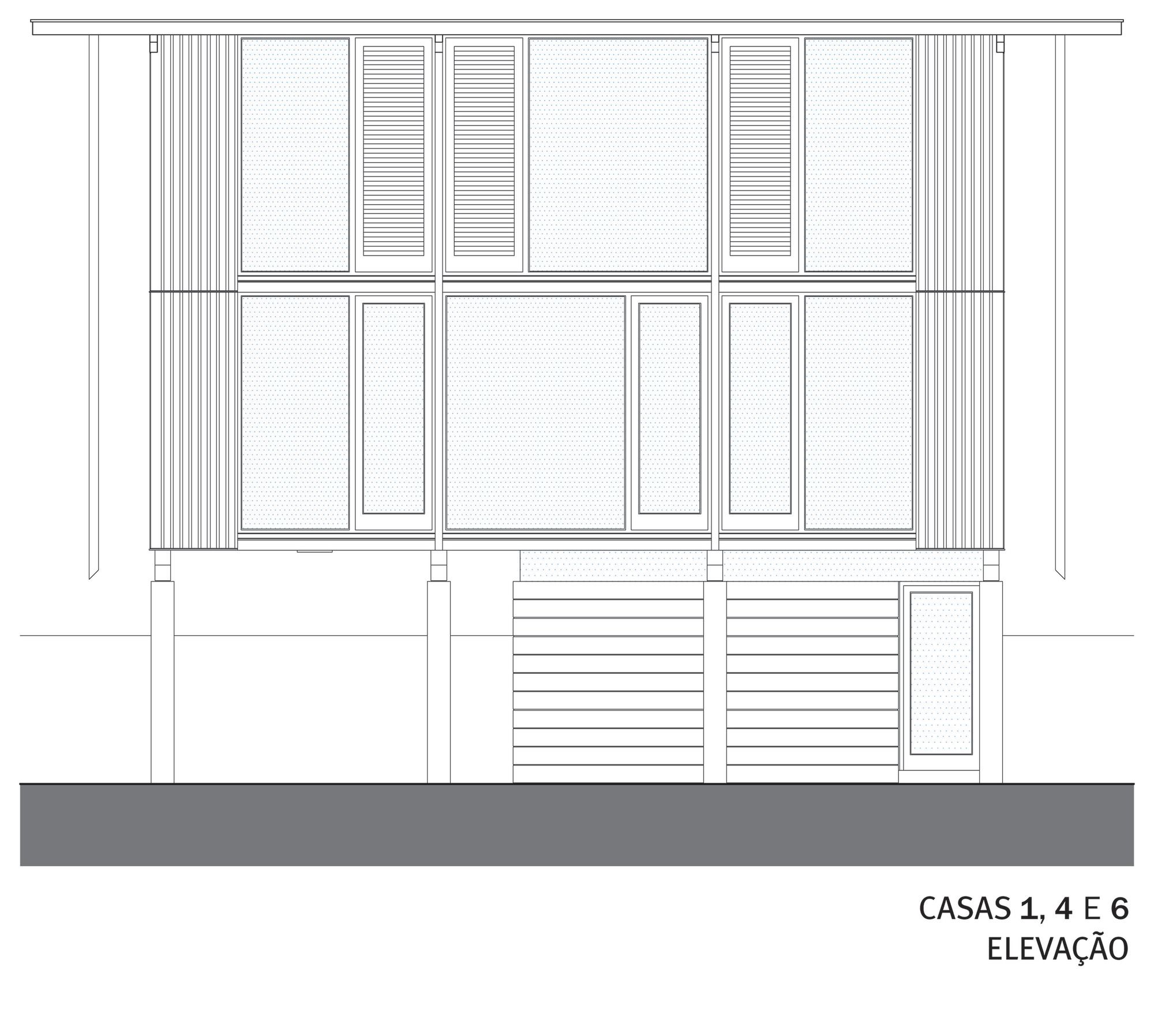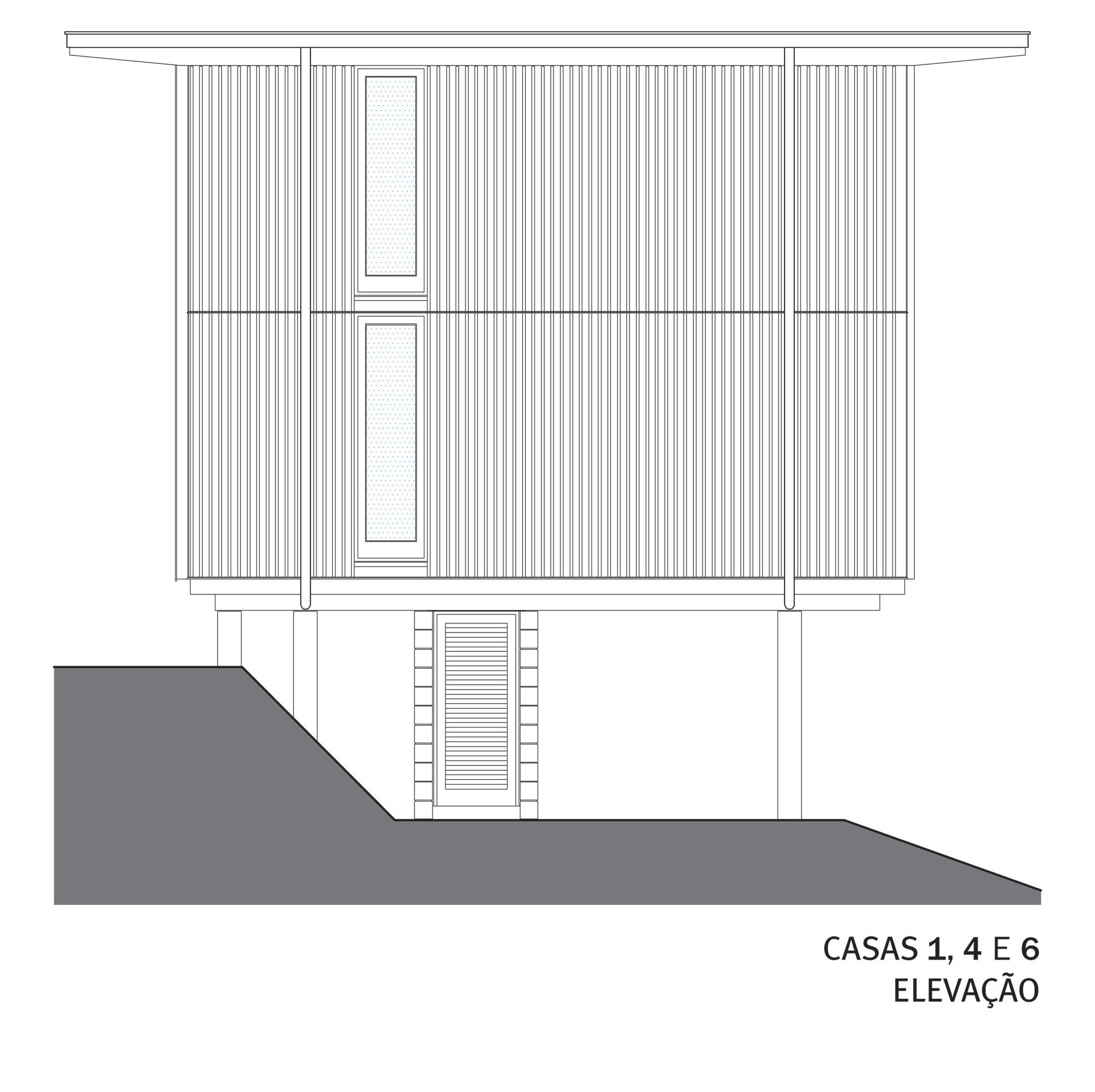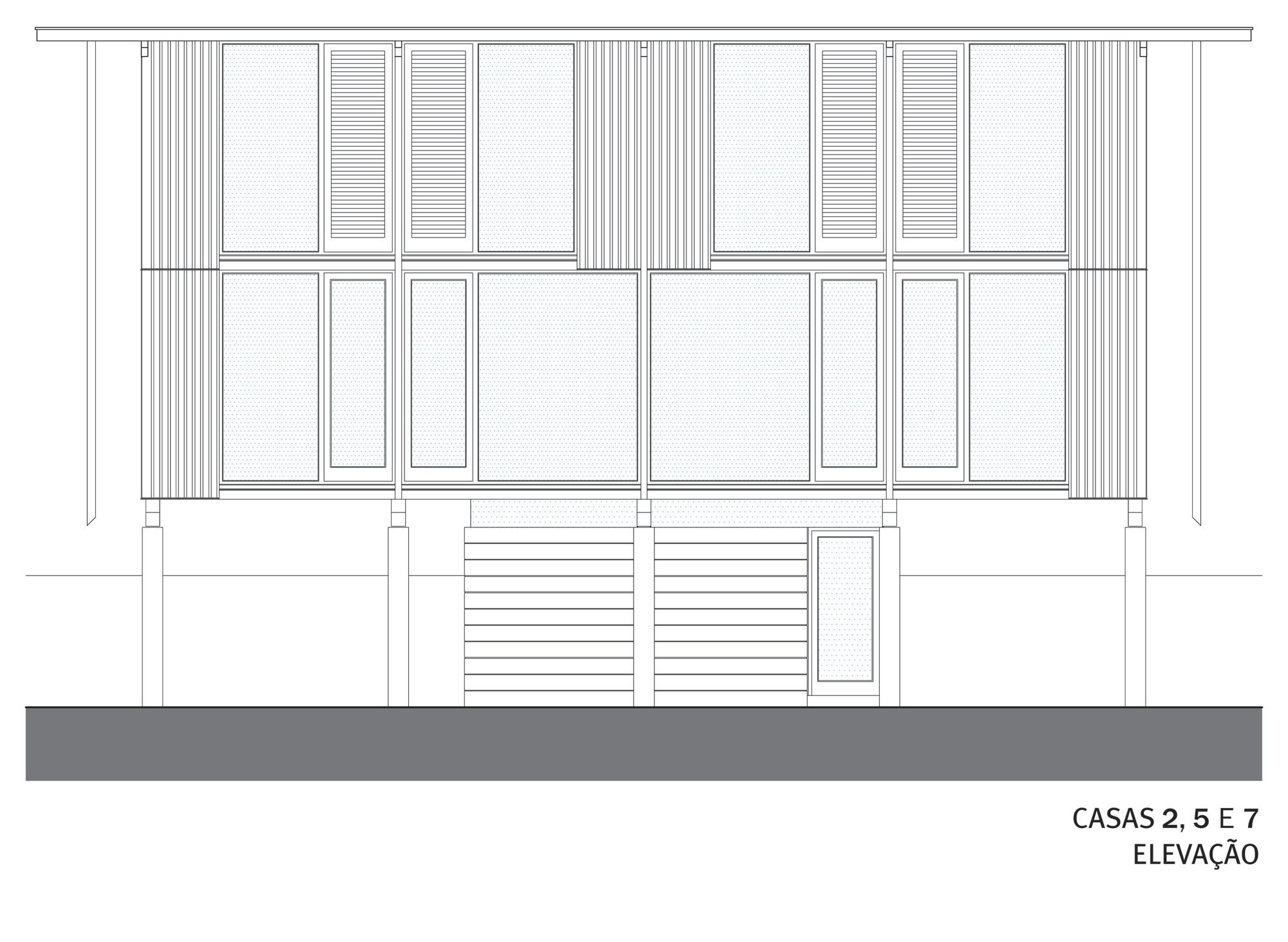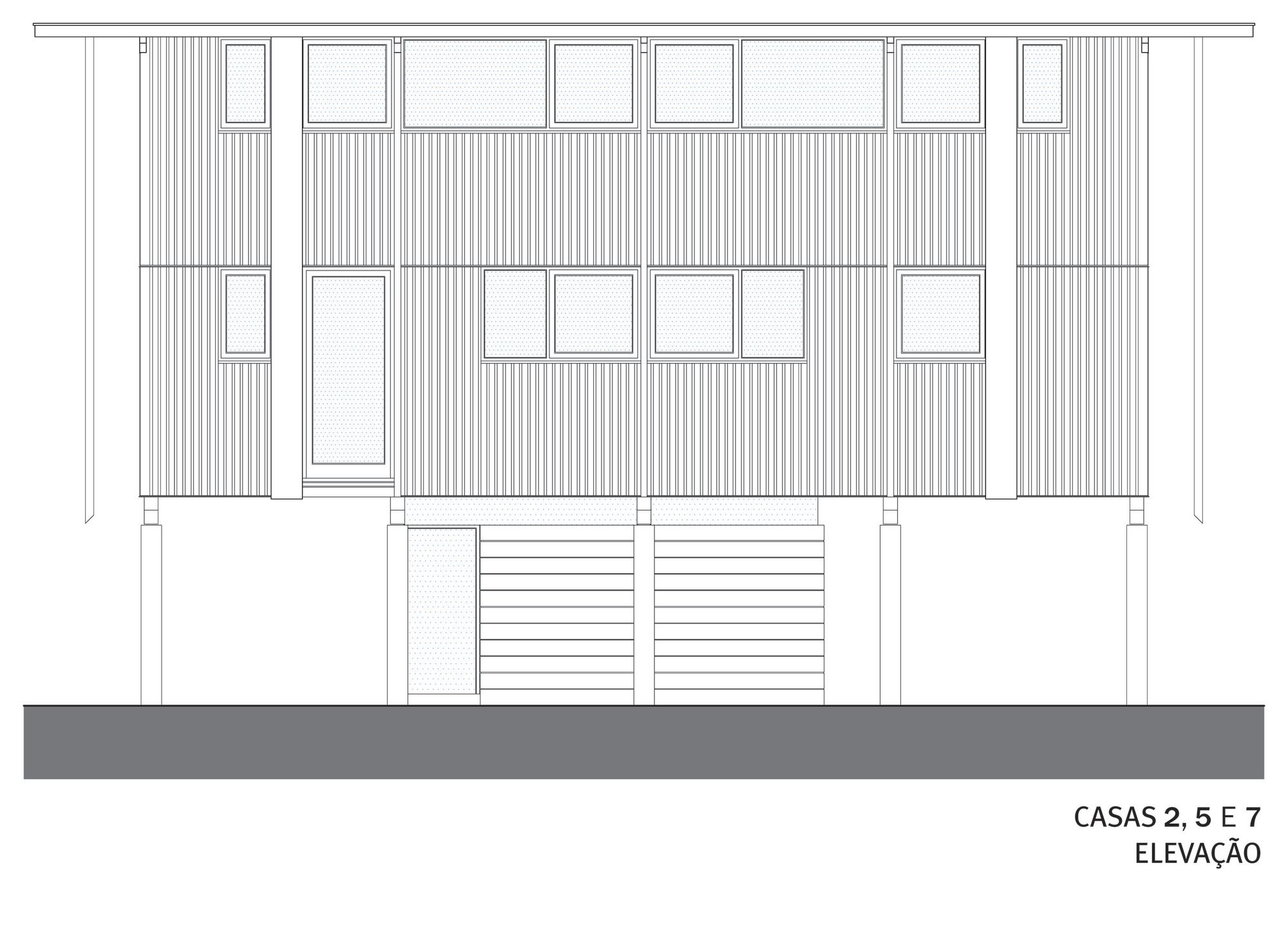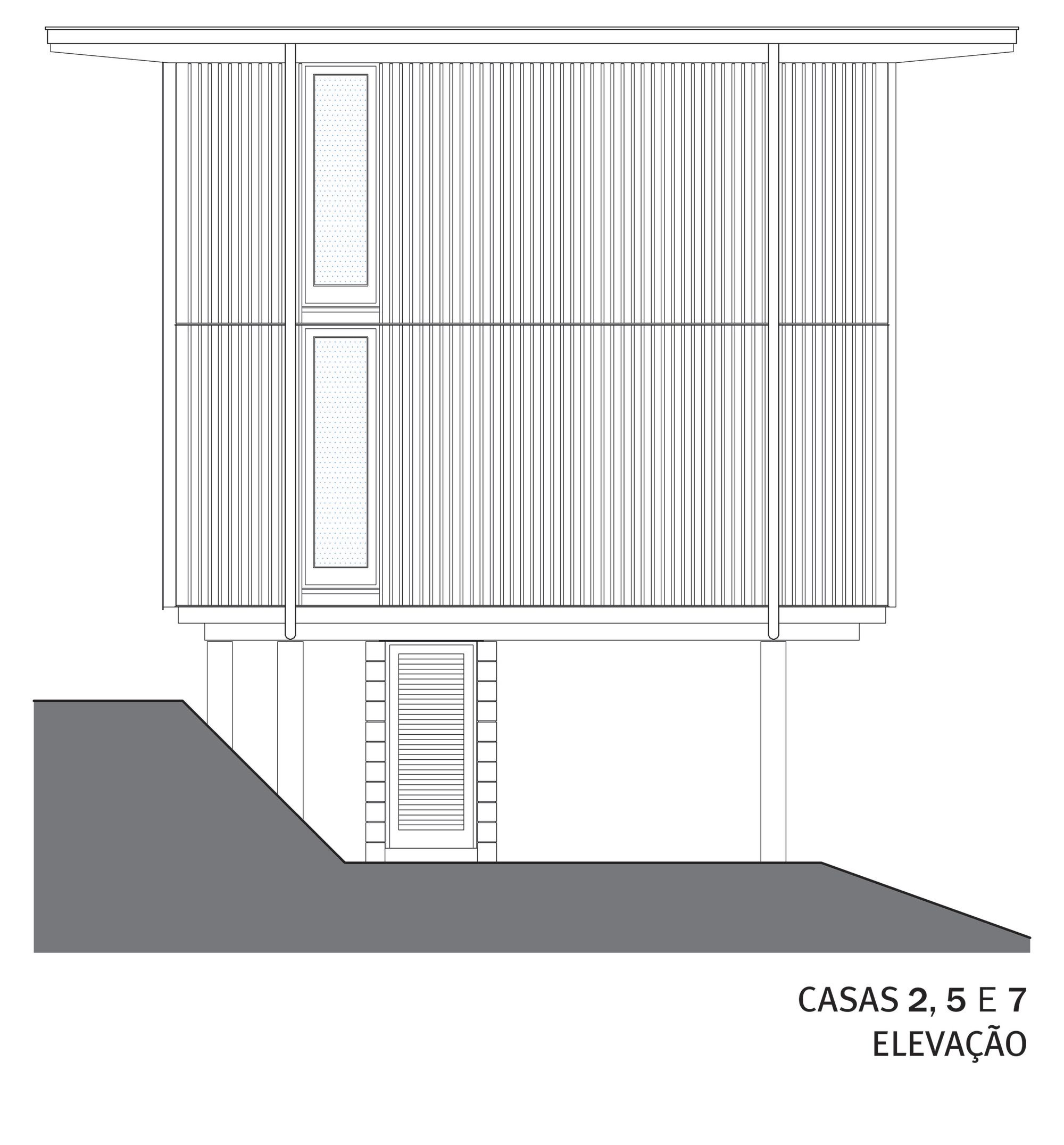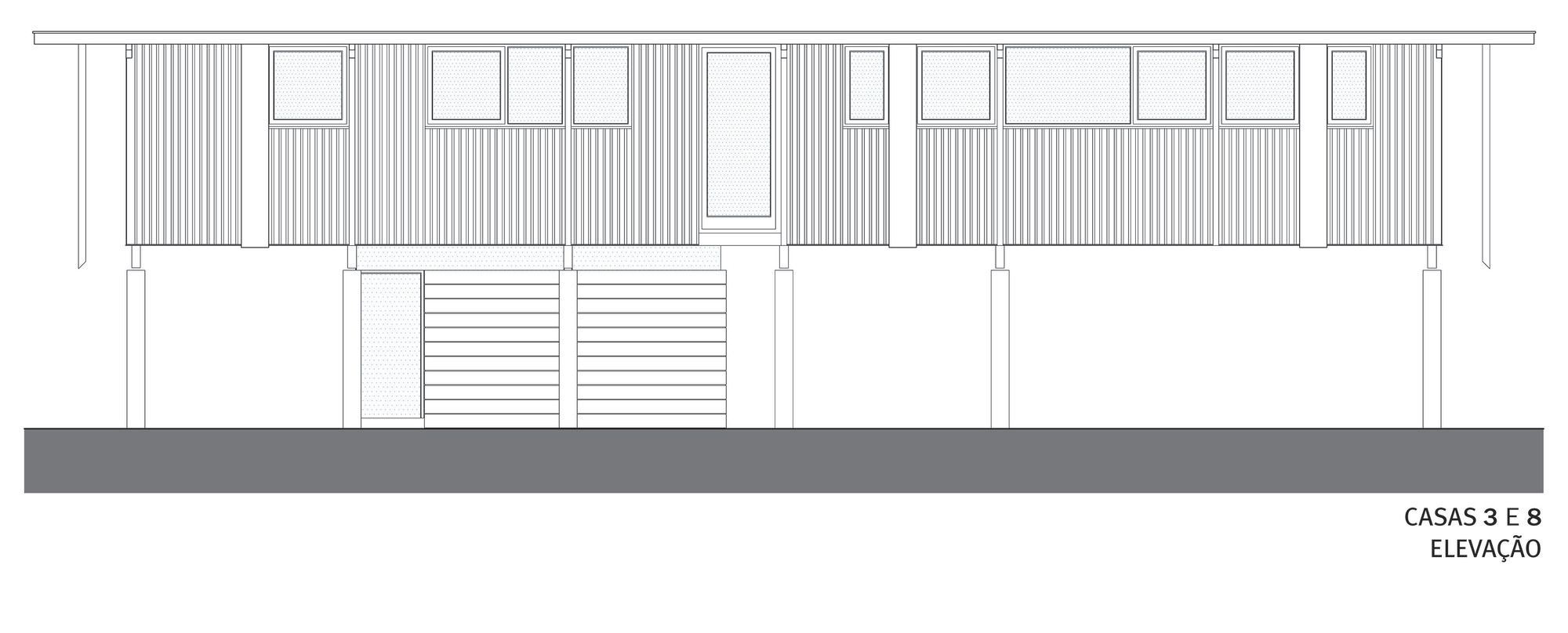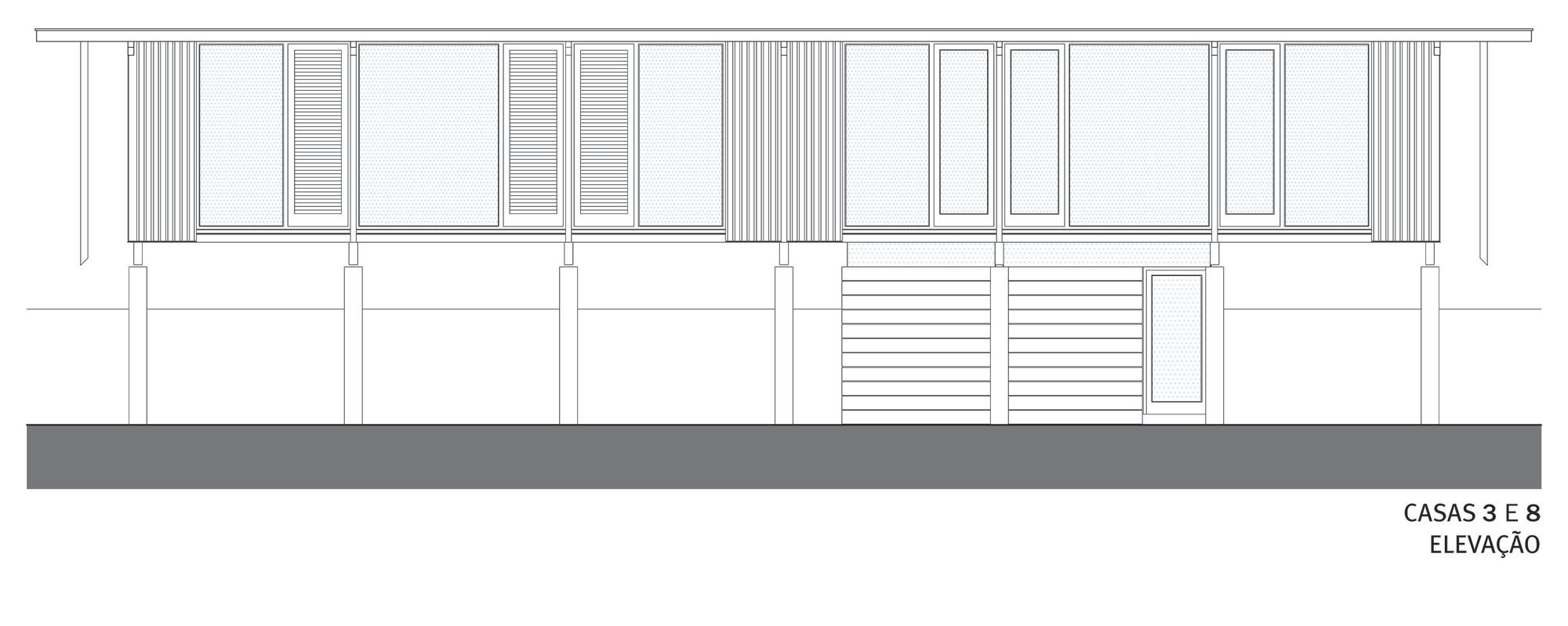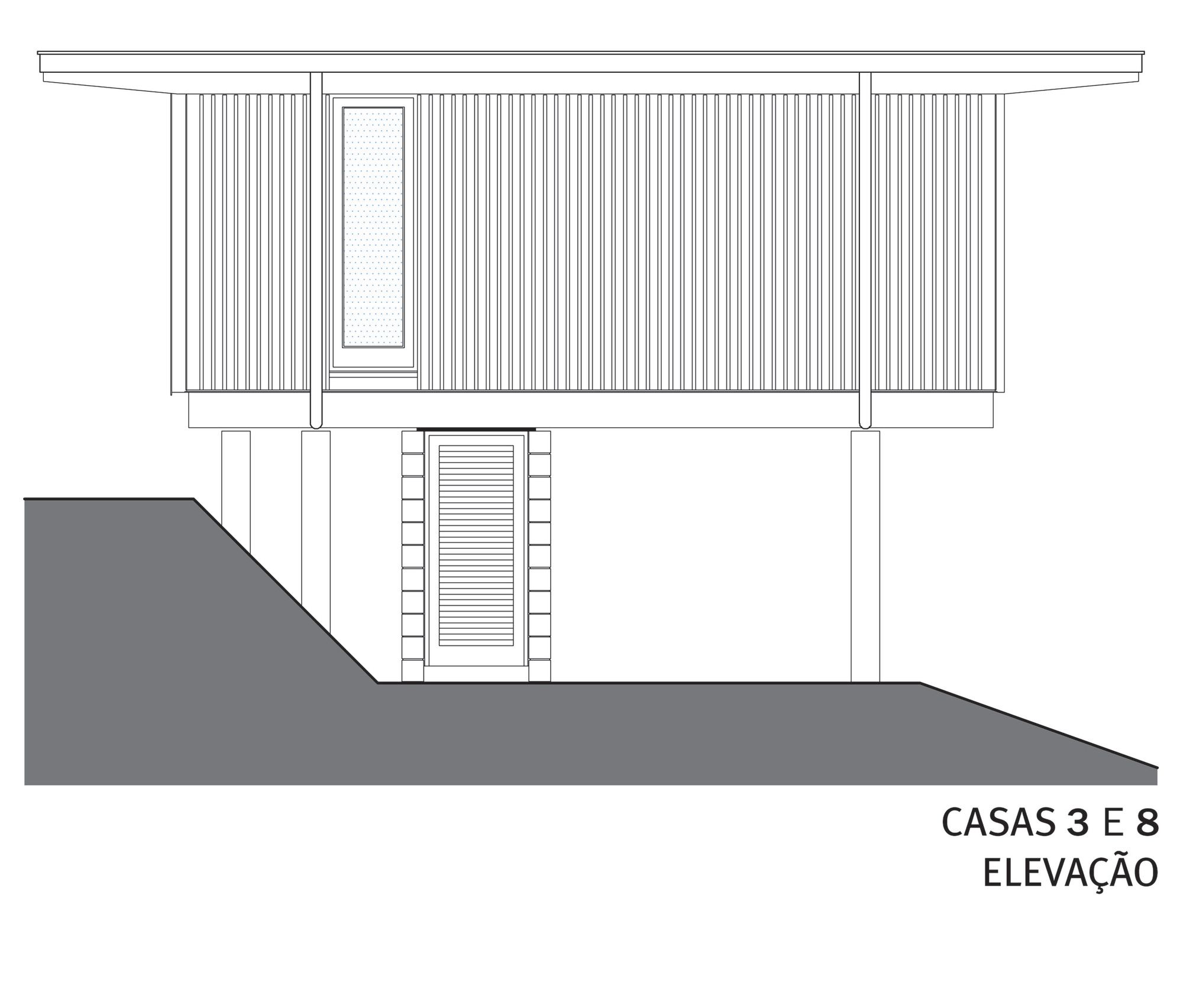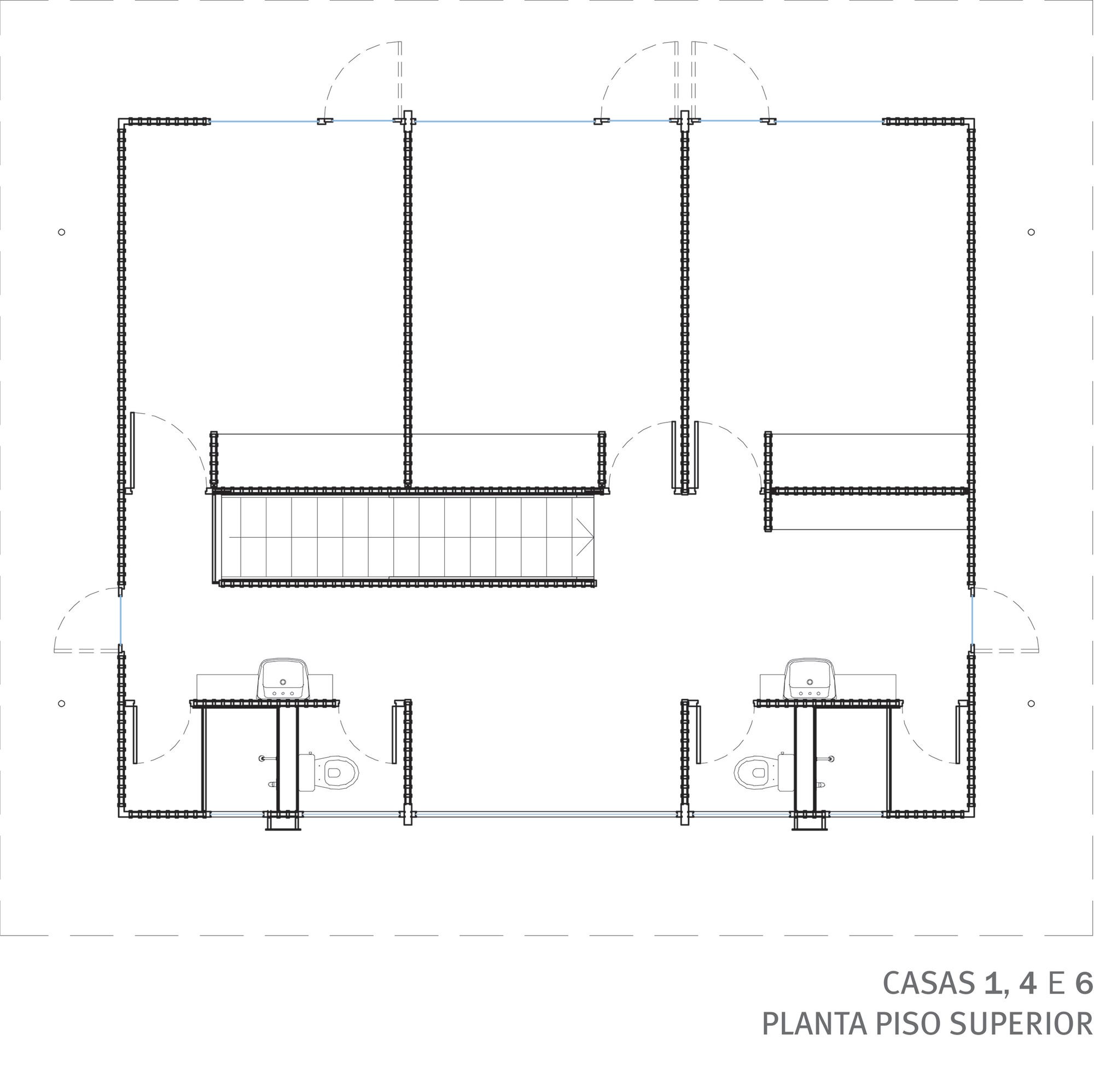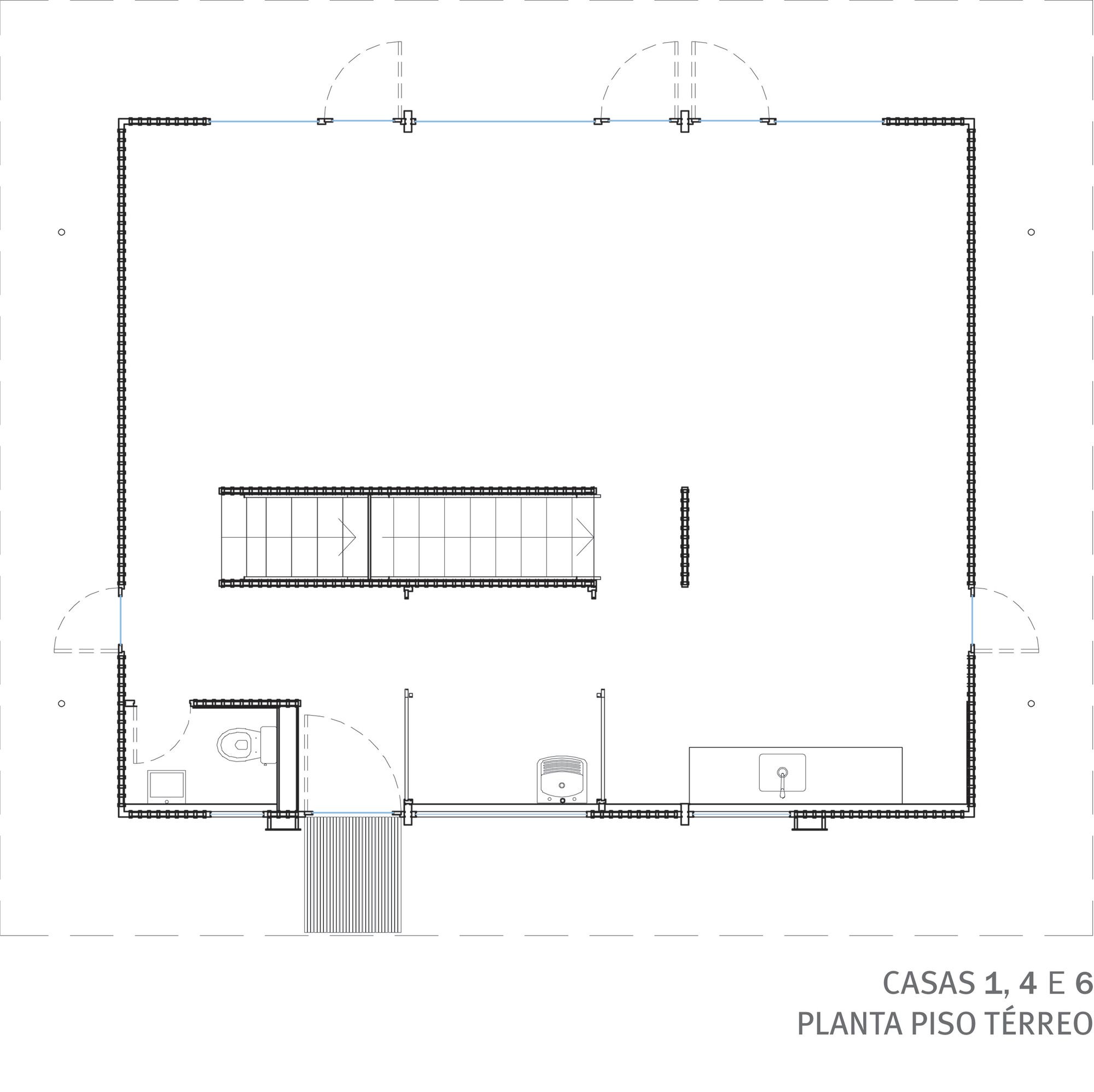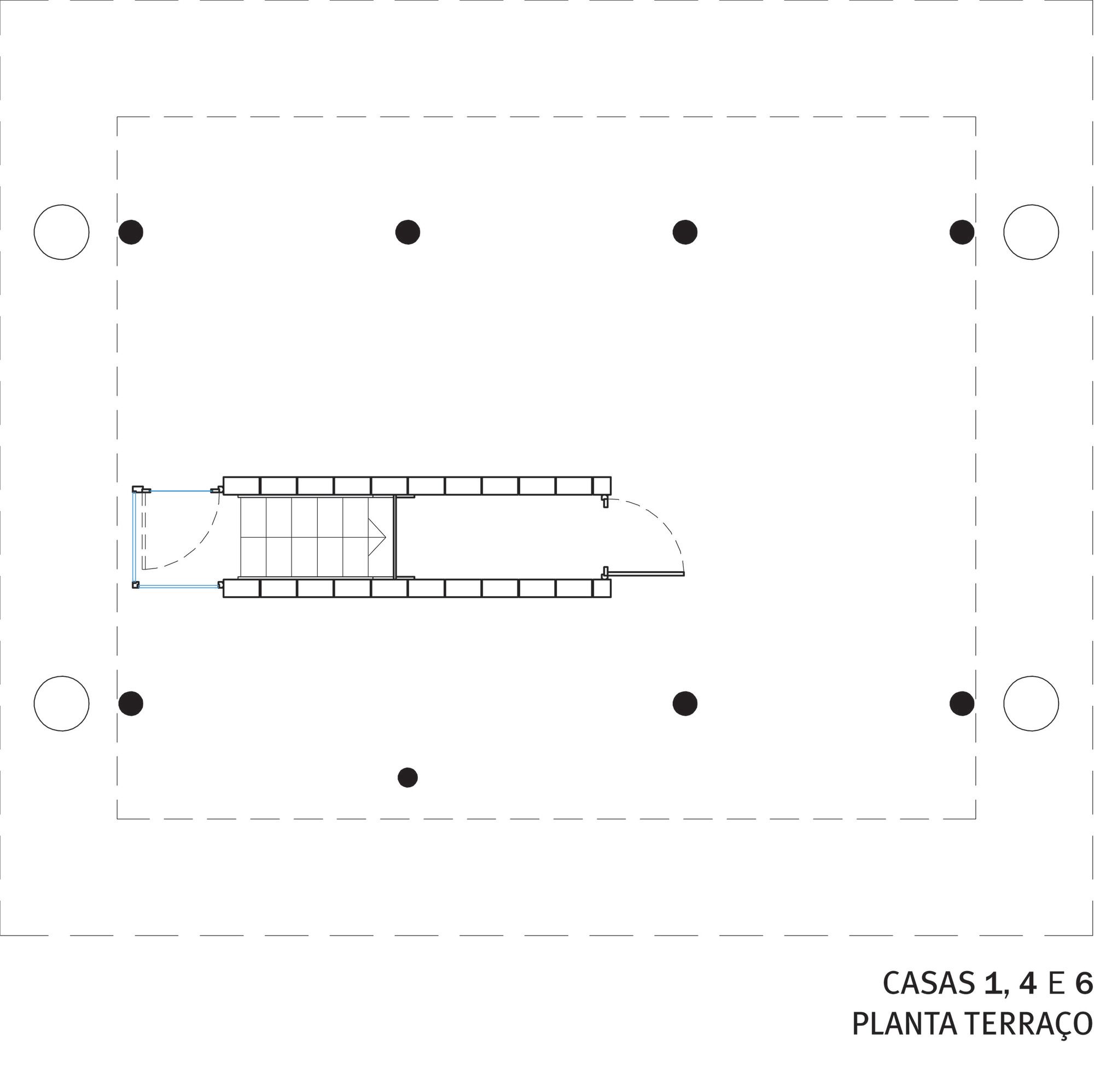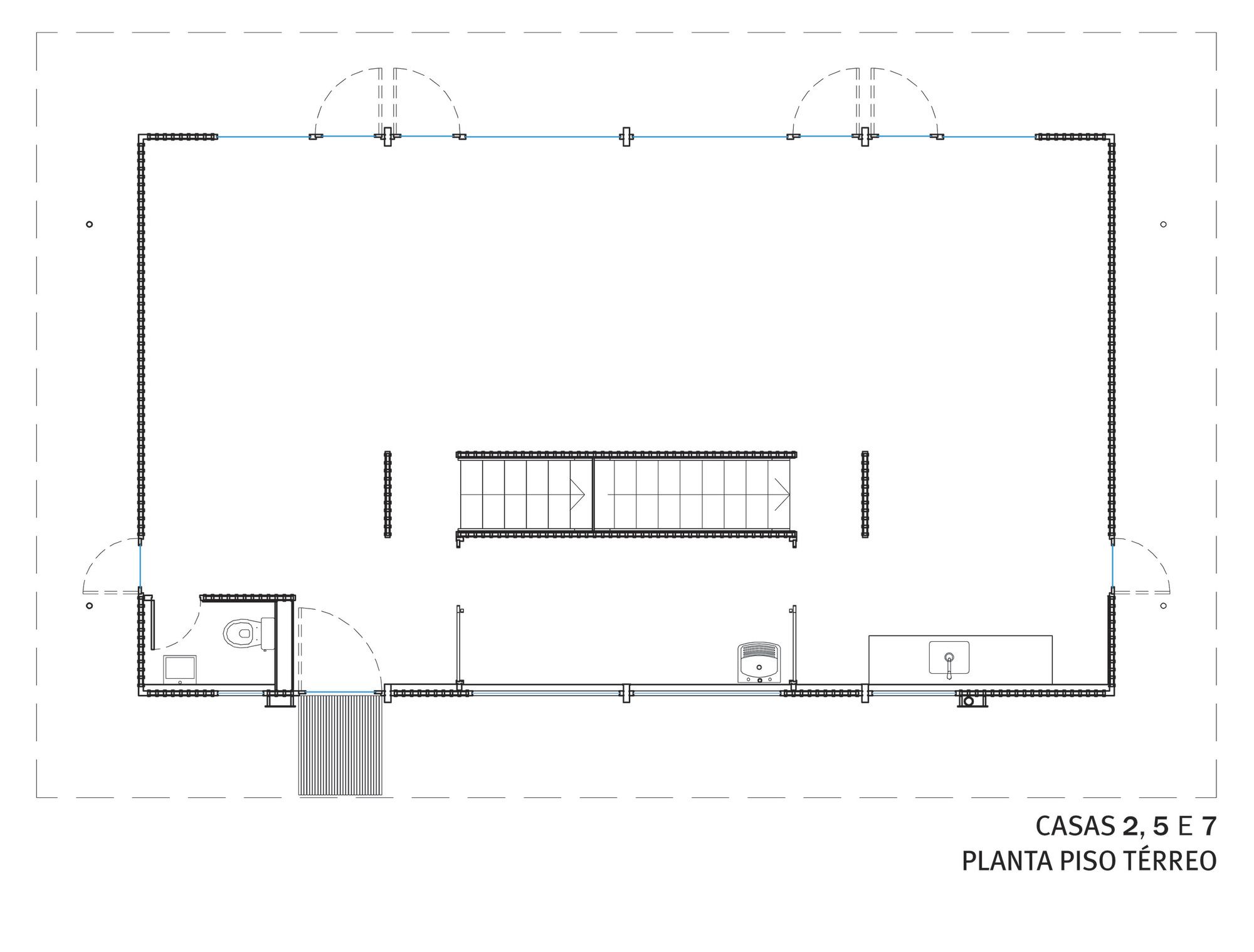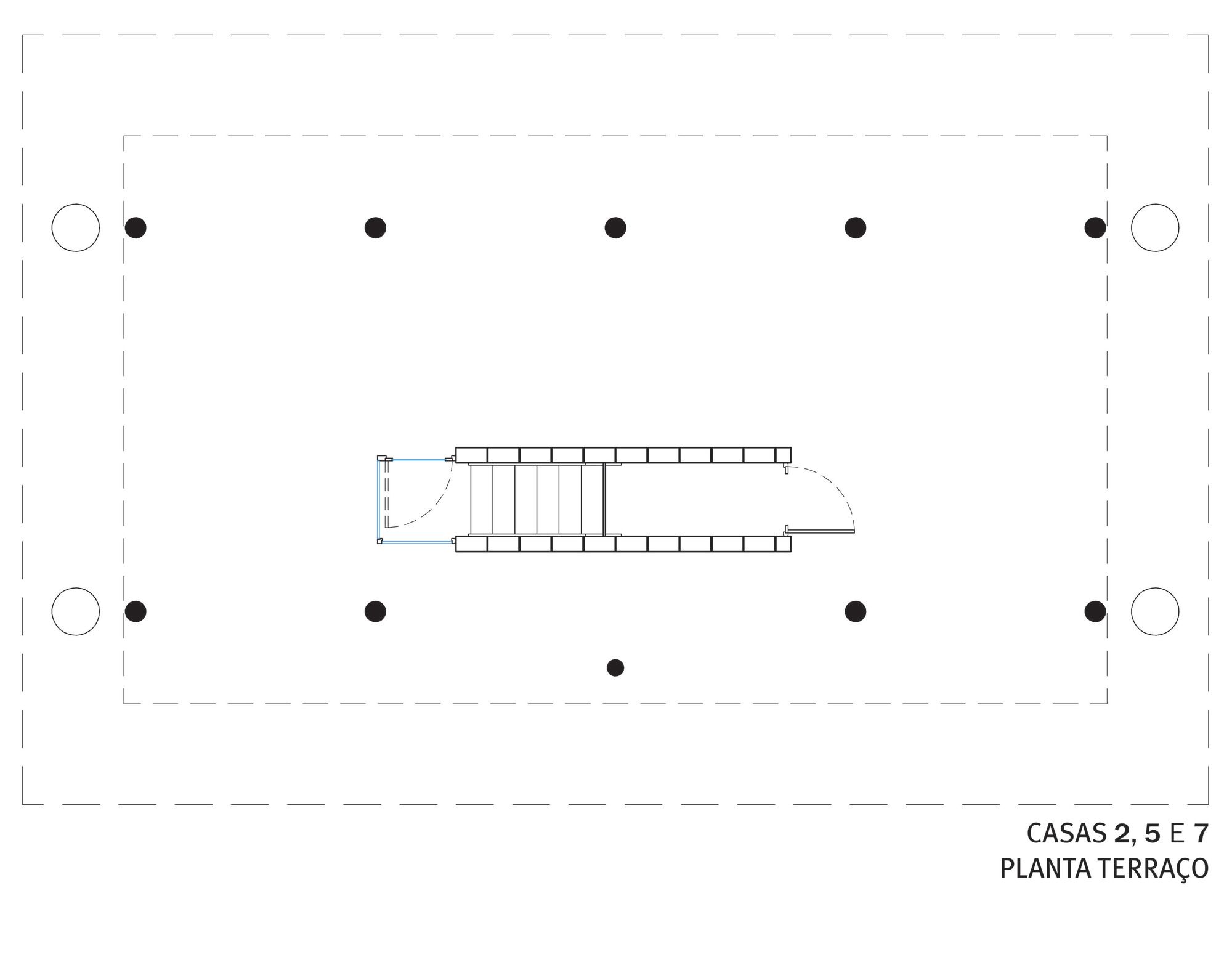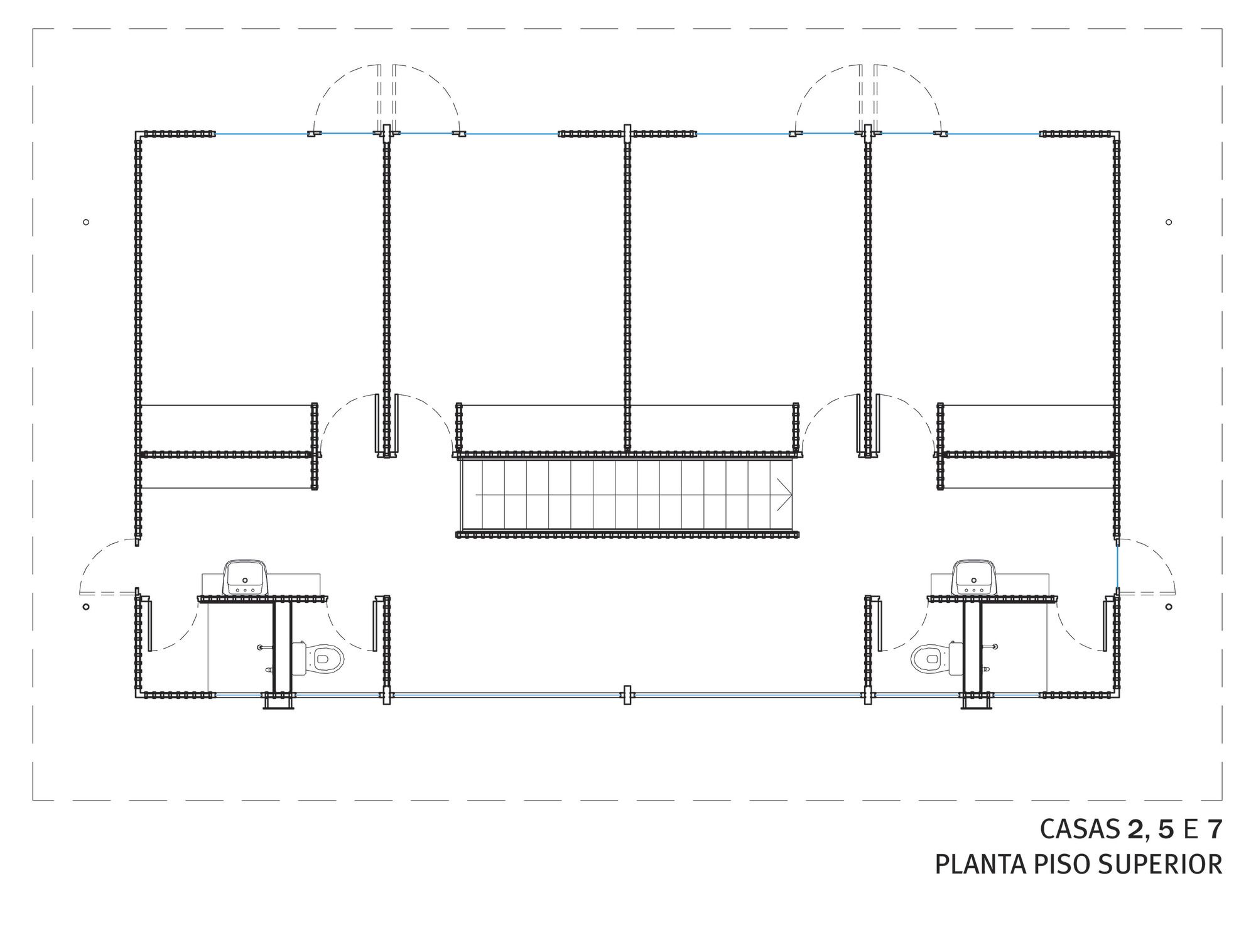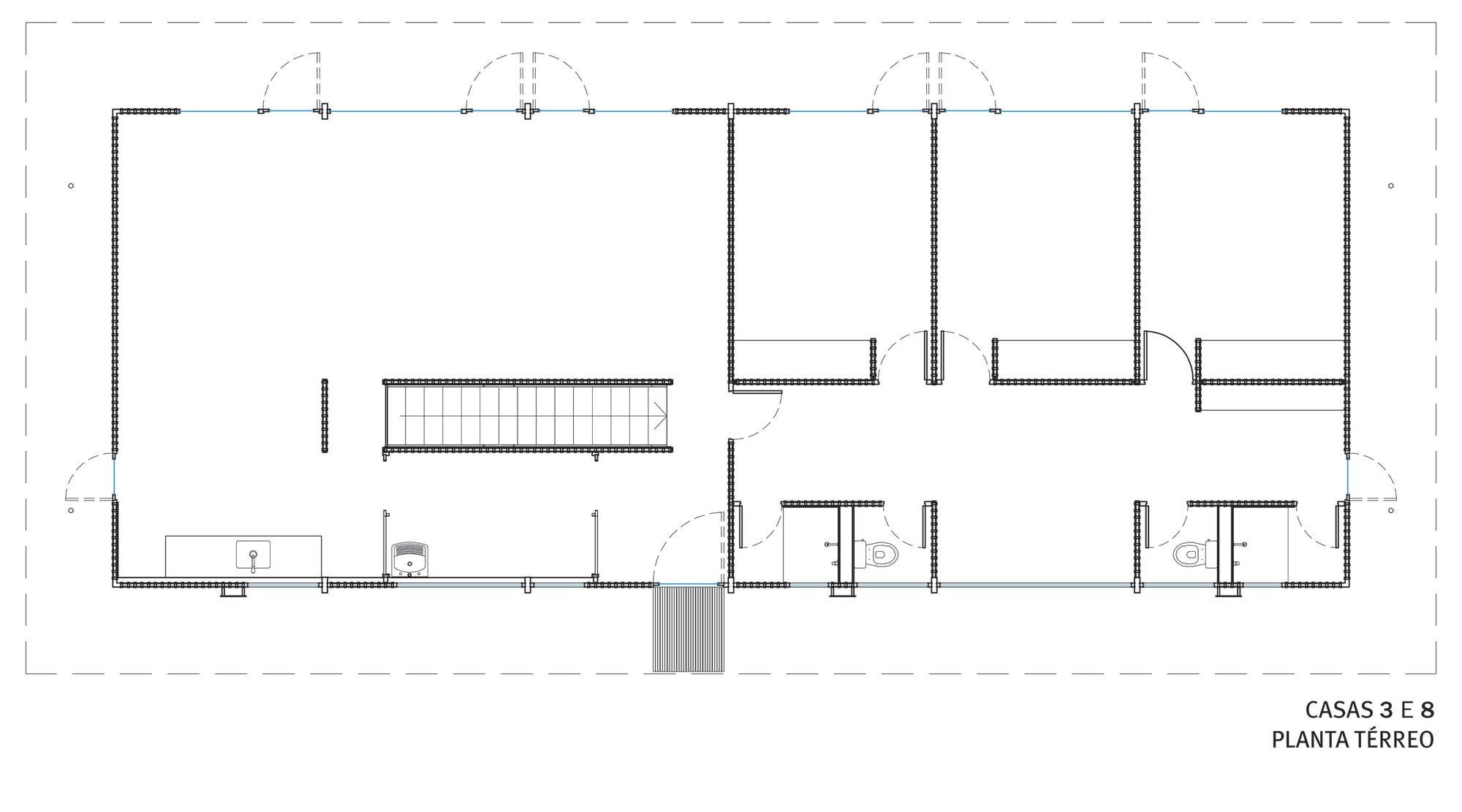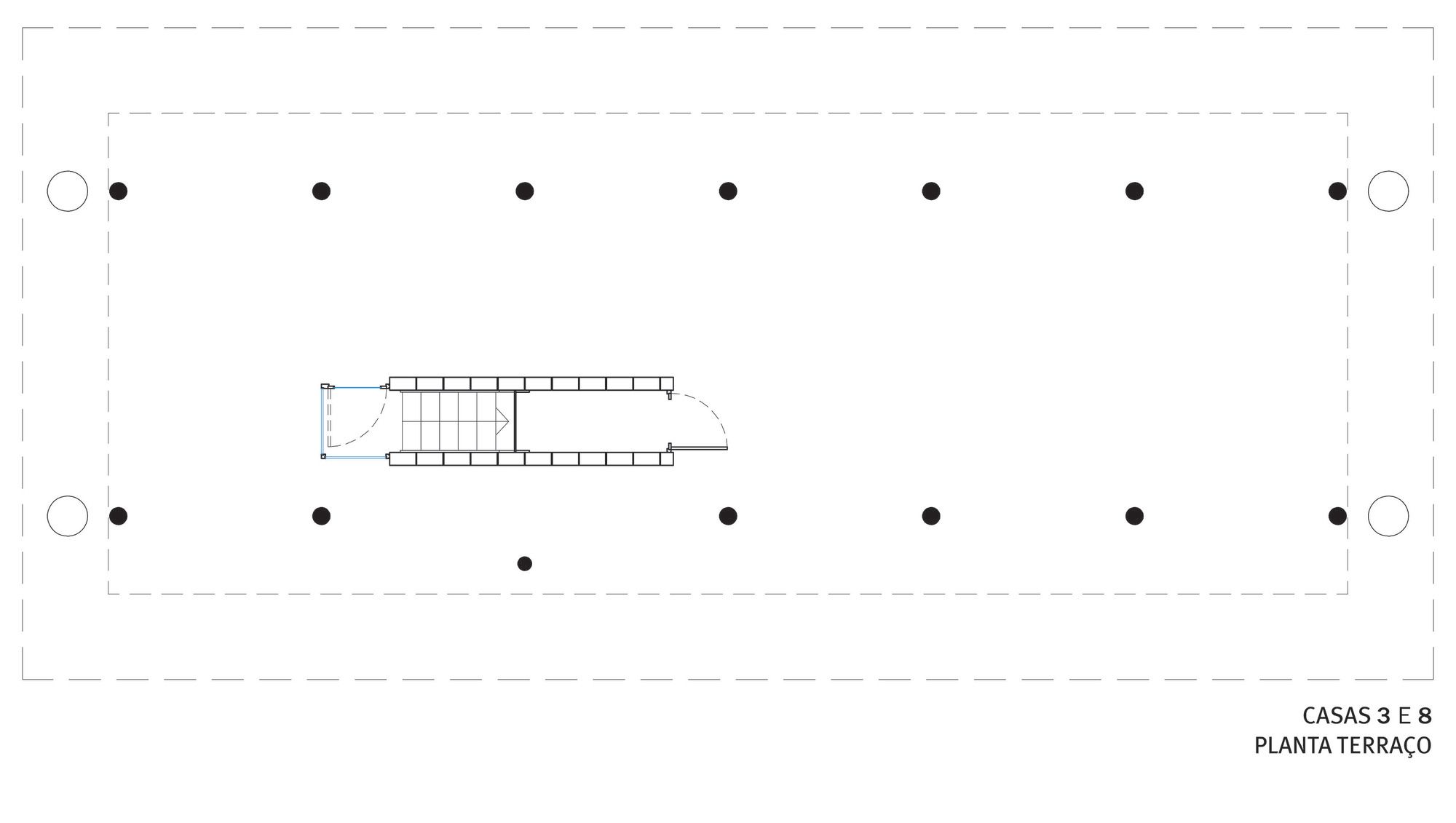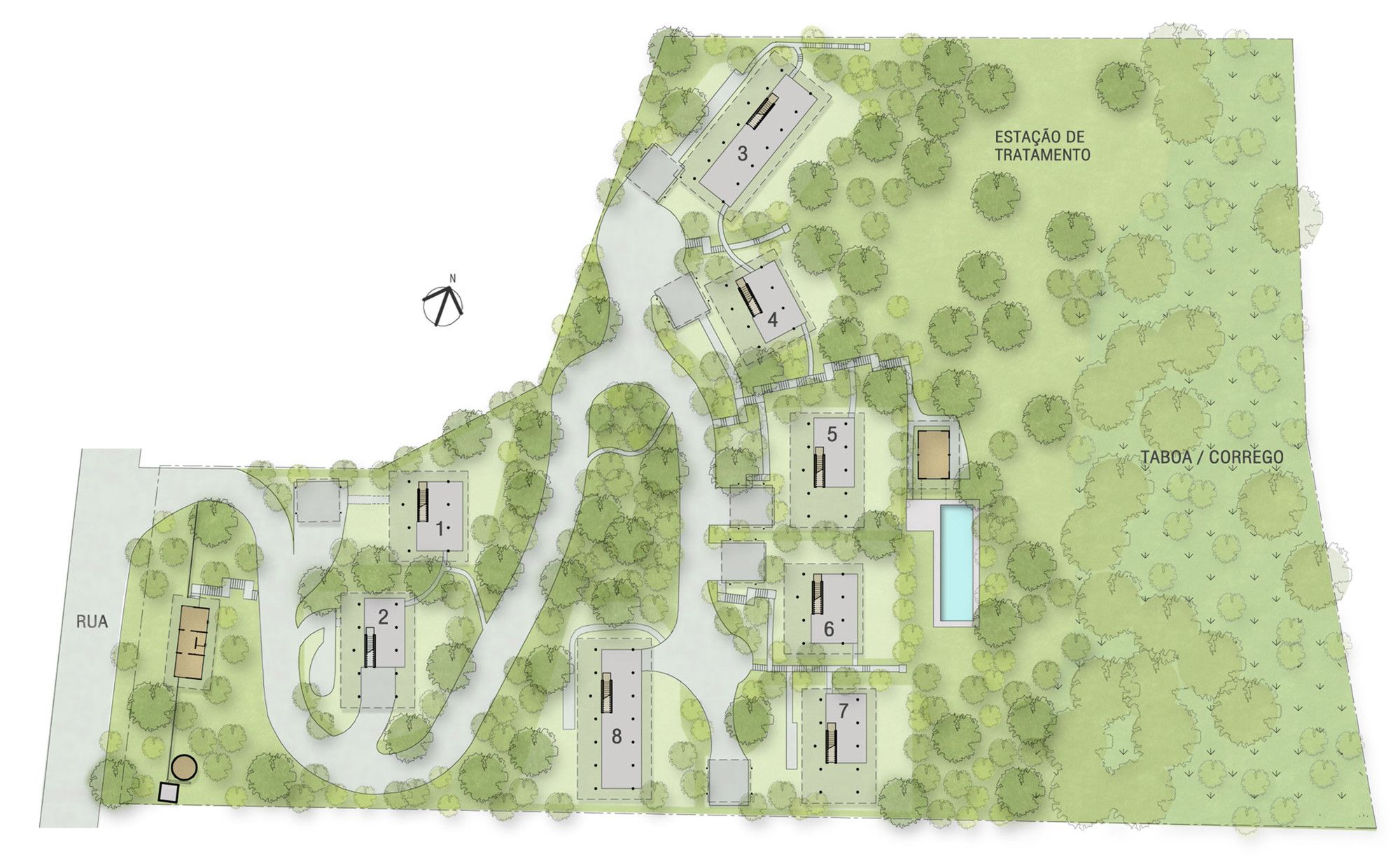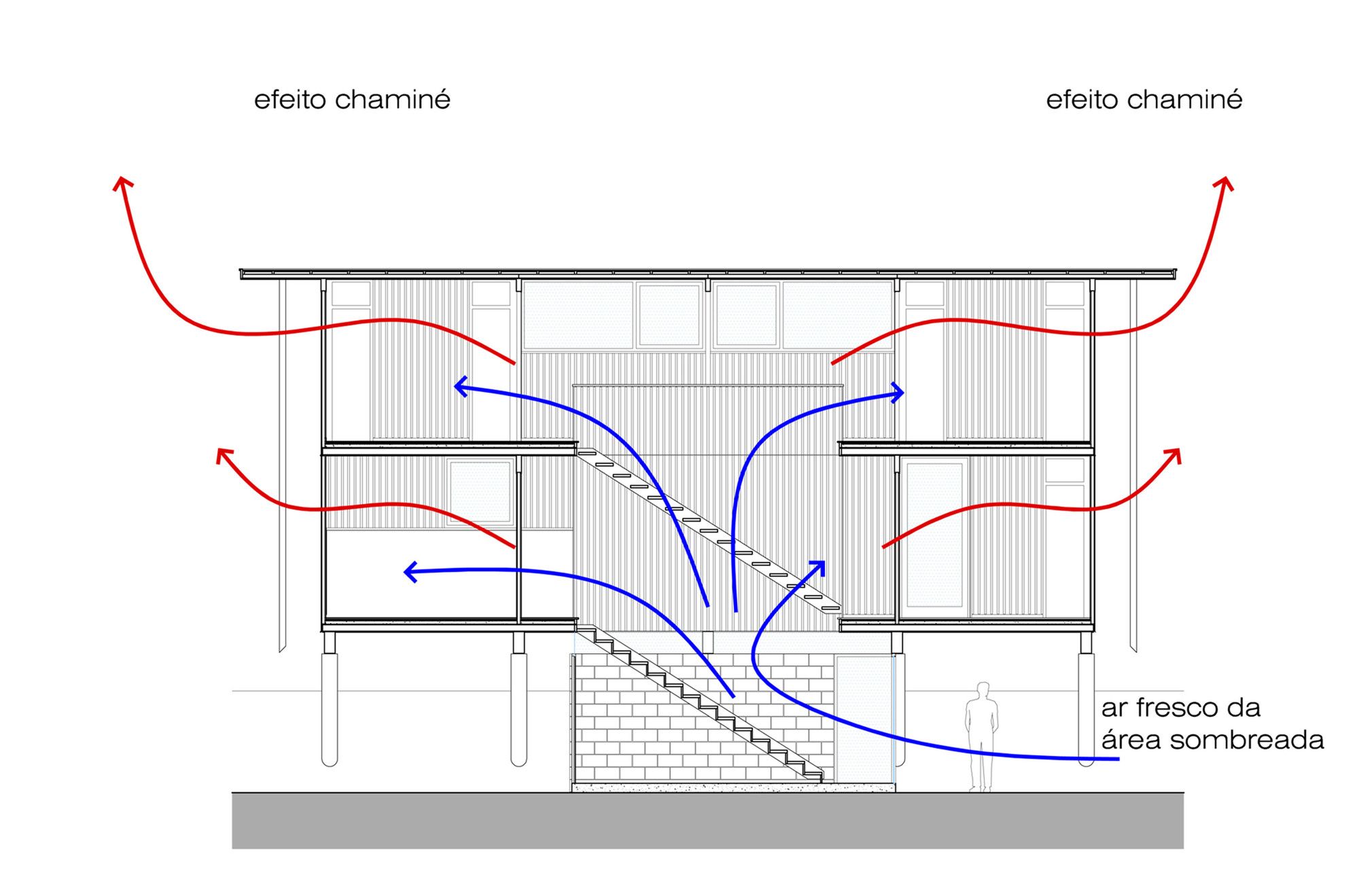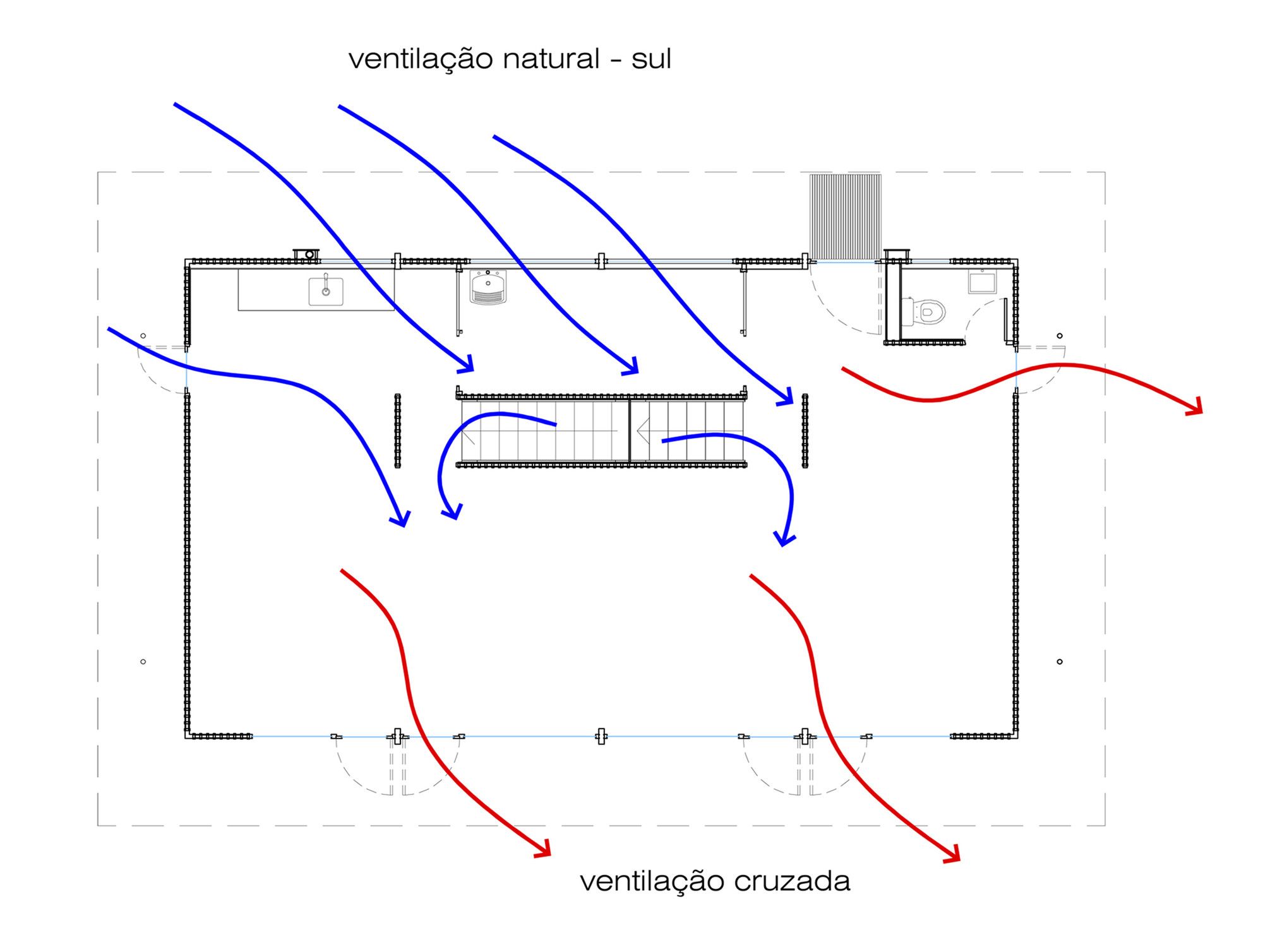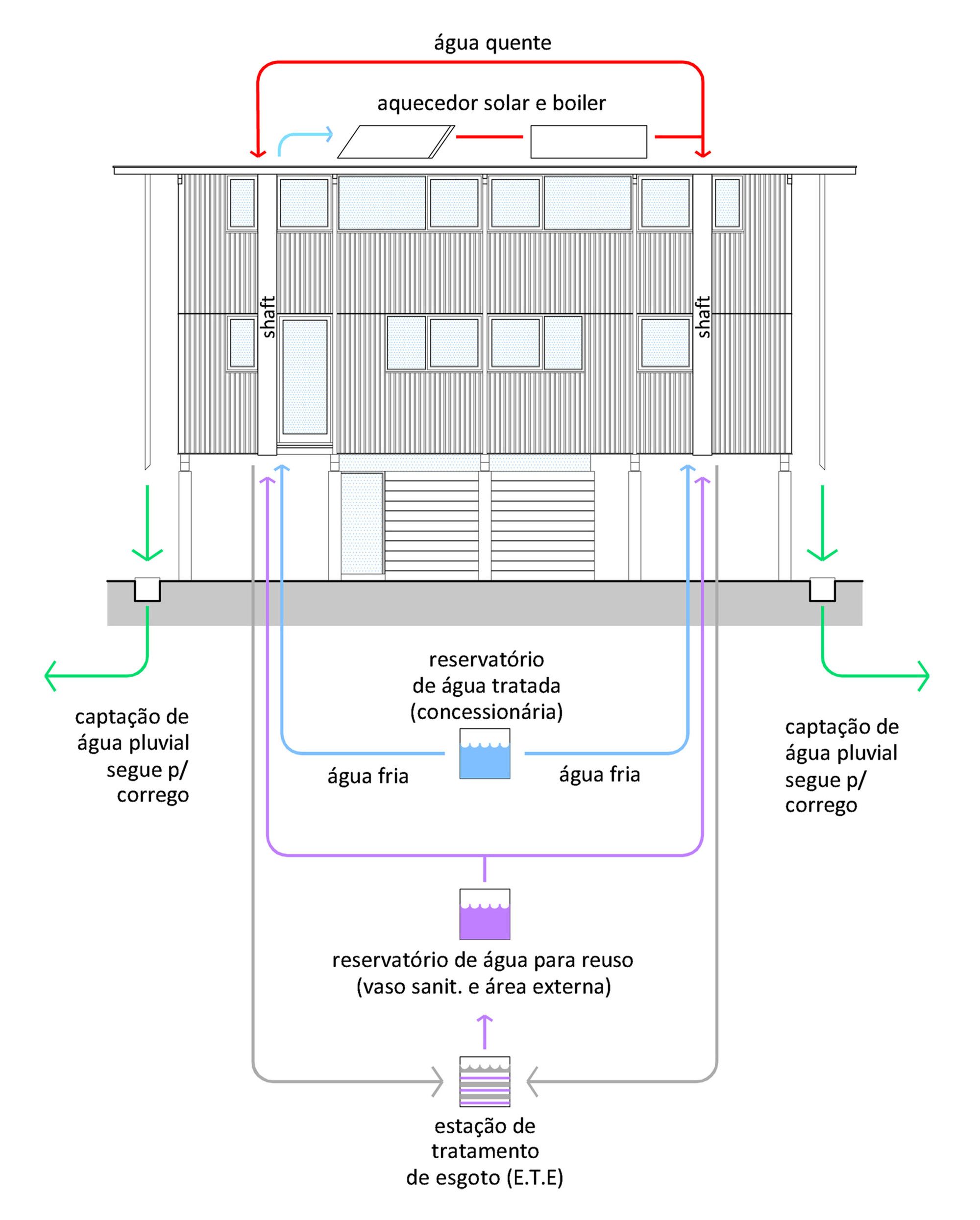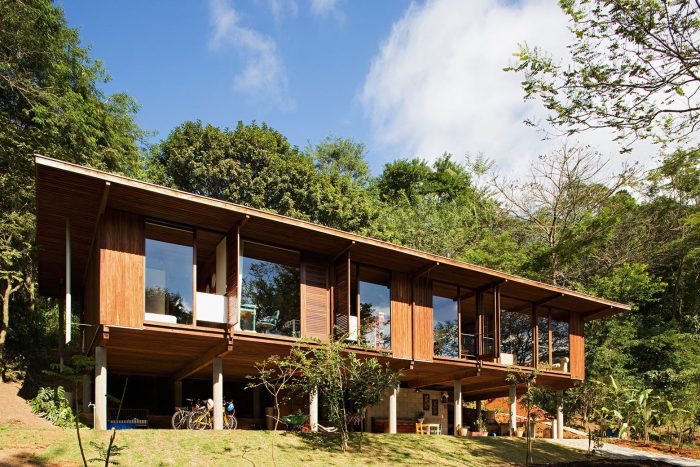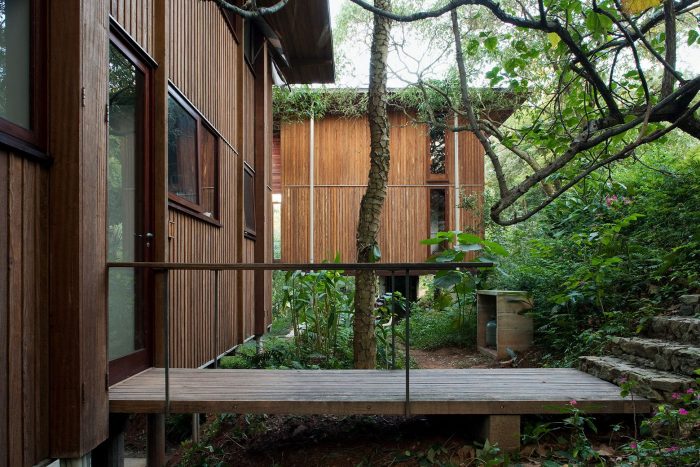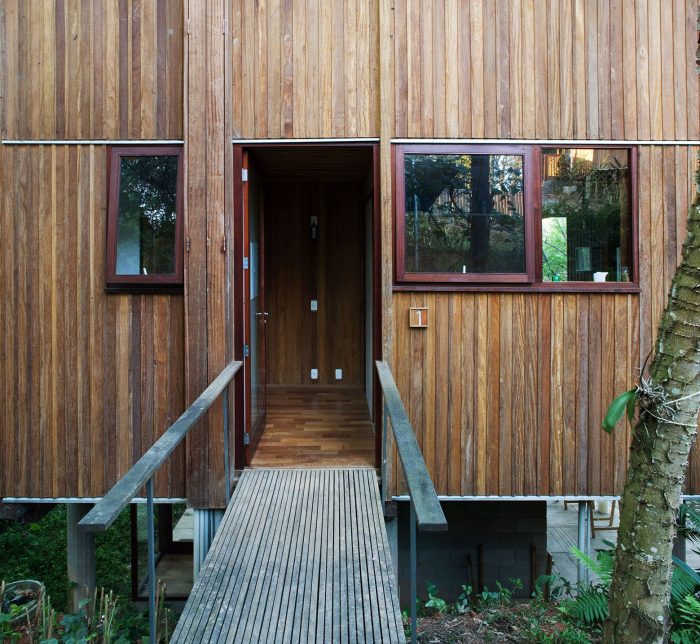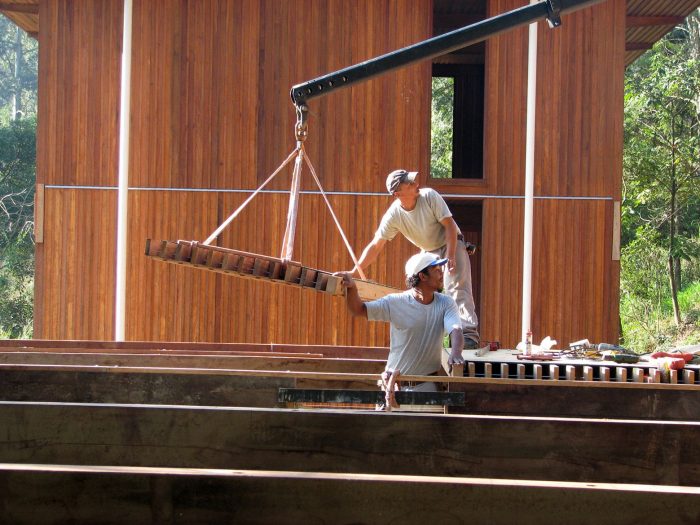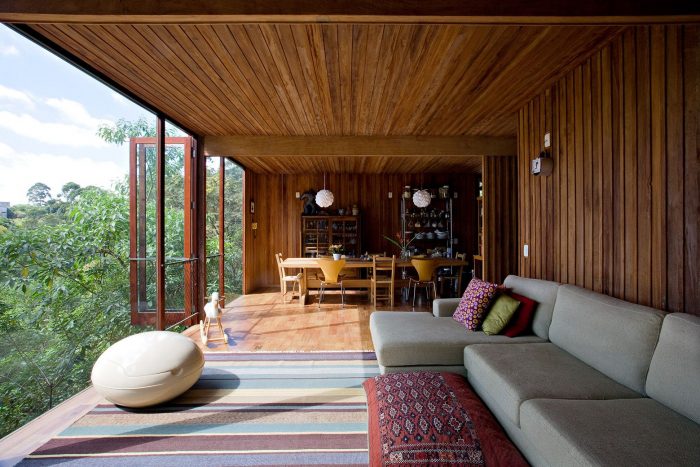Vila Taguai
Vila Taguai designed by Cristina Xavier Arquitetura, The residential project comprising eight wooden houses at Vila Taguaí, located 22 km from the centre of São Paulo, is a property development that was conceived as an innovative alternative, building new living spaces amongst the greenery of the city’s suburbs.
The site is placed among dense vegetation on an East facing, 35% slope and the implantation sought to maintain the natural terrain to the greatest extent possible. The eight houses are elevated off the ground, creating terrace gardens. The trees were preserved and new ones will be planted, reinforcing the native flora.
The road network is finished in cobblestones, maintaining soil permeability. Private areas are integrated with communal ones – a large garden – through the use of terraces and pedestrian walkways.
The buildings make the most of natural sunlight and ventilation and utilise solar energy for water heating. The area surrounding the project must be preserved – rainwater runoff is collected and directed to an existing stream. Sewage and wastewater are treated in a plant located within the condominium for subsequent use in toilets and irrigation.
Wood is the best performing material as regards the two big issues of this century: energy and the environment. Its production requires only solar energy and, furthermore, managed forests help offset greenhouse gas emissions and generate quality jobs in rural areas, mitigating migration to large cities as well as promoting the economic development of producing regions.
Using wood from sustainably managed forests in the Amazon region with a well thought out methodology, this project’s premise was to find innovative, low cost, easily implemented the technology.
Close collaboration between the Engineering and Architectural sides enabled productive research into the method adopted, comprising wood panels used in the construction of walls and floor and roof slabs.
The 10 cm strip modular system used for panel production enables them to come in widths of between 20 cm and 300 cm and heights varying from 100 cm to 550 cm. The reasoning behind this design is to allow the use of small, solid wood parts whilst still meeting requirements for a variety of architectural designs. The final dimensions of each panel facilitate pre-fabrication in the workshop, storage and transport to the site.
Local labour can be quickly trained for production and assembly, in workshops and at sites, thus reducing the constrictive situation inherent with a need for skilled workers.
The panel system elaborated for this project combines industrialisation with flexibility and can be applied at a variety of scales and is easily adaptable to local conditions without necessitating significant start-up investment. Its use is characterised by a reduced environmental impact, extremely low rates of waste production, low labour costs, fast construction times and tighter budgetary control.
The eight houses, based around three different floor plans with built areas ranging from 129-173m², available in single or two-story variations, create multifunctional spaces in compact residences and allowed the construction system to be tested. The units all have direct access to the living room and terrace level.
The architectural design prioritised the use of natural cross ventilation, with the largest openings facing North or East, and the smaller ones facing West. This controls the insulation whilst allowing natural sunlight into the environments and creating the chimney effect.
As the houses are built of wood and elevated off the ground, they have good thermal performance and avoid damp seeping up from the soil, not to mention creating a shaded terrace next to the gardens.
The roof design includes an alwitra membrane and provides wide eaves, whilst thermal insulation comes from polystyrene sheets affixed to the panels. Suitable acoustic insulation between storeys was achieved by adding a 5 cm deep cement slab to the floor panels.
Sewage and wastewater are collected and treated at a subterranean plant located within the site, proportioning treated water for use in toilets and irrigation that results in water consumption being reduced by 30%.
The rainwater collection system was designed to channel runoff toward the natural, existing stream.
Each unit, as well as the communal areas, have joint plumbing and electrical inspection chambers that allow for future infrastructure installations and maintenance.
Project Info:
Architects: Cristina Xavier Arquitetura
Location: Carapicuiba, Brazil
Design Team: Henrique Fina, Lucia Hashizume, João Xavier
Area: 1250.0 m2
Project Year: 2010
Photographs: Daniel Ducci, João Xavier, ITA – Prototype photos
Project Name: Vila Taguai
